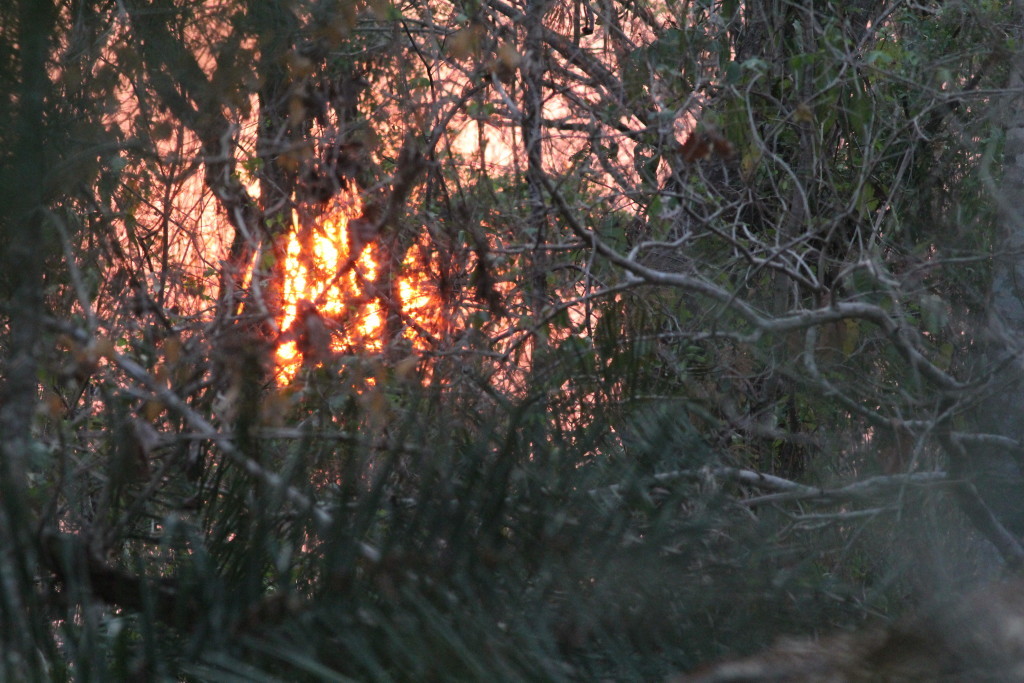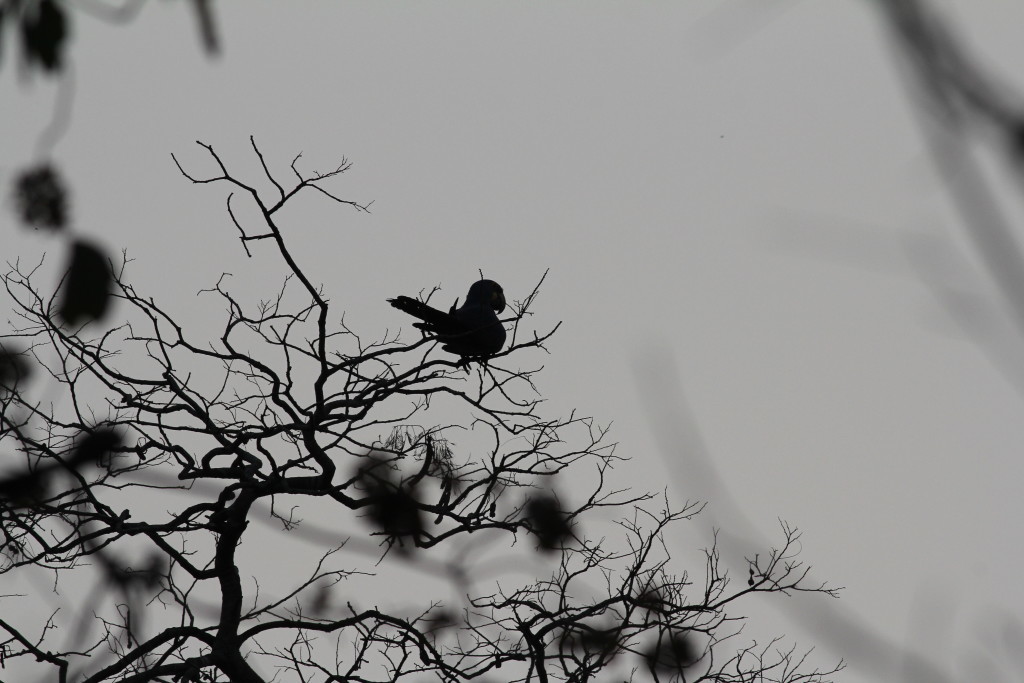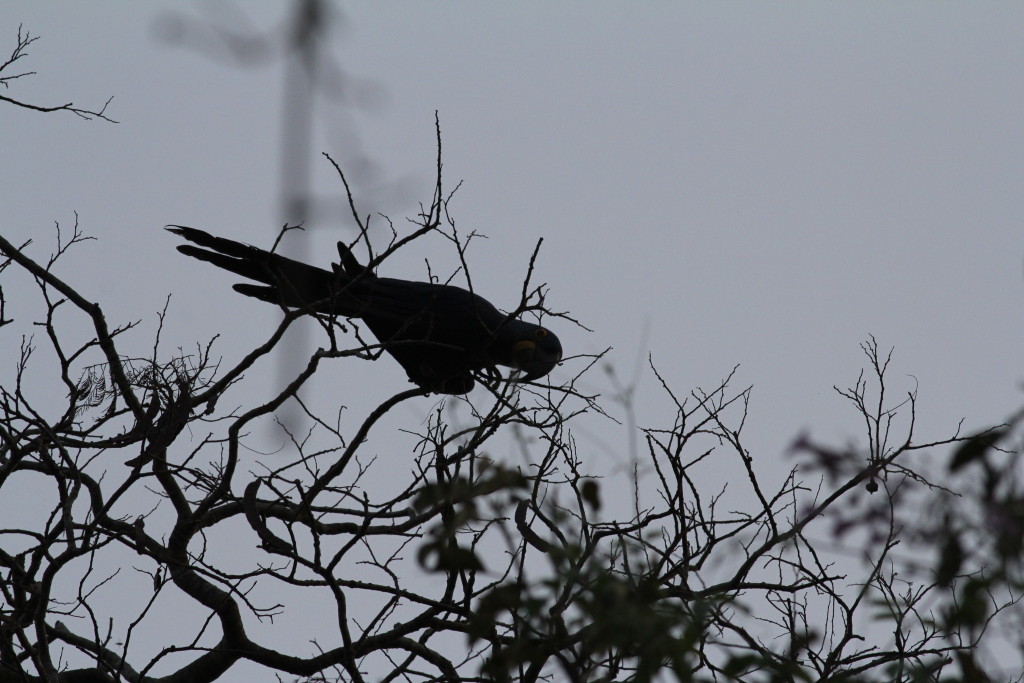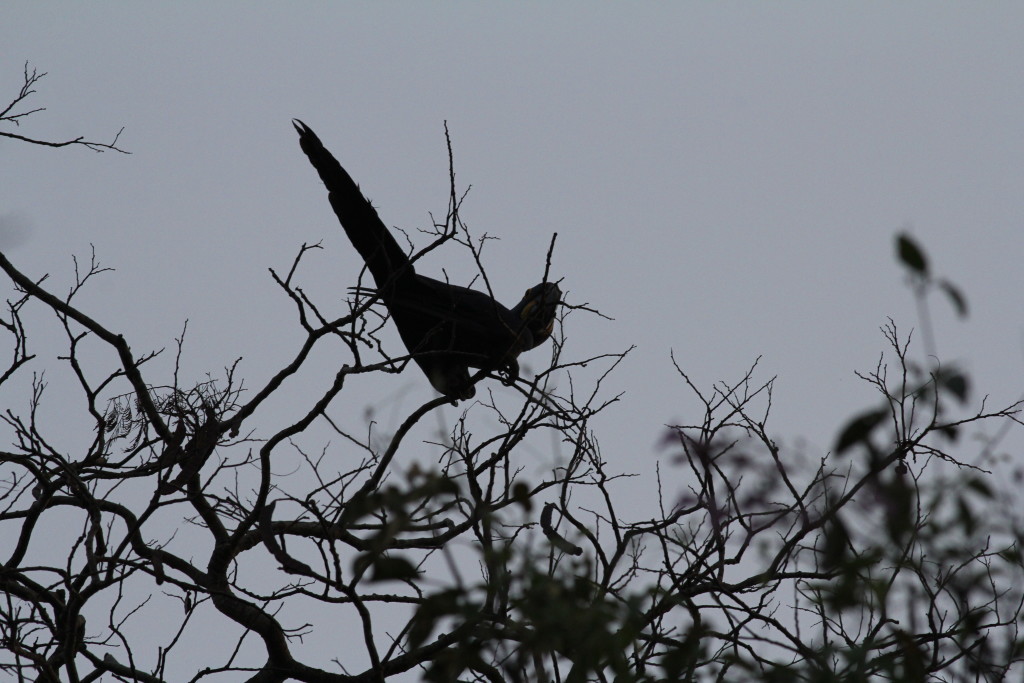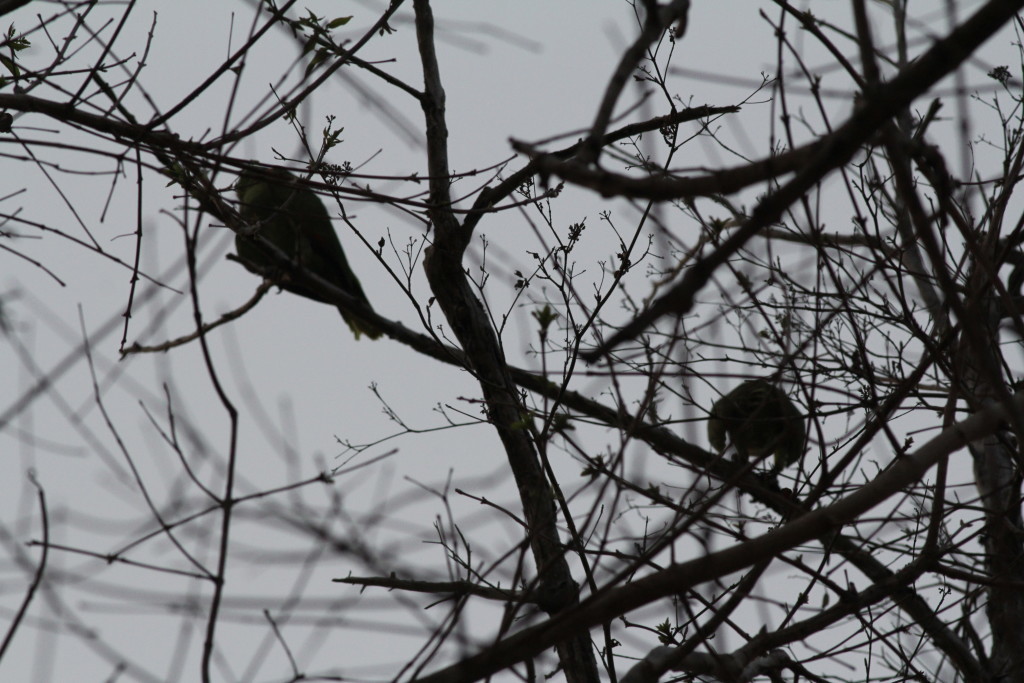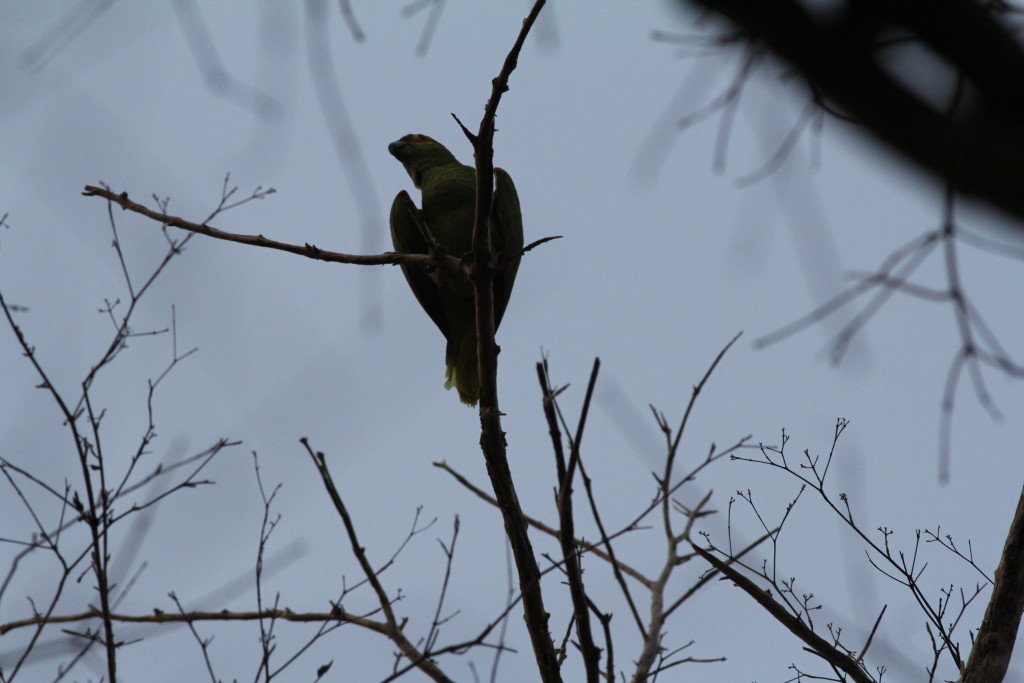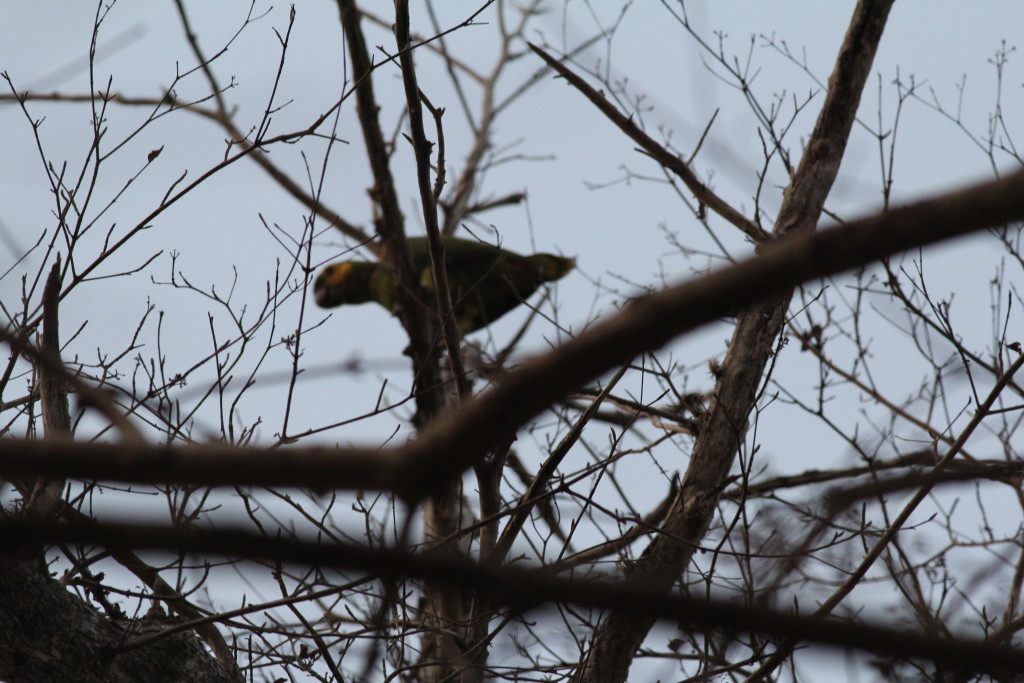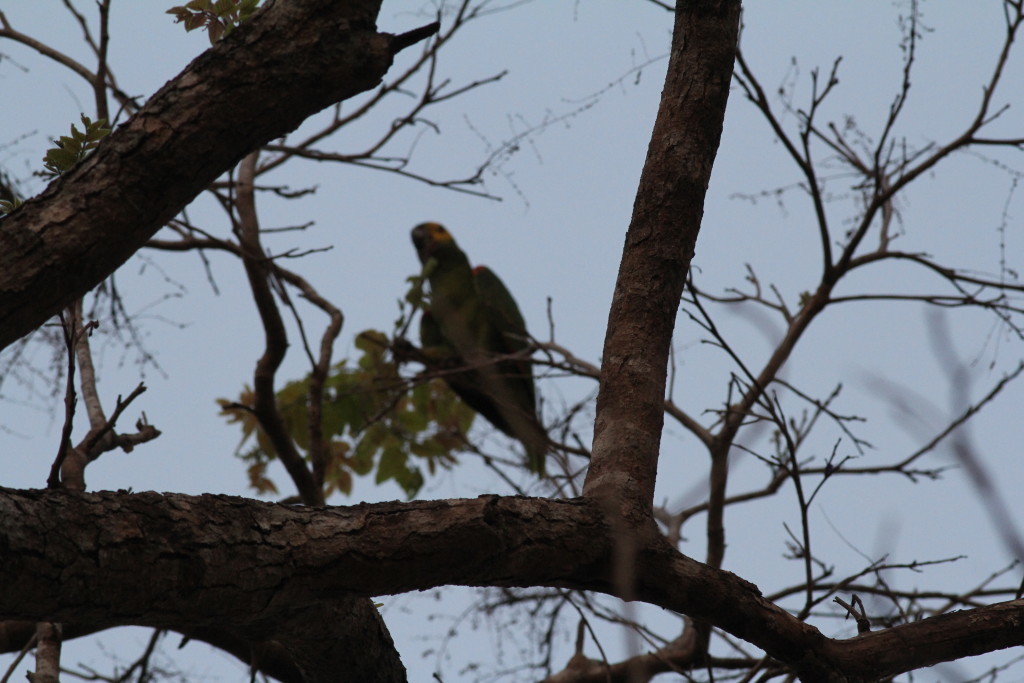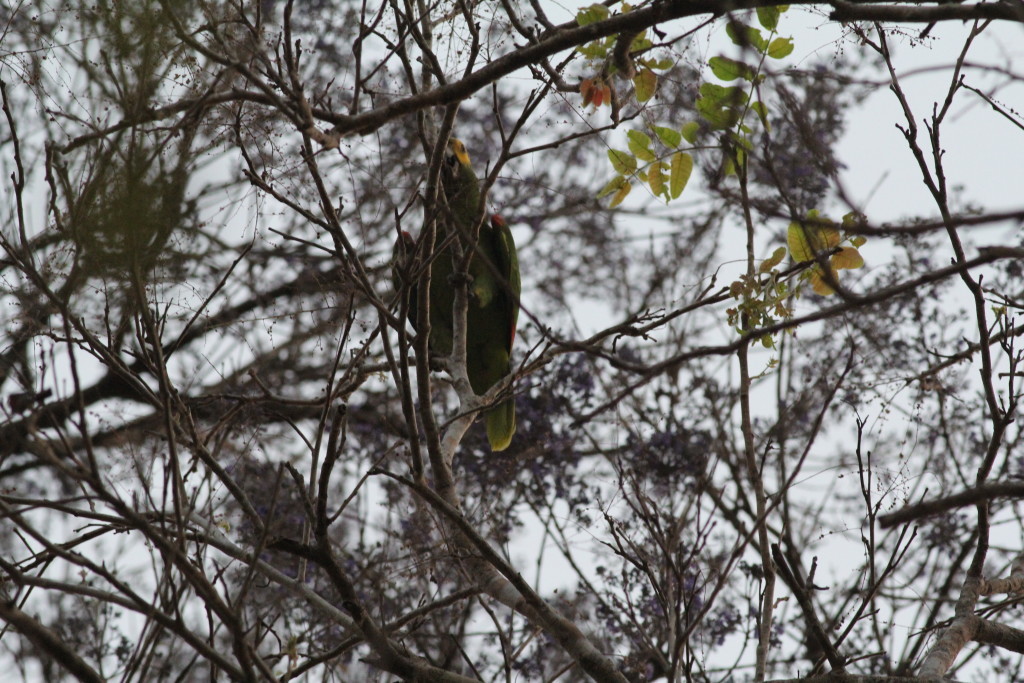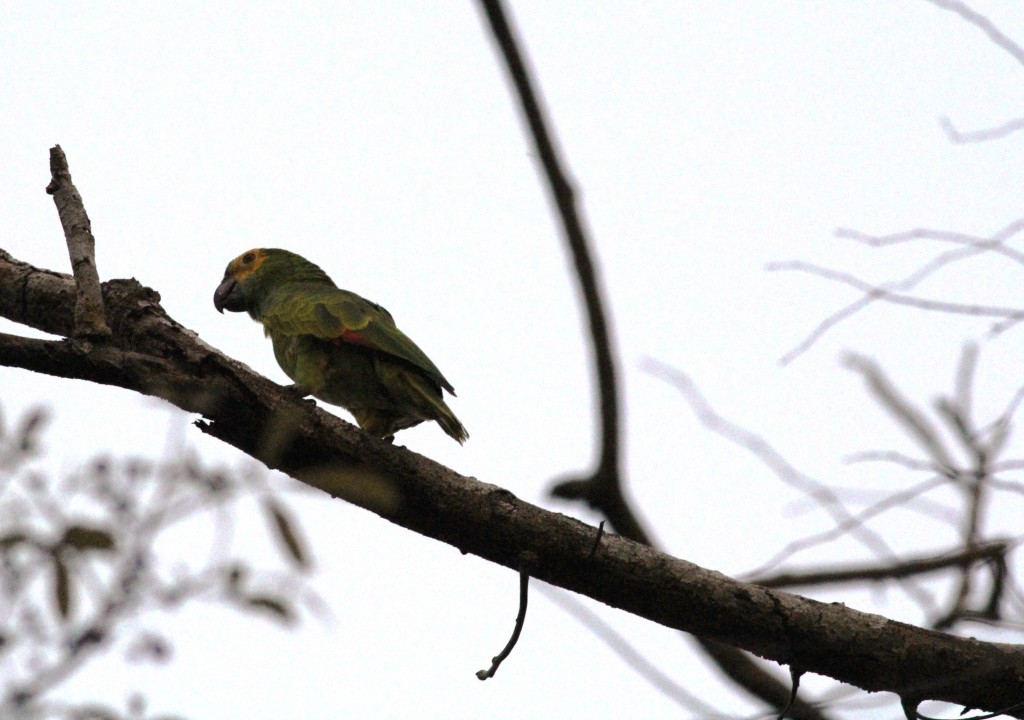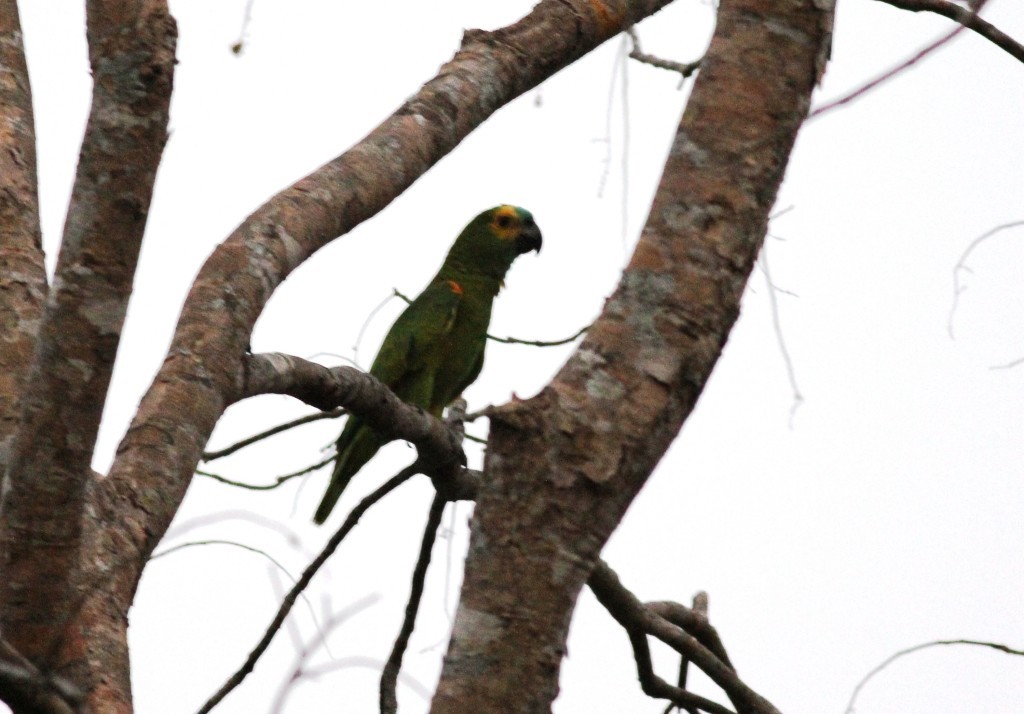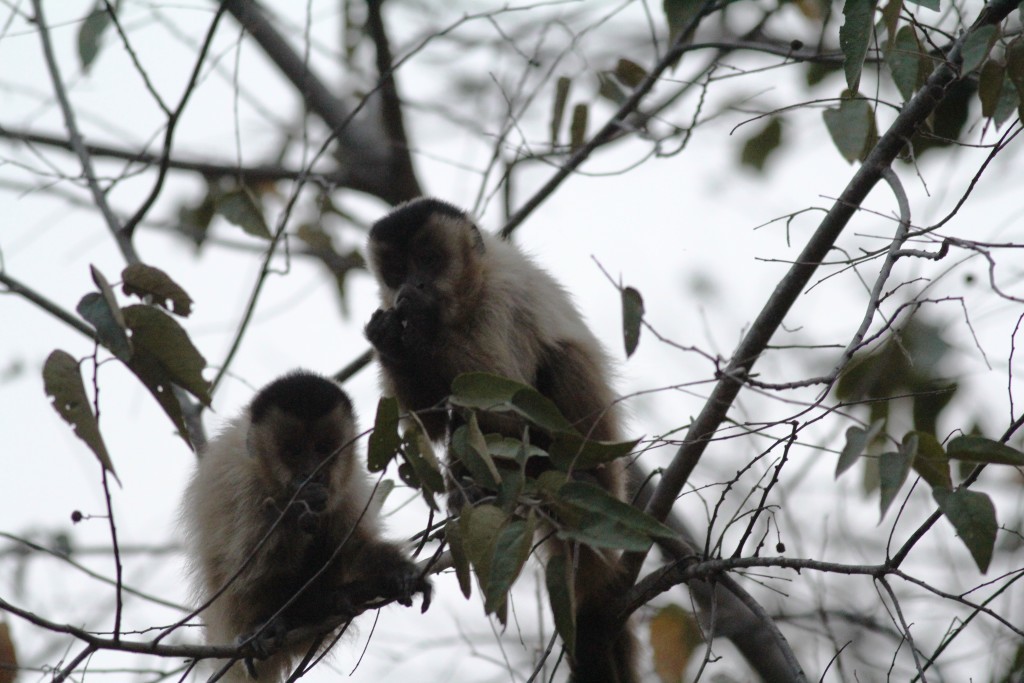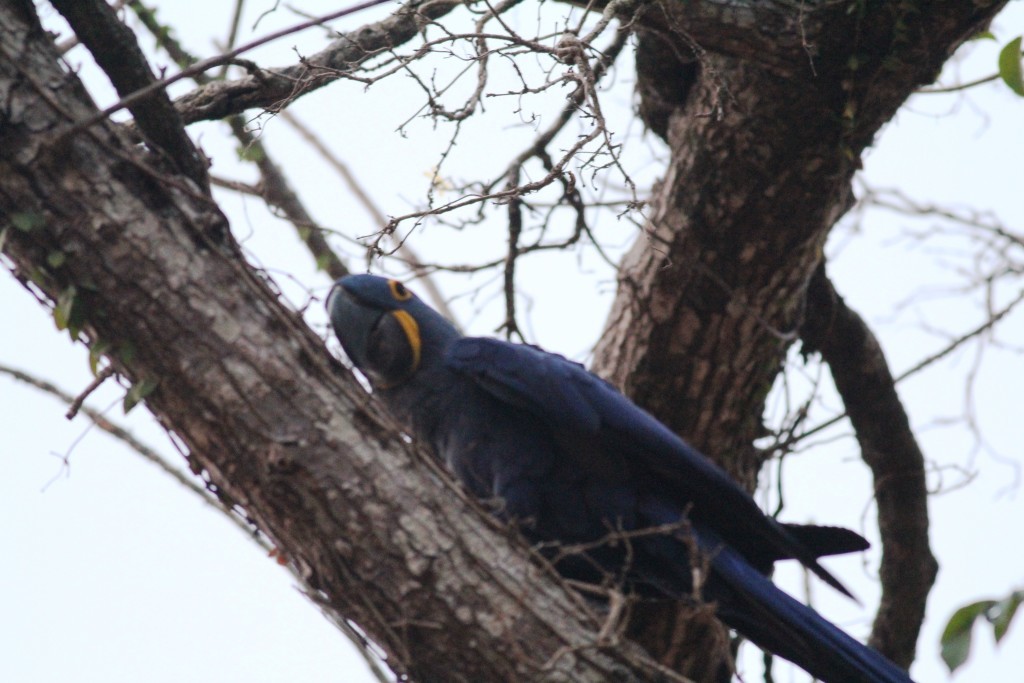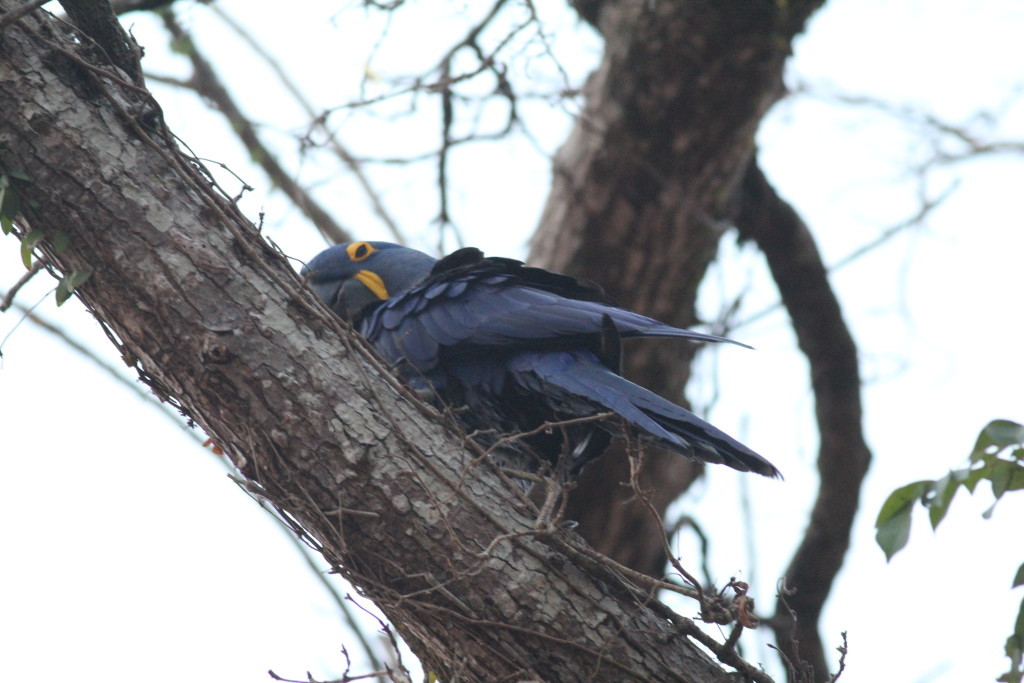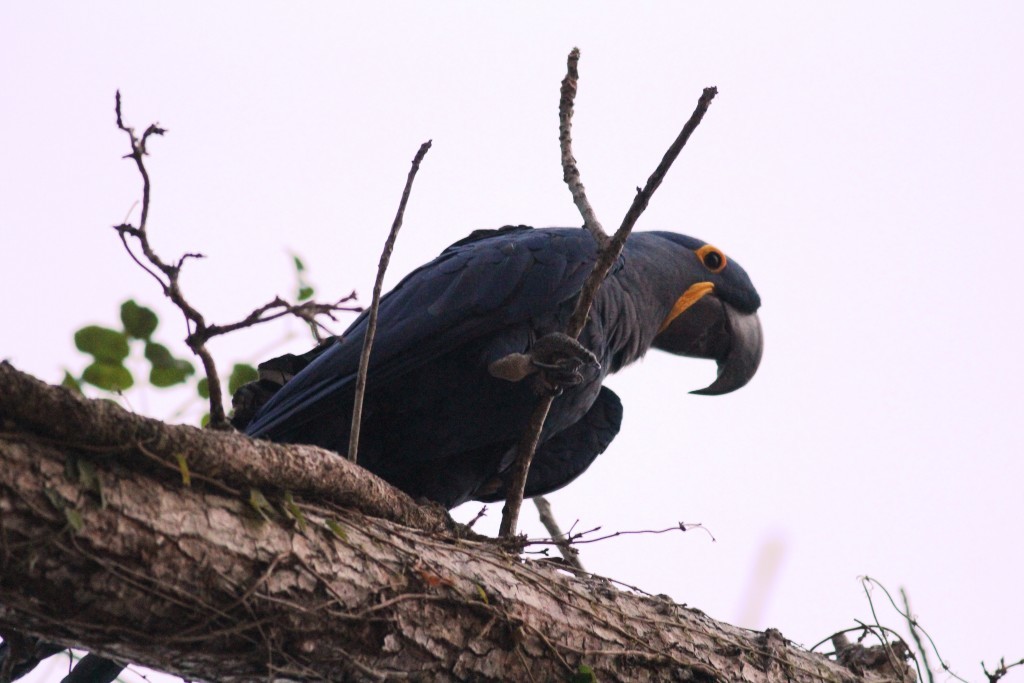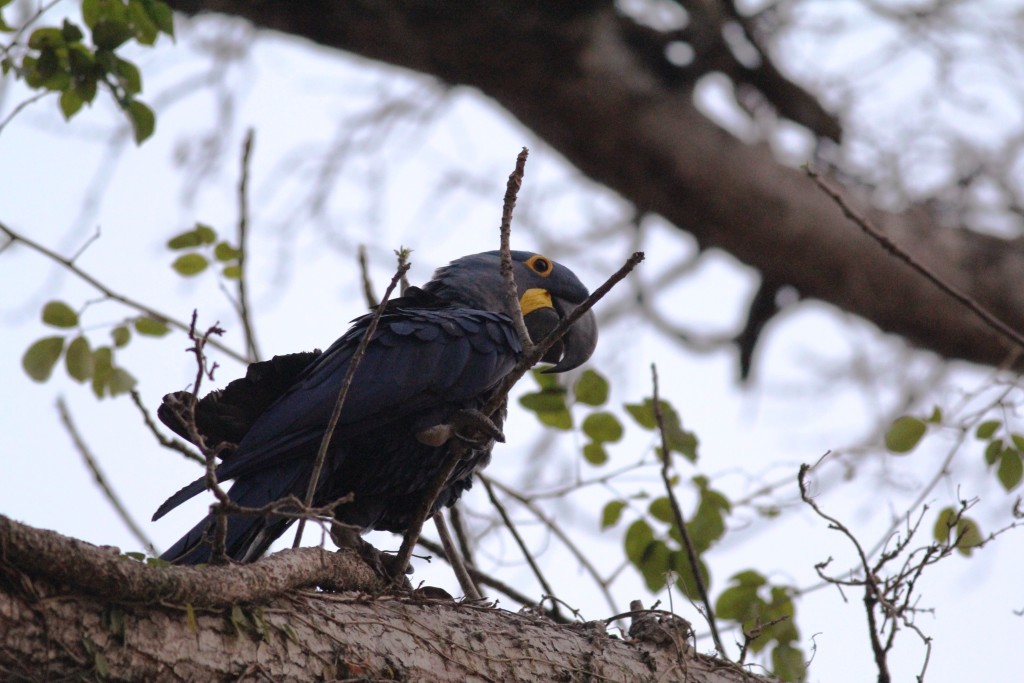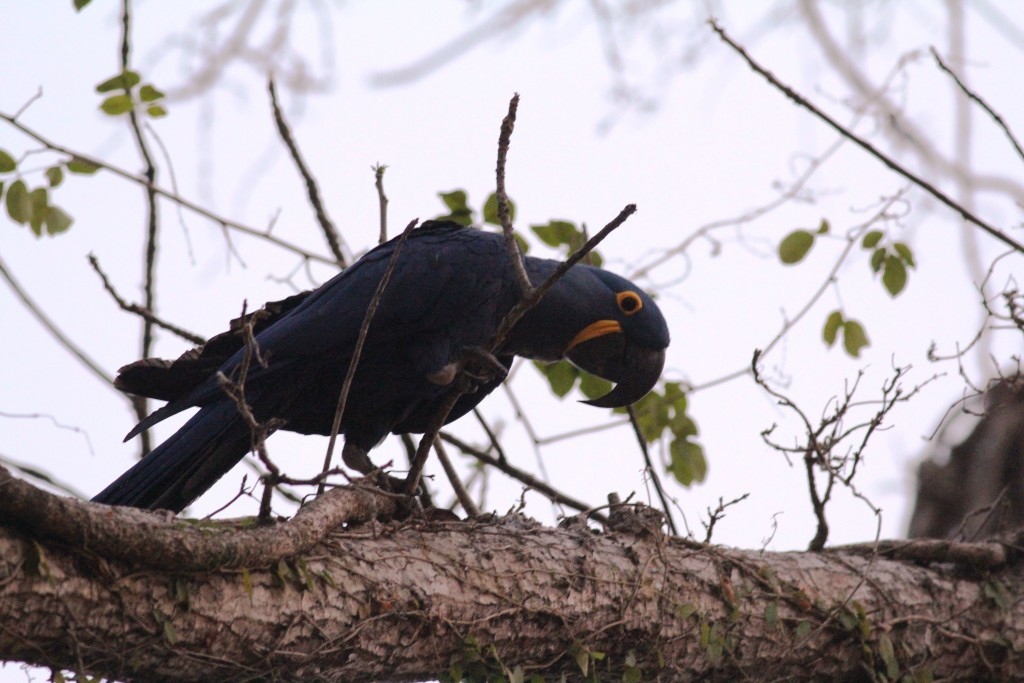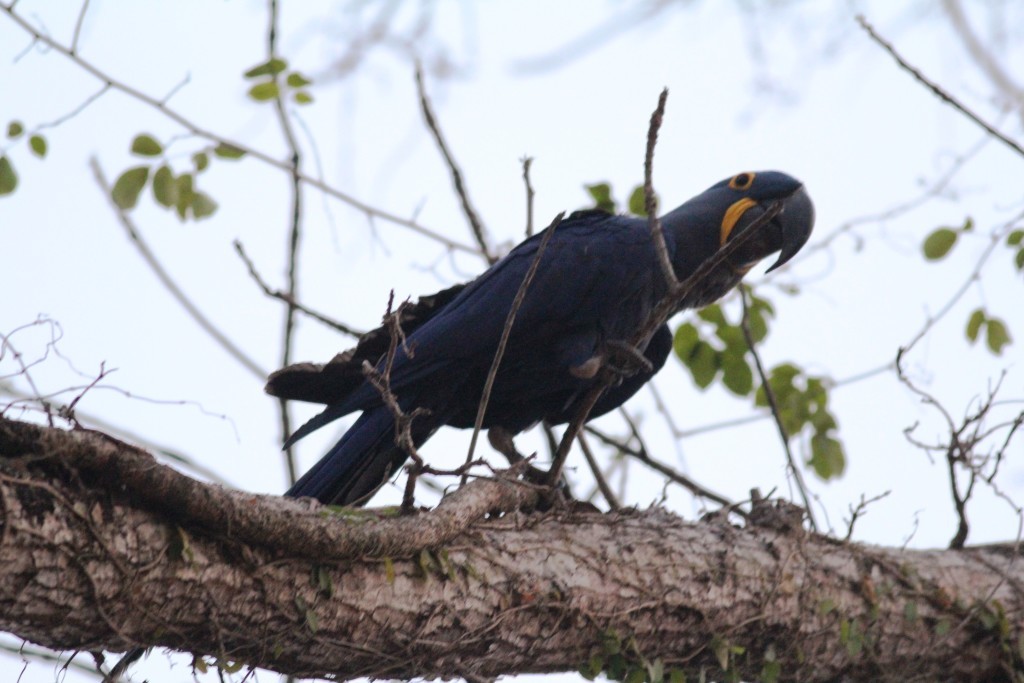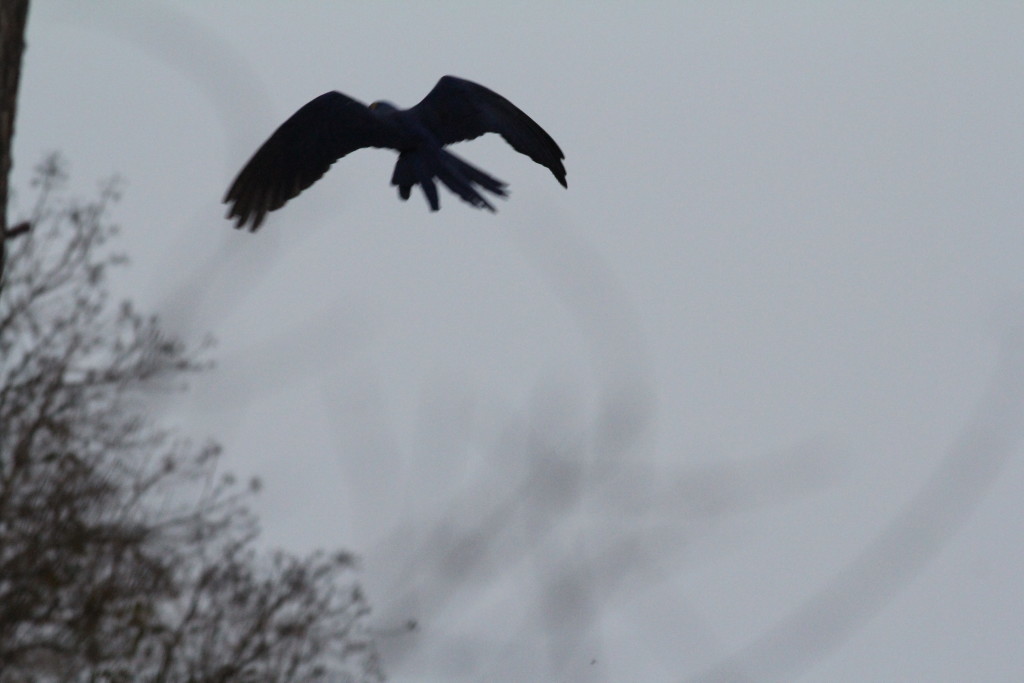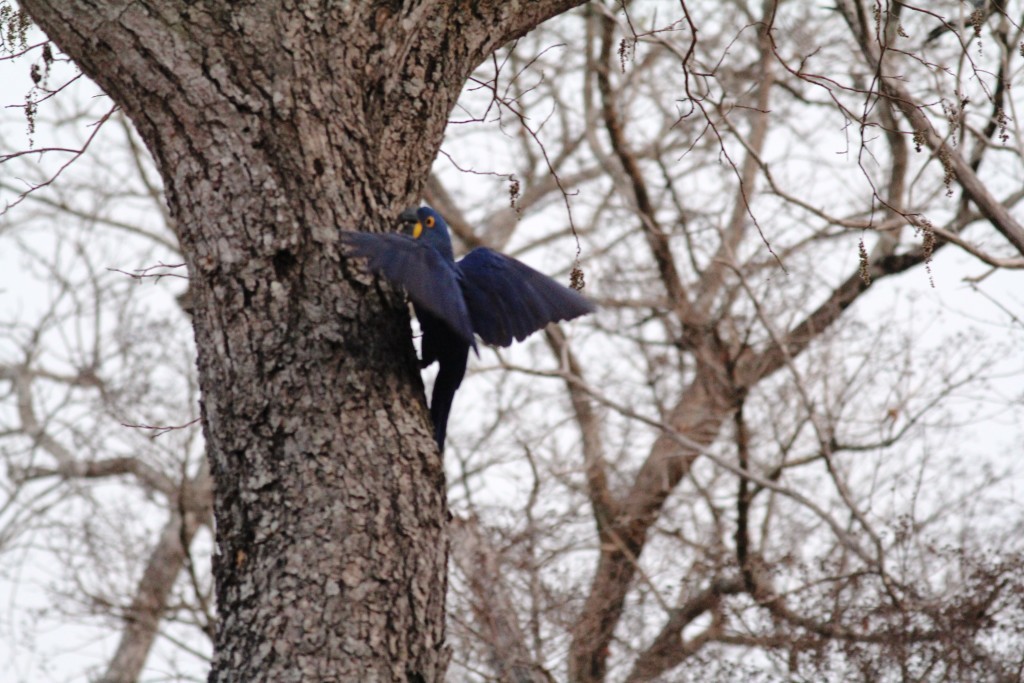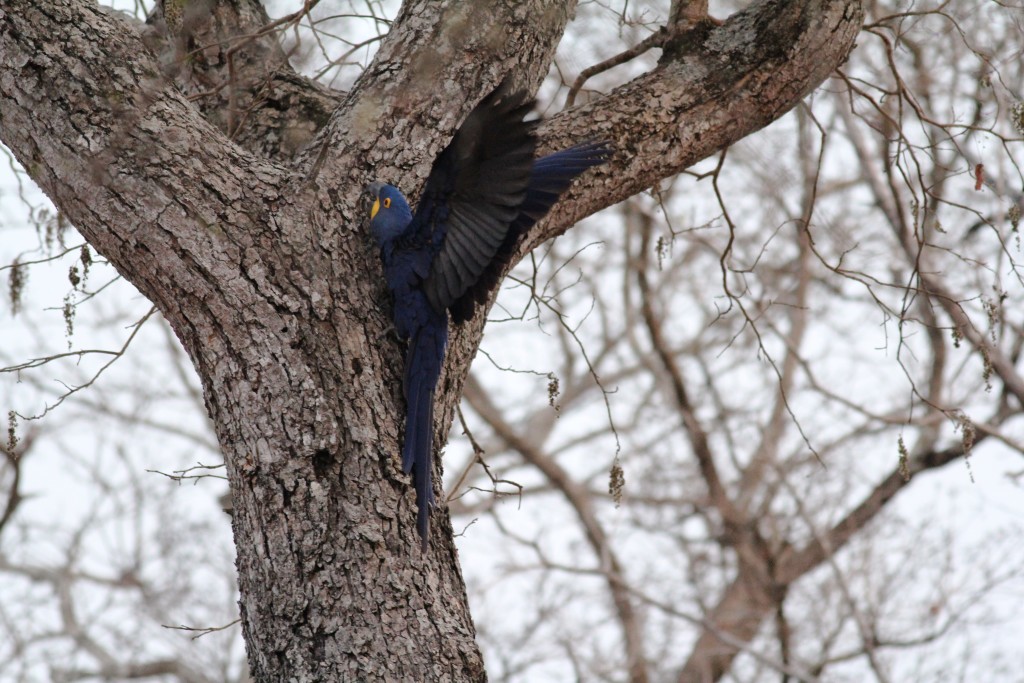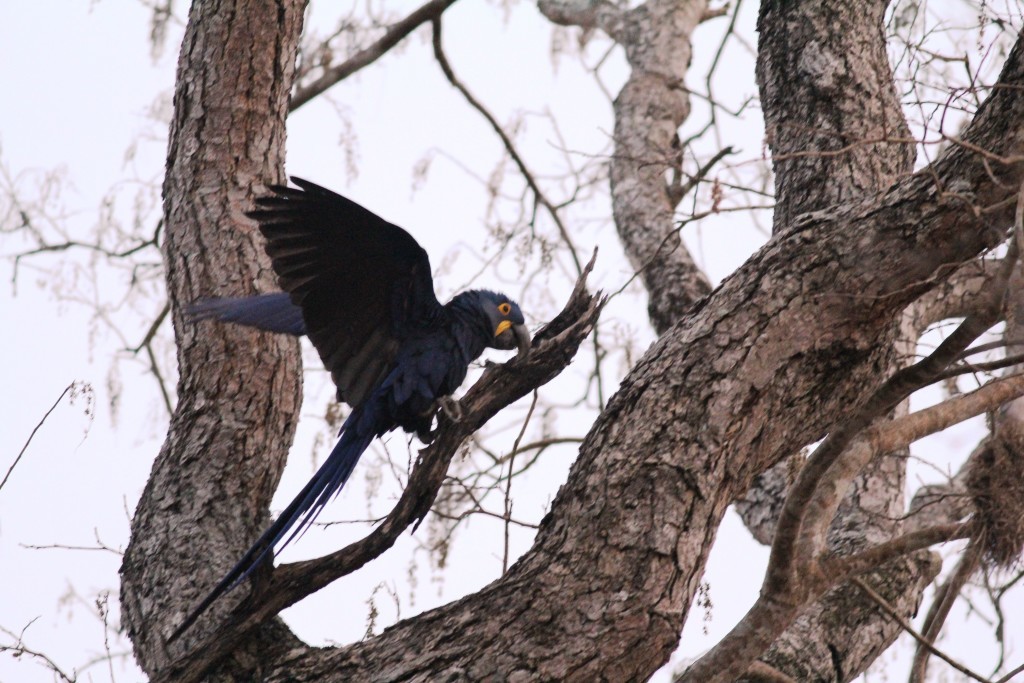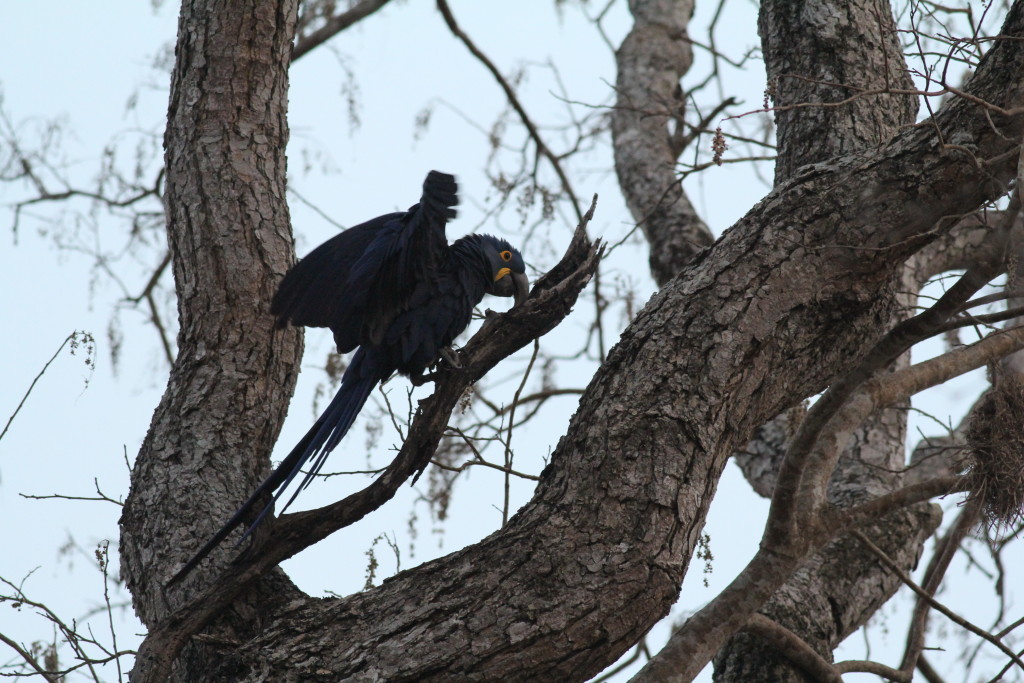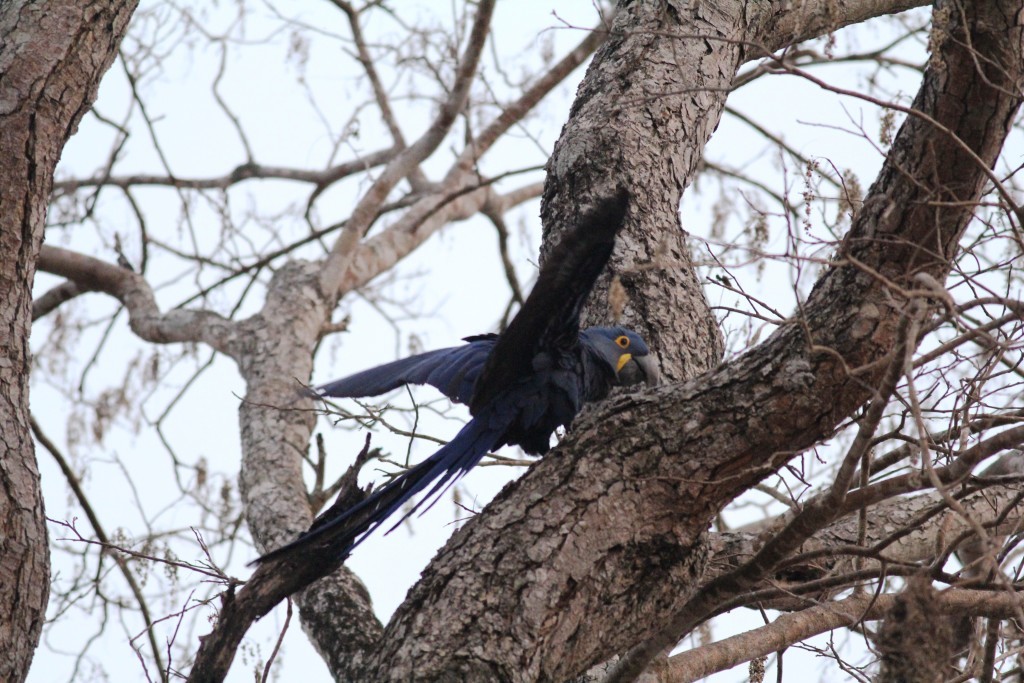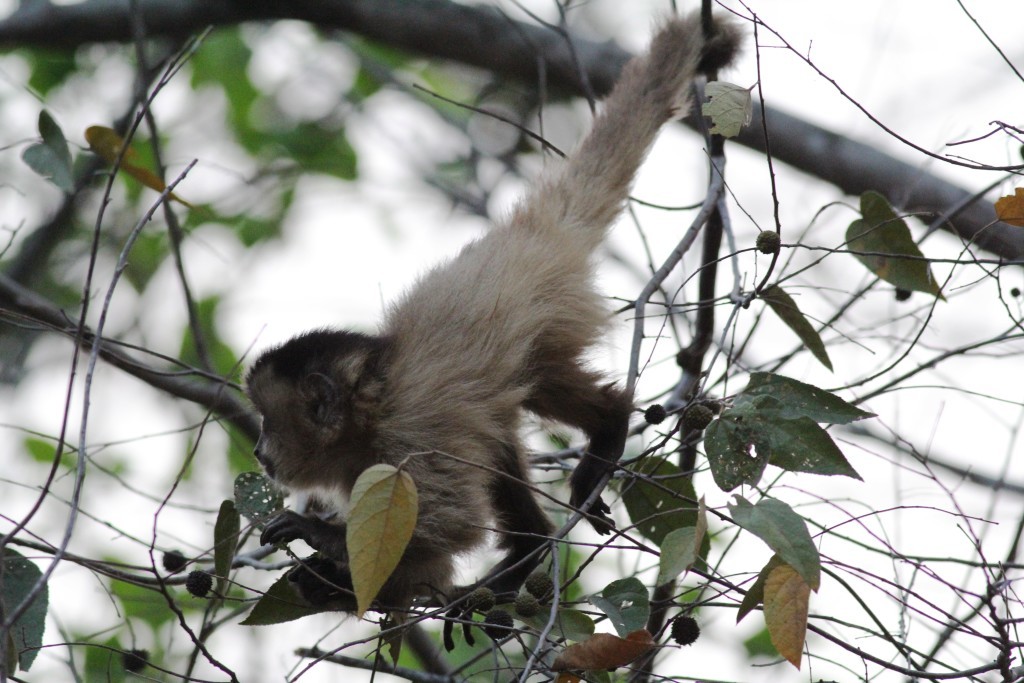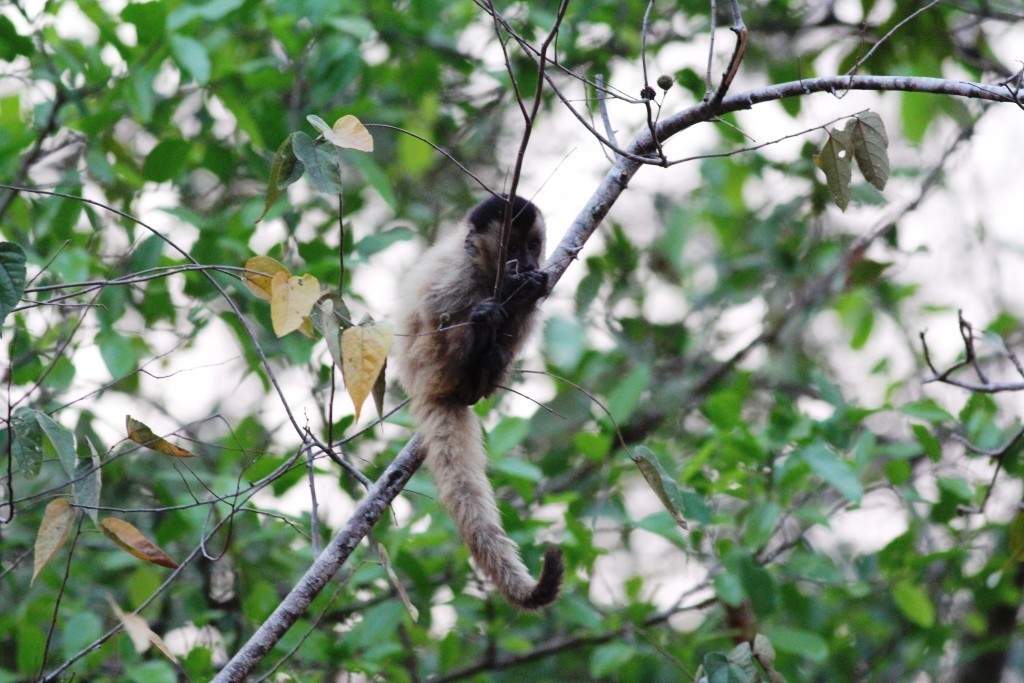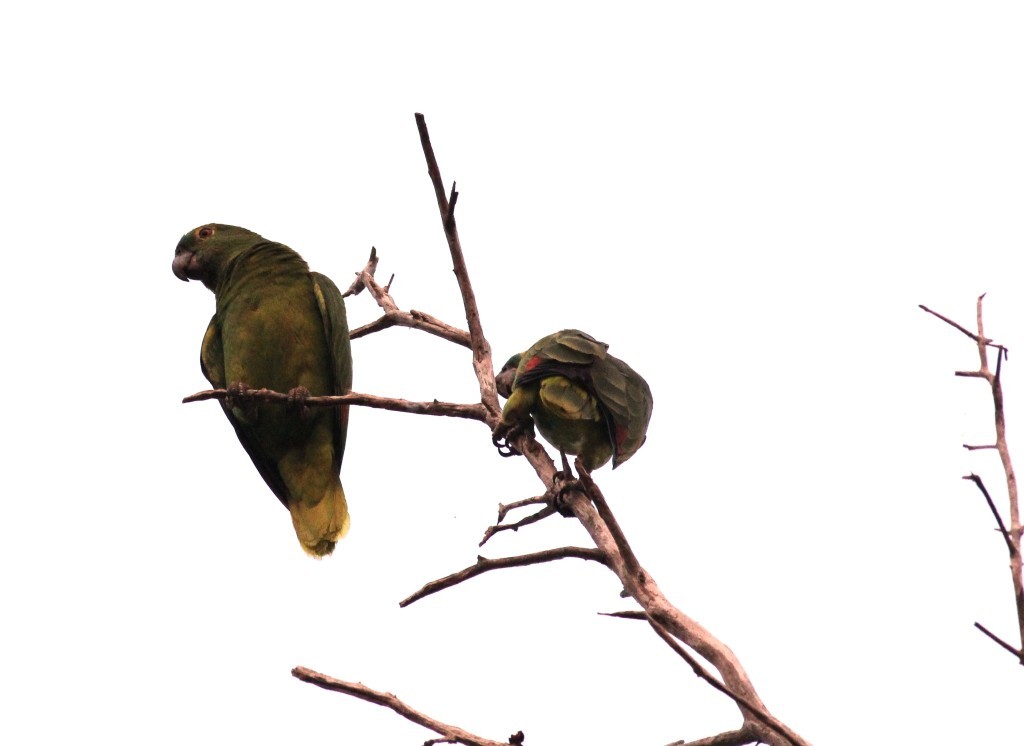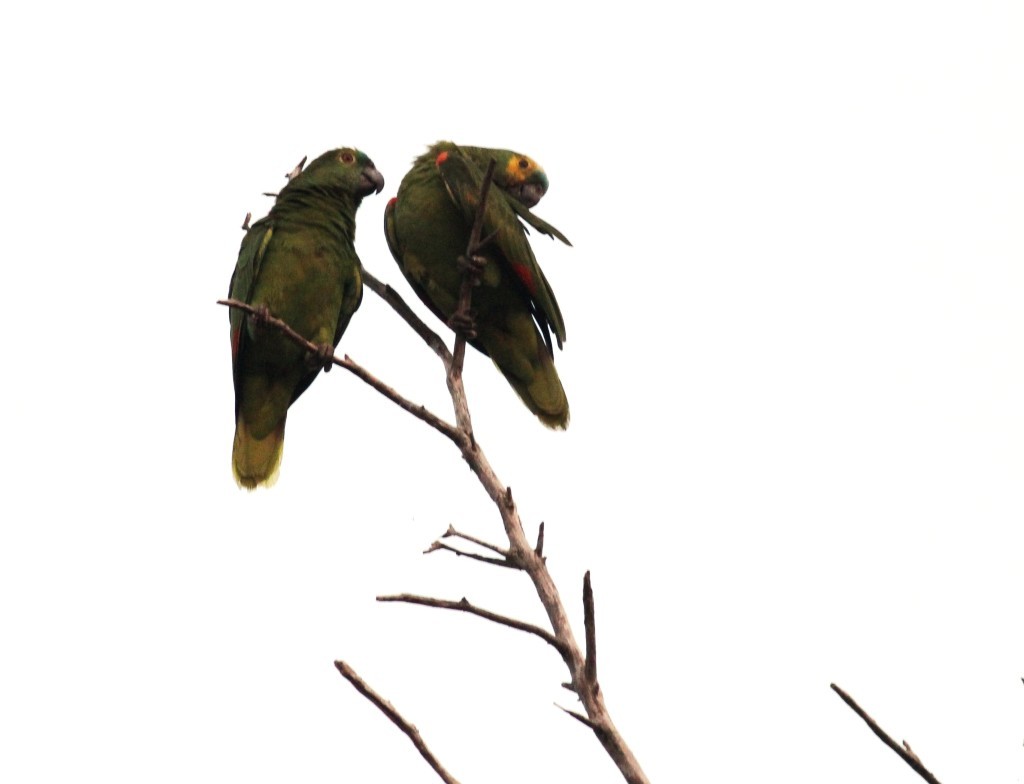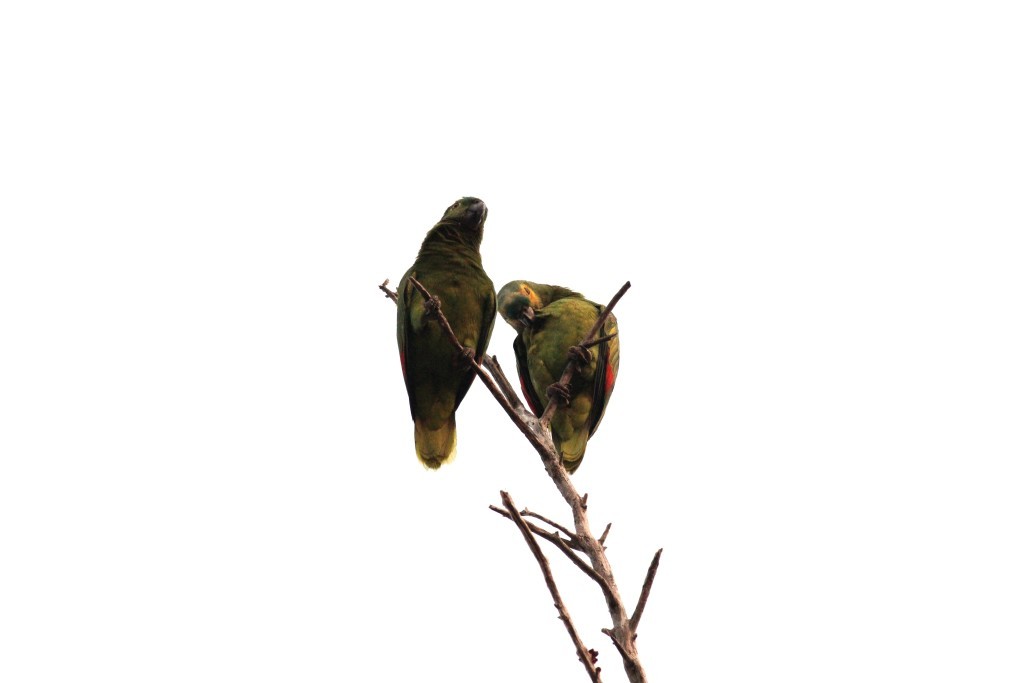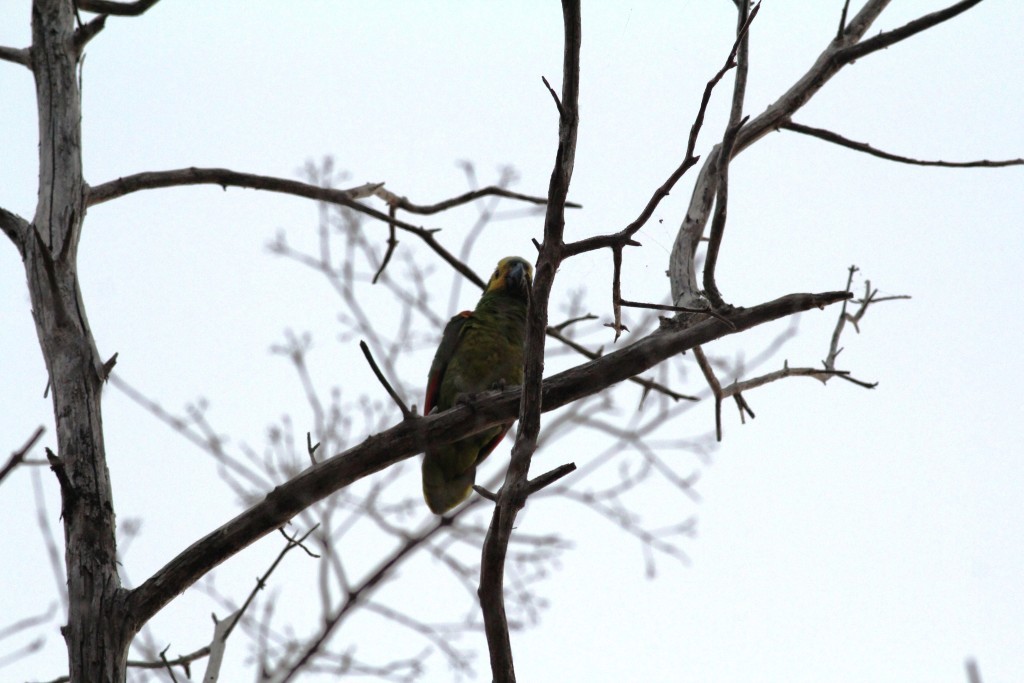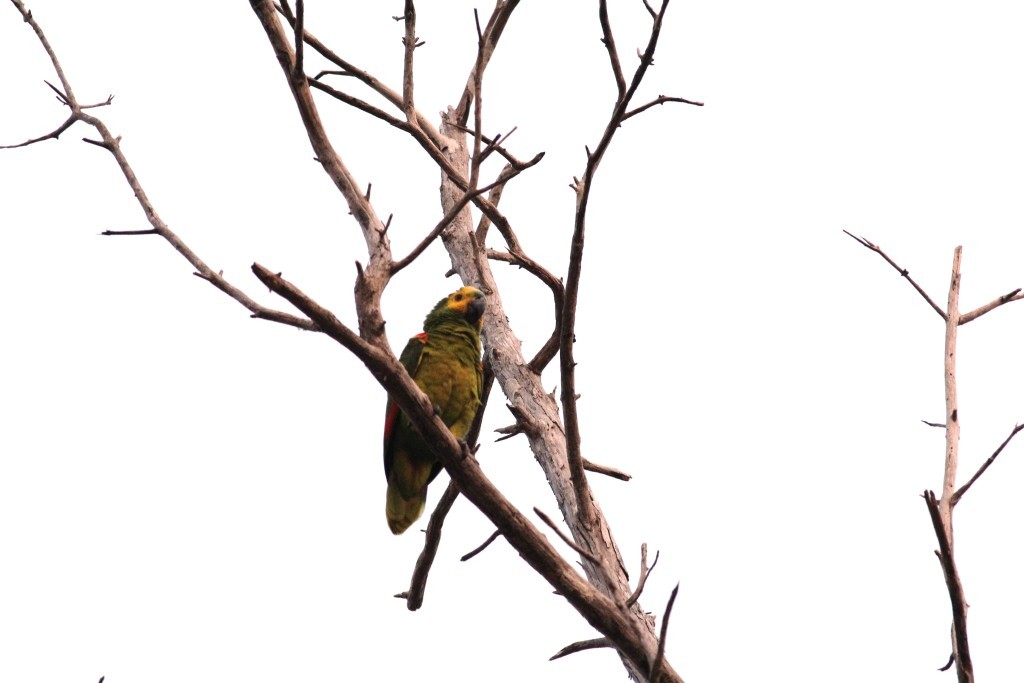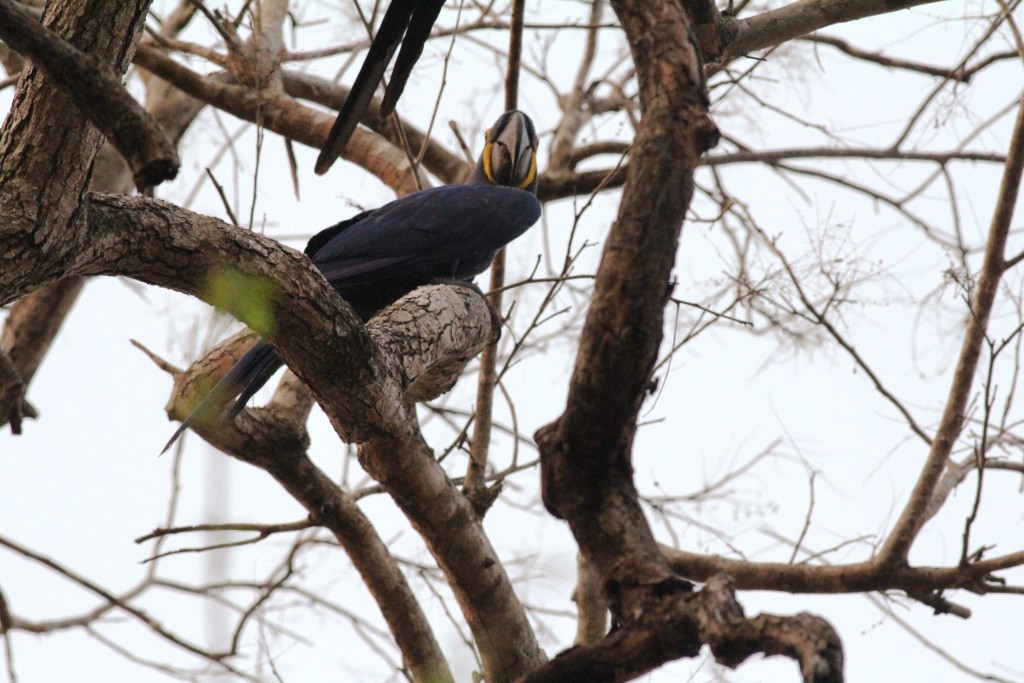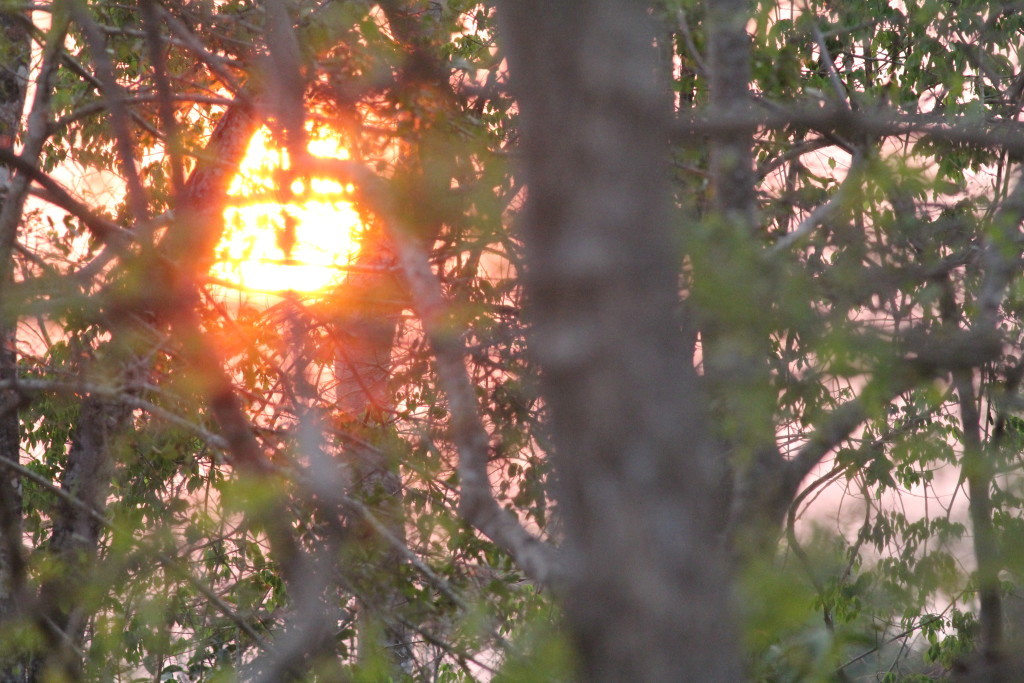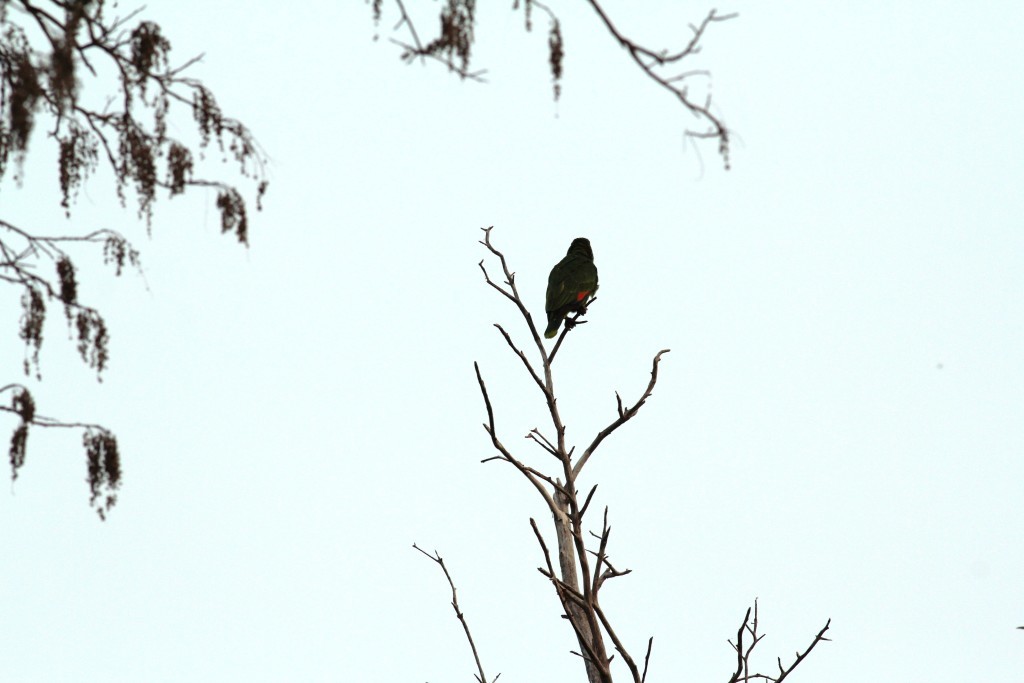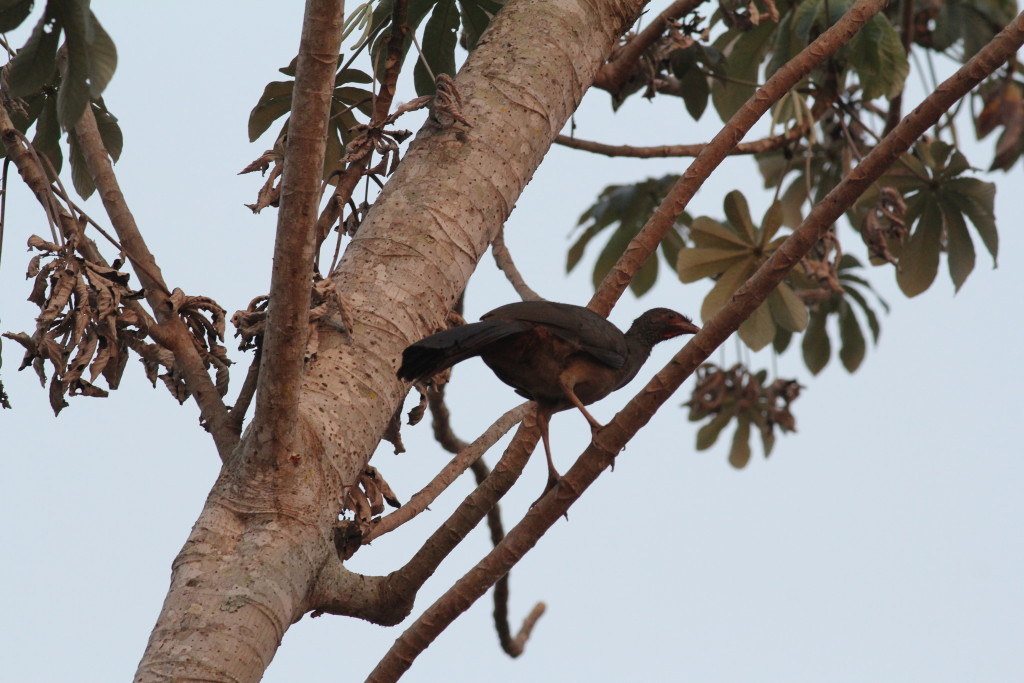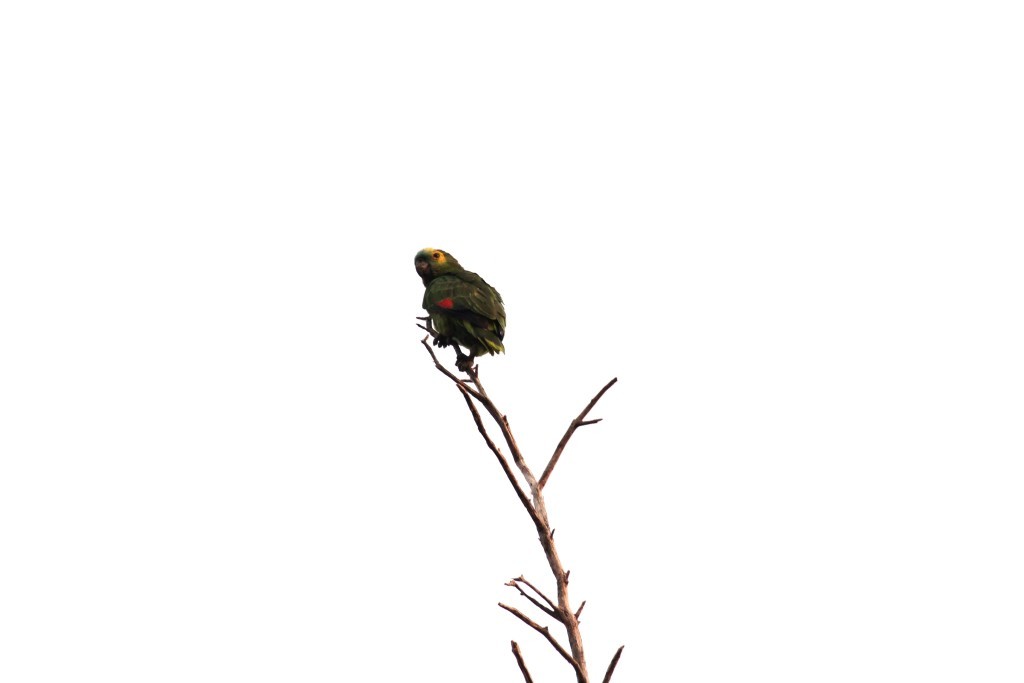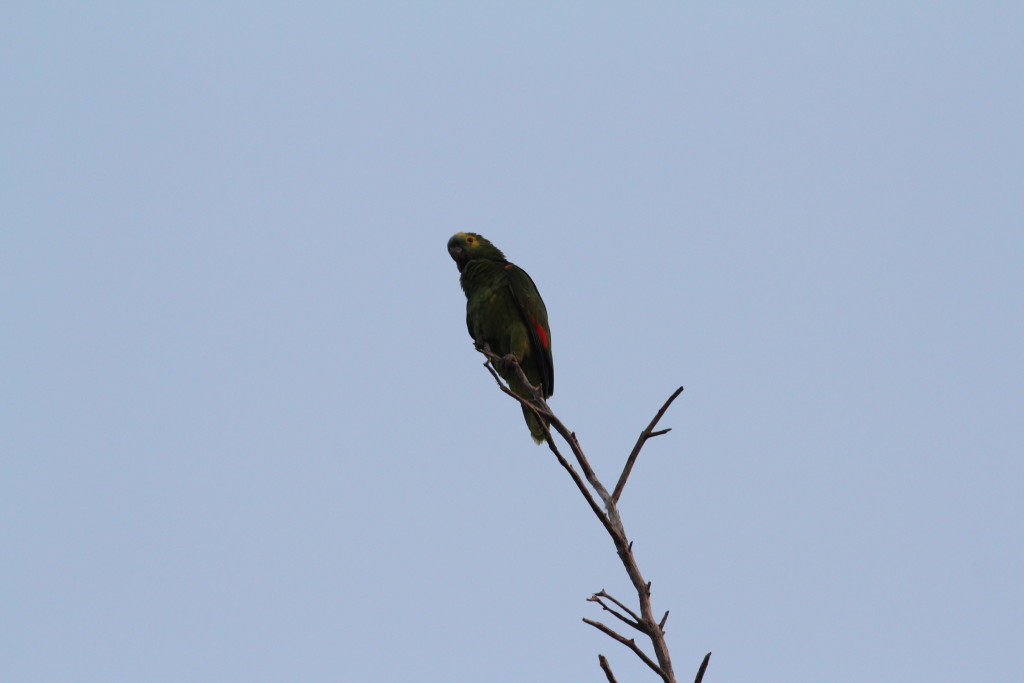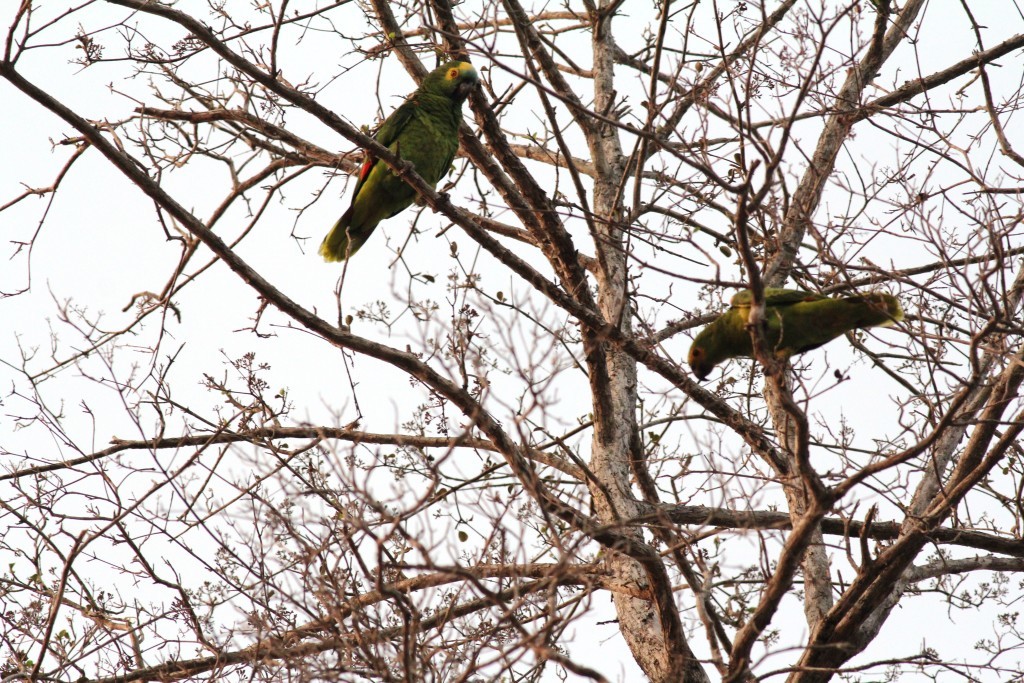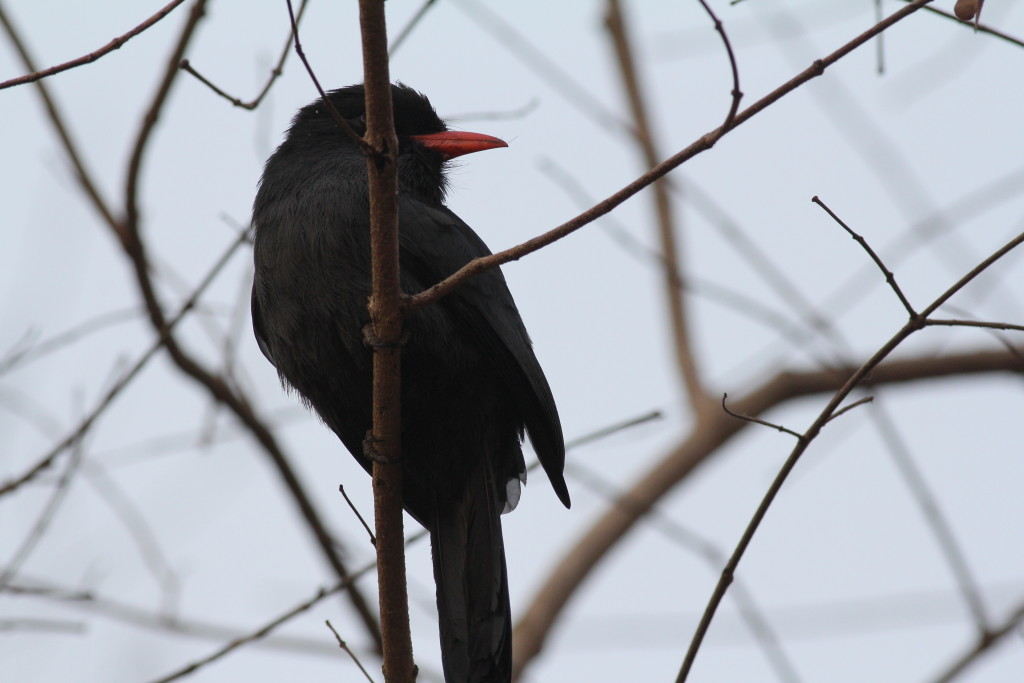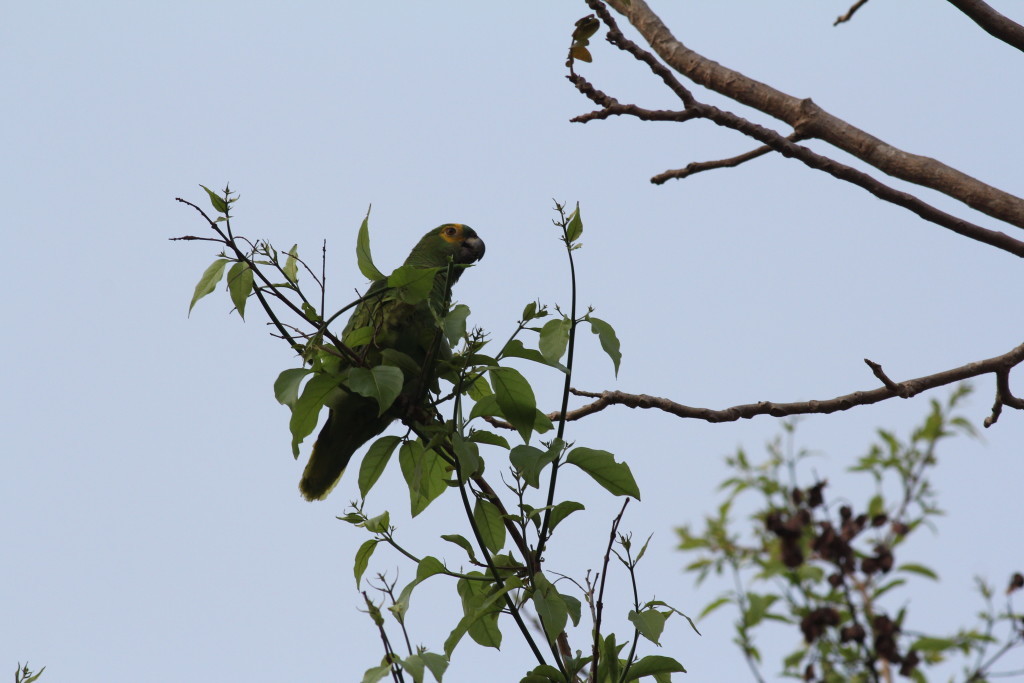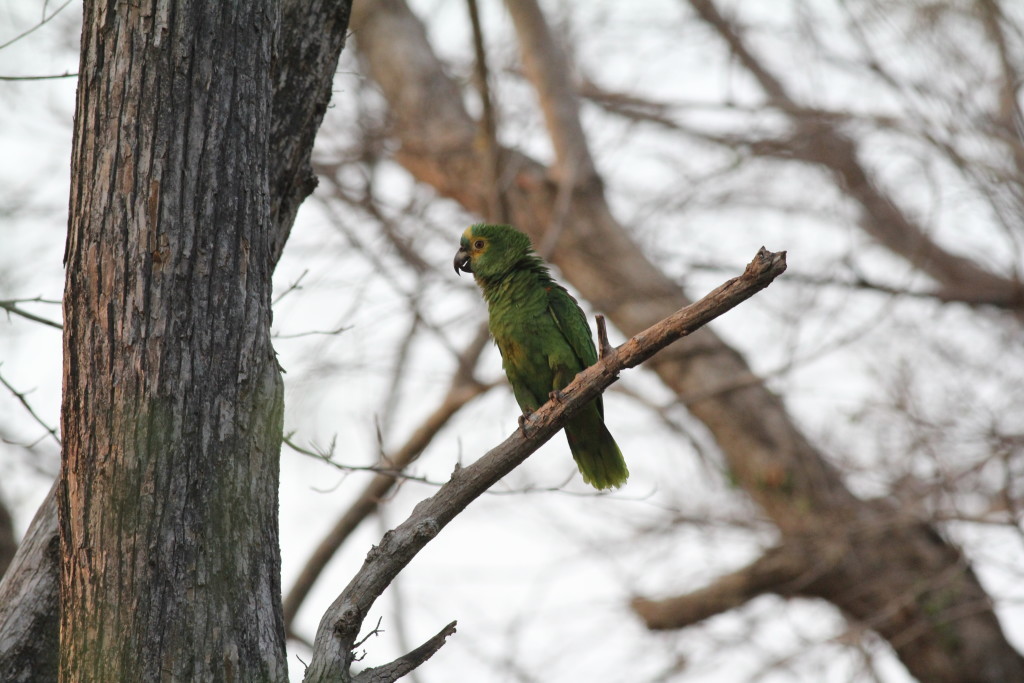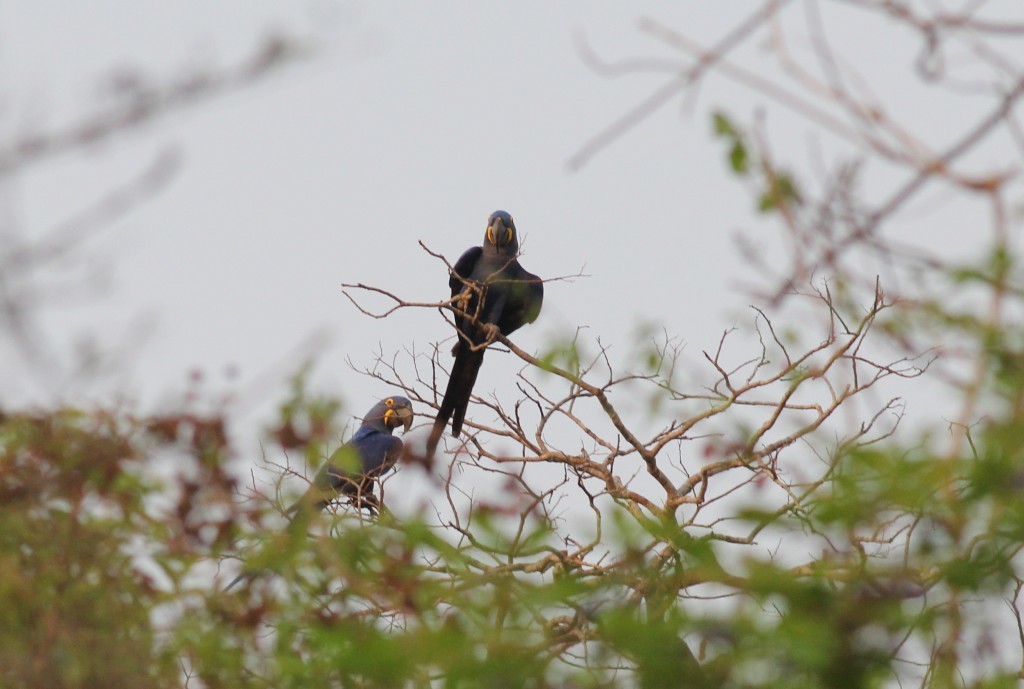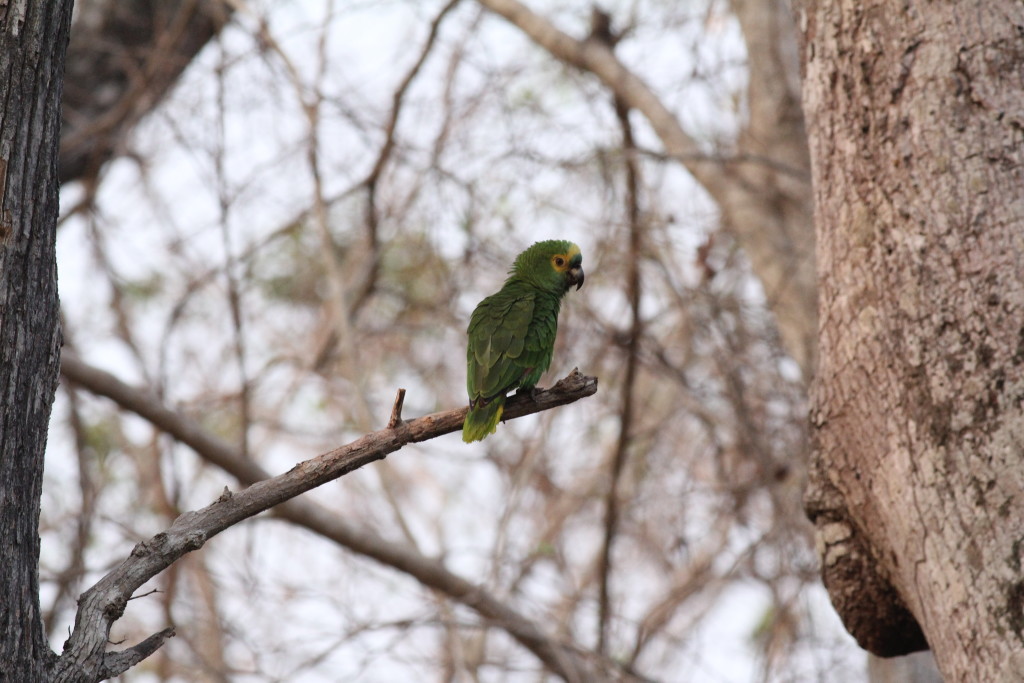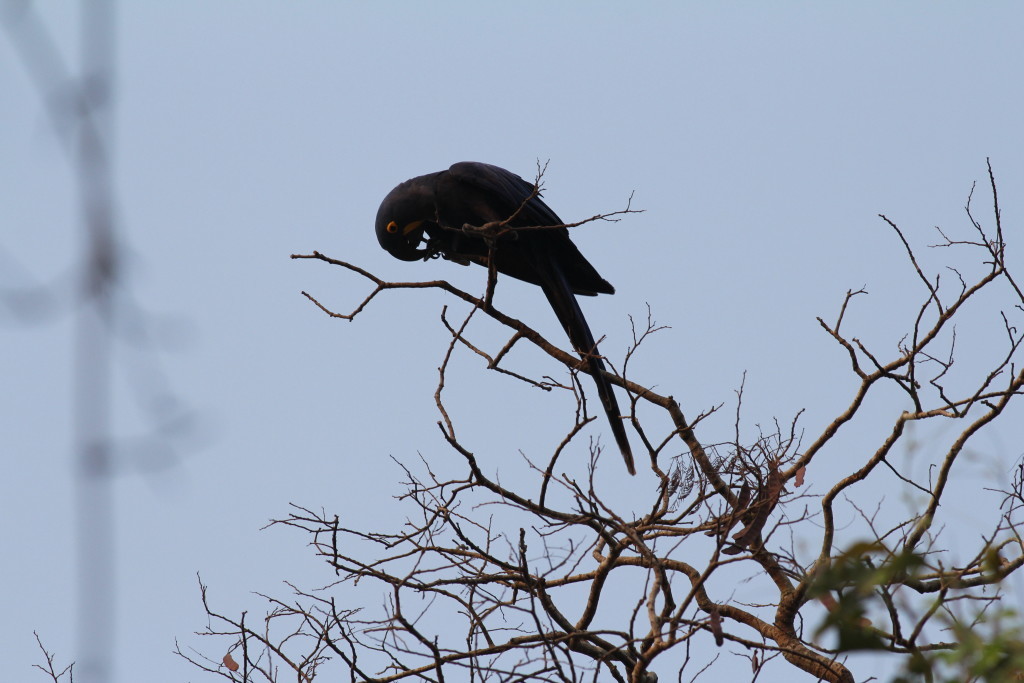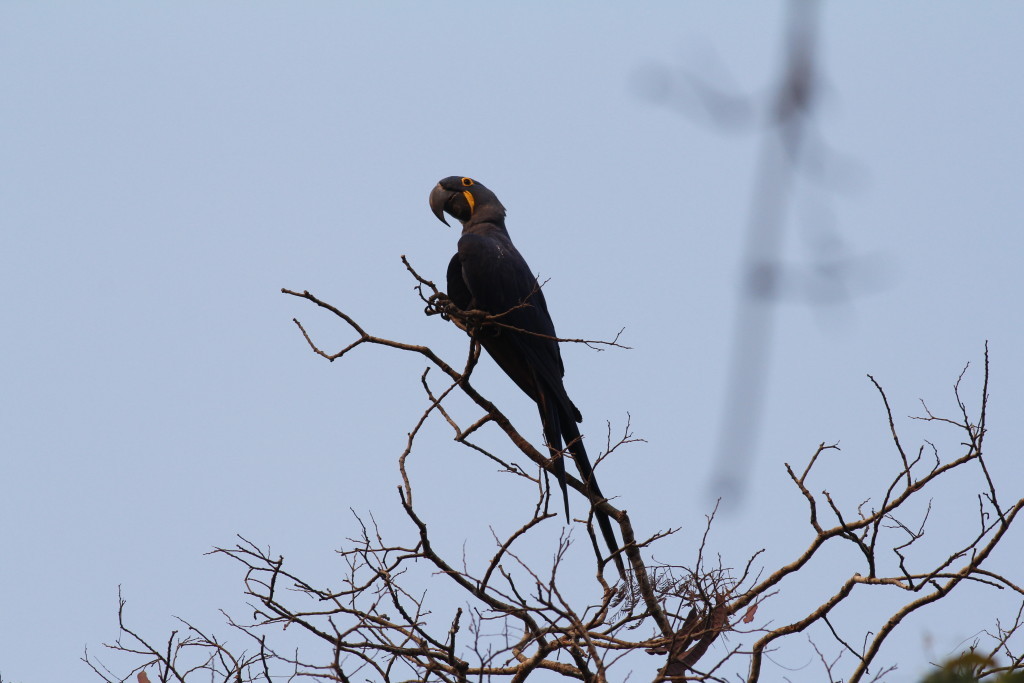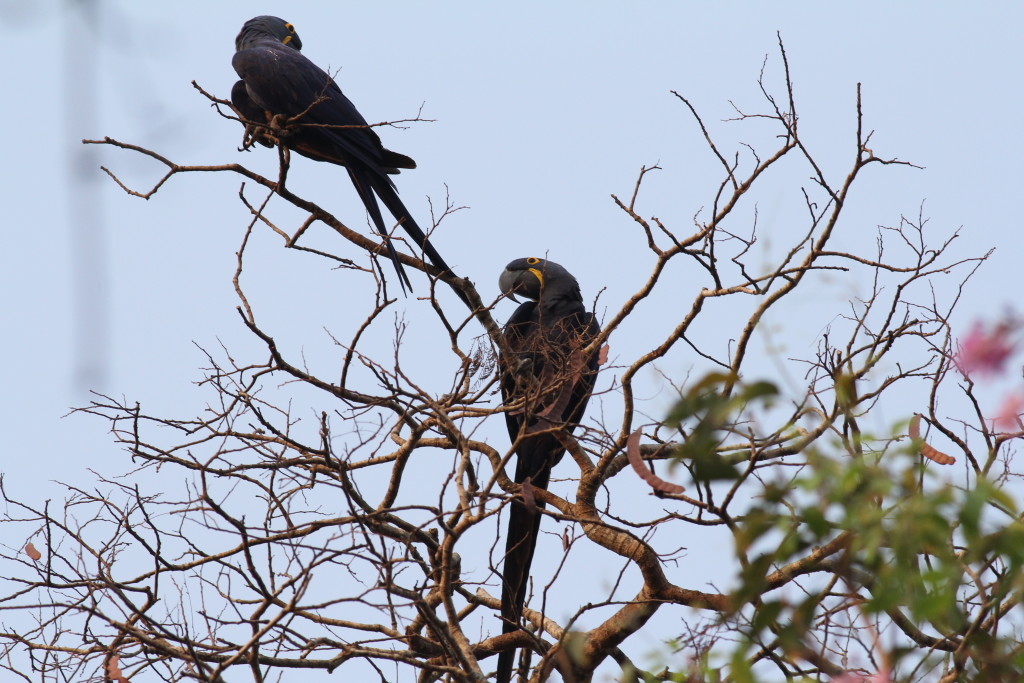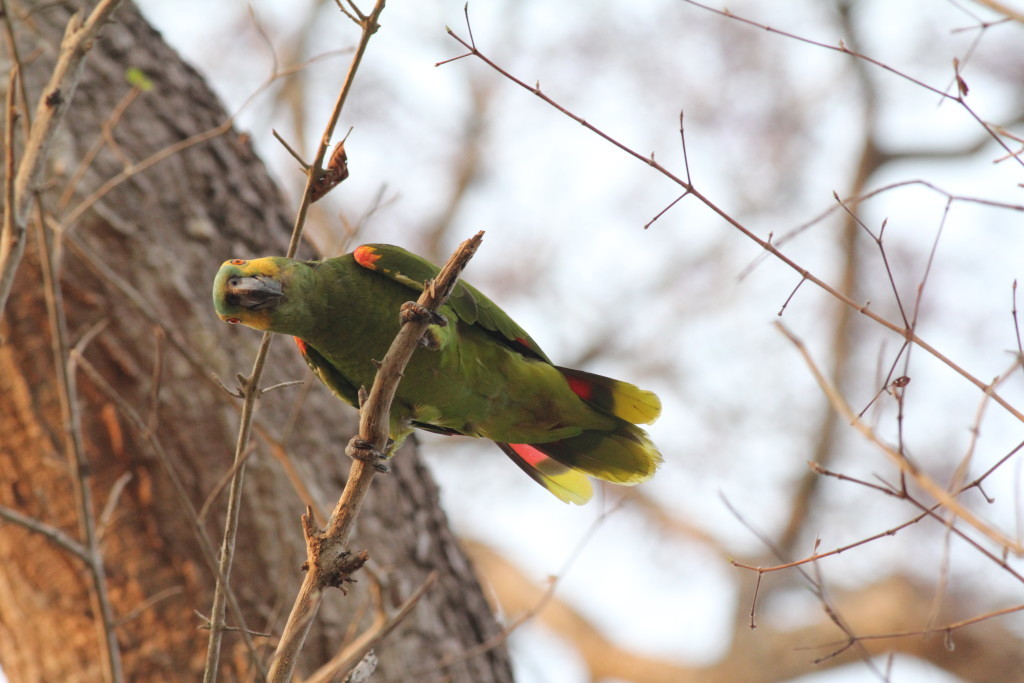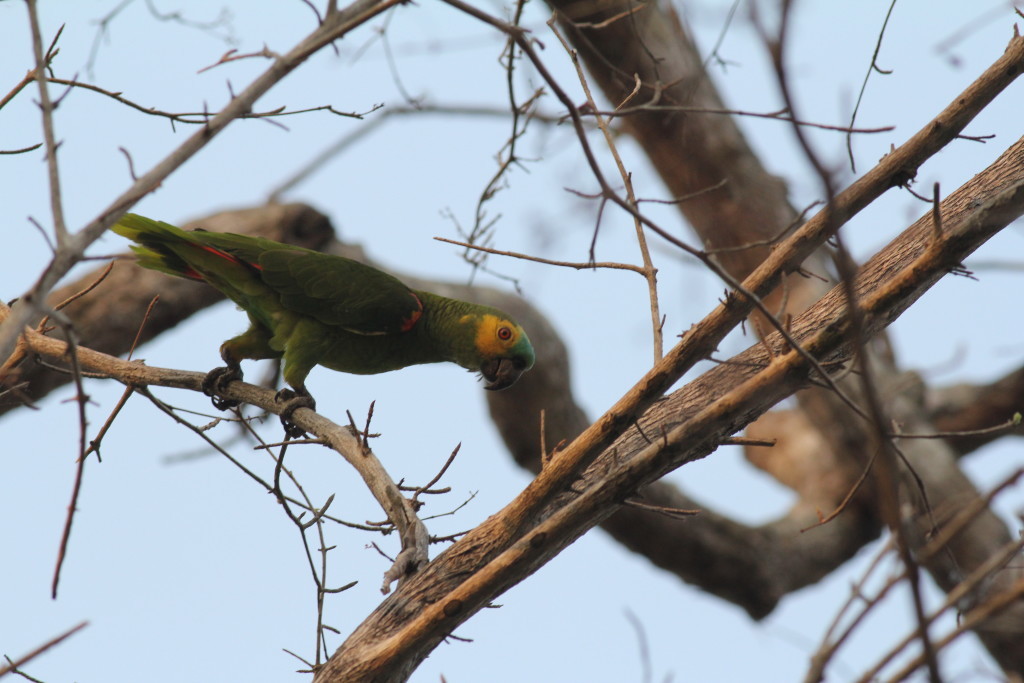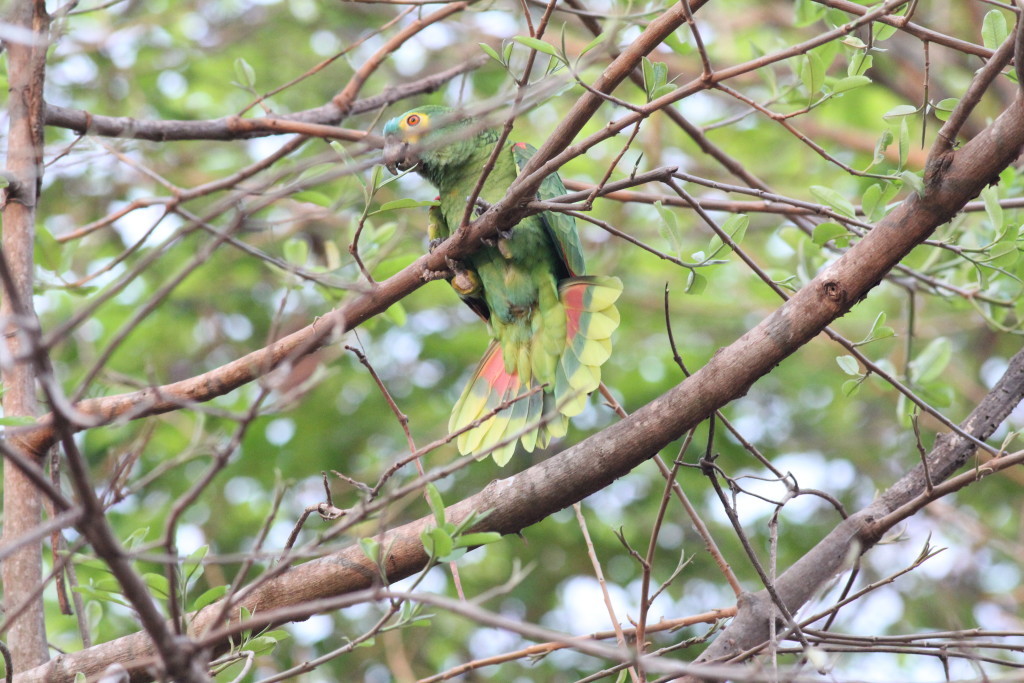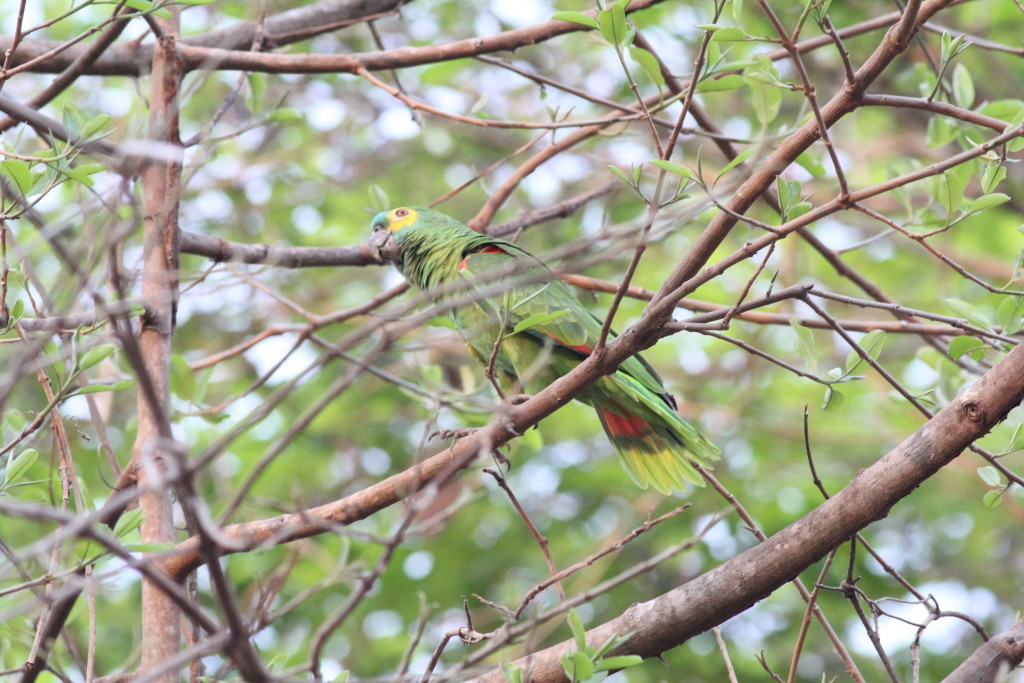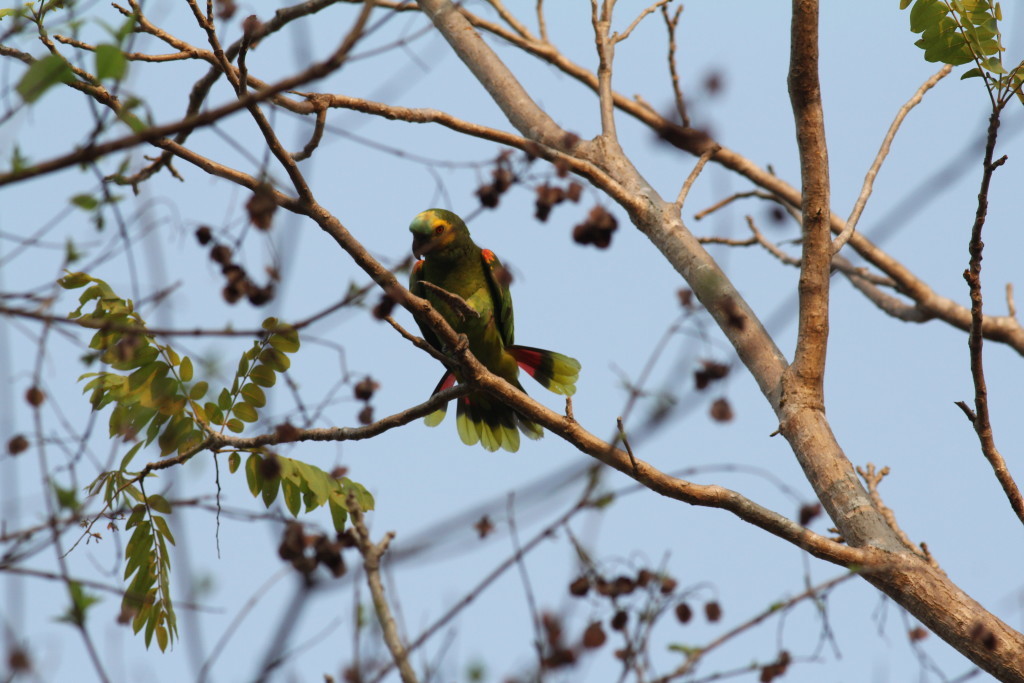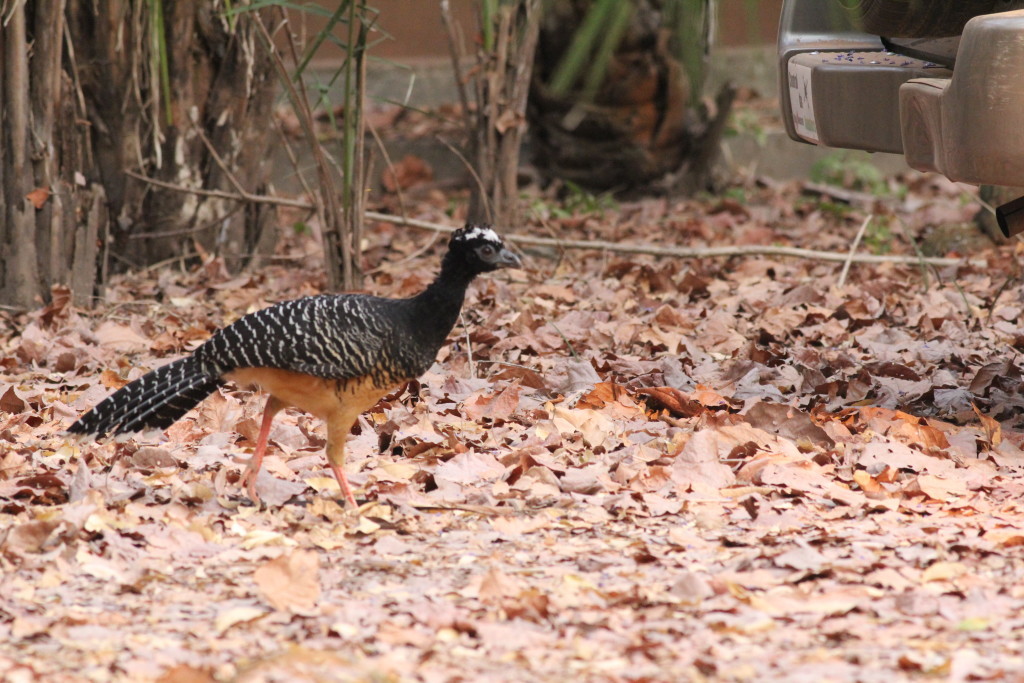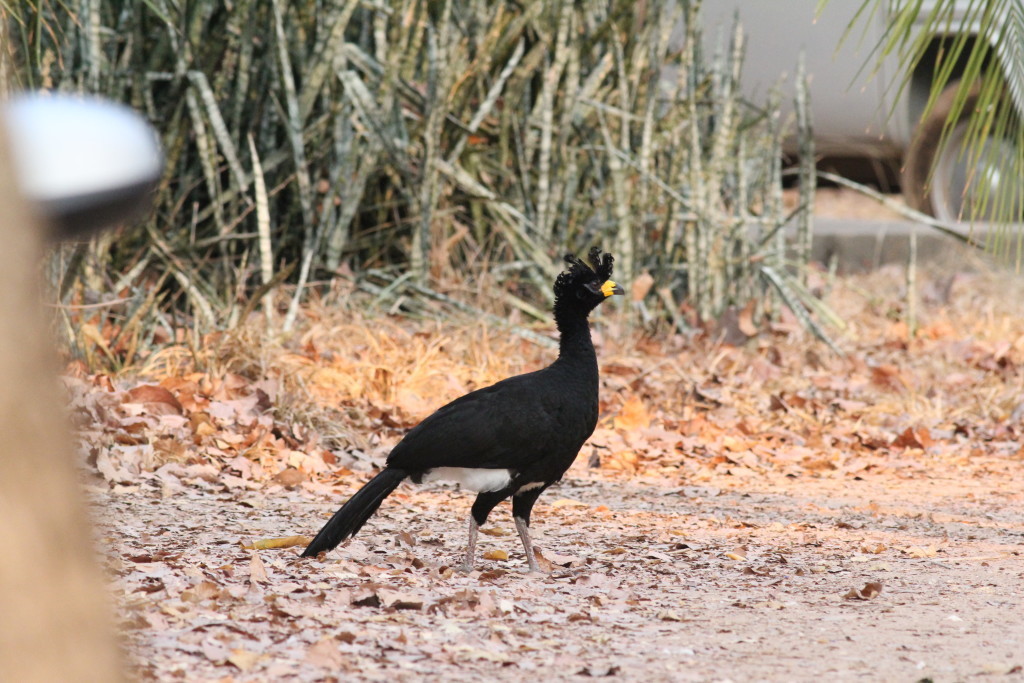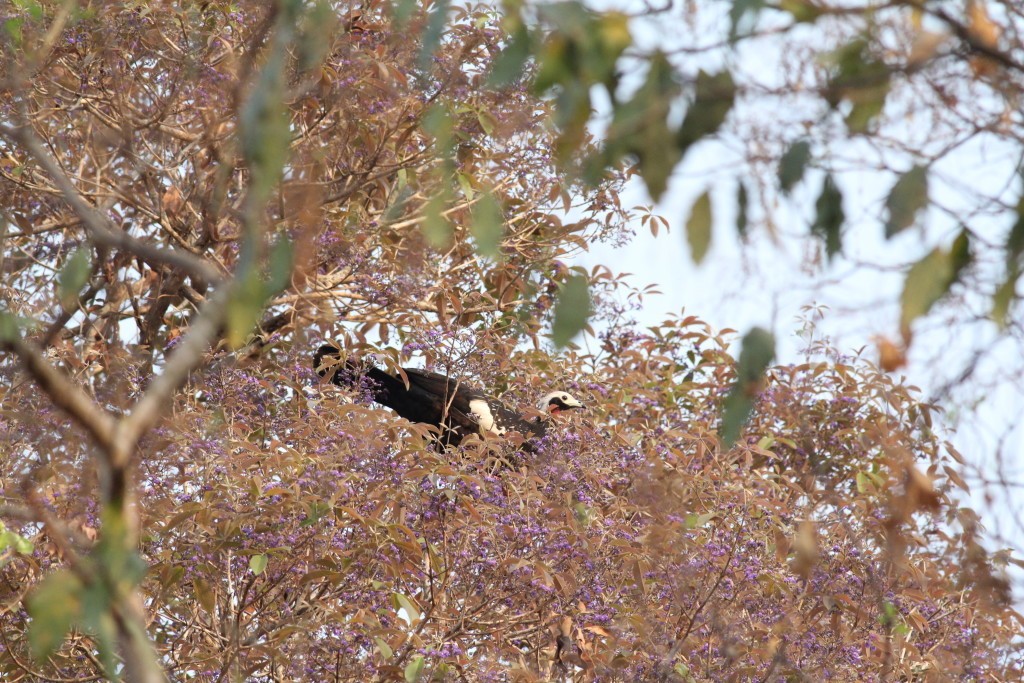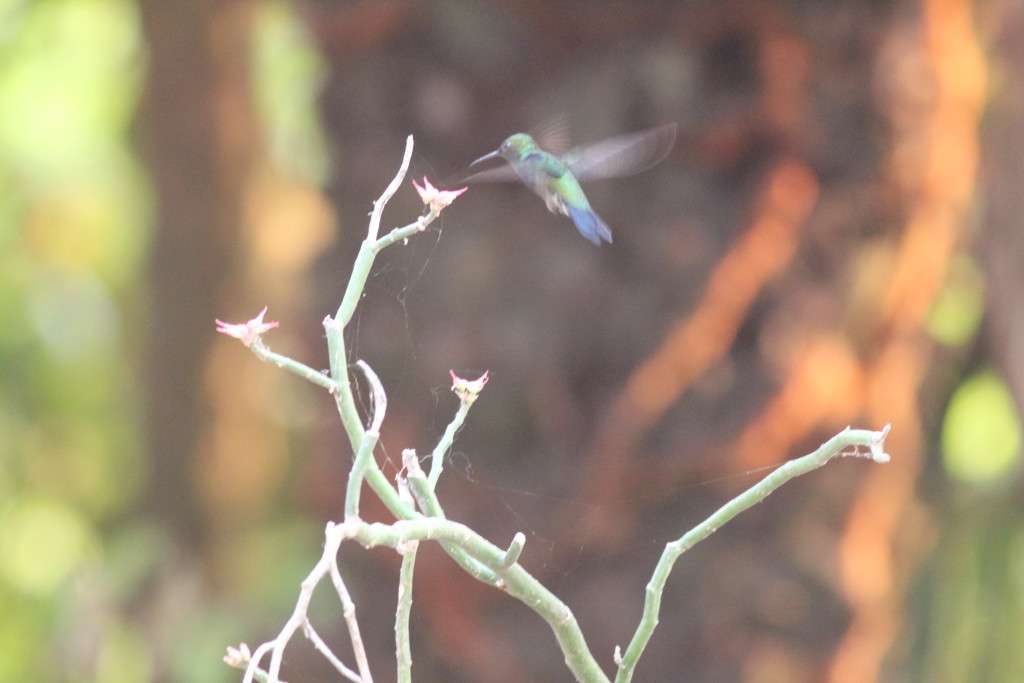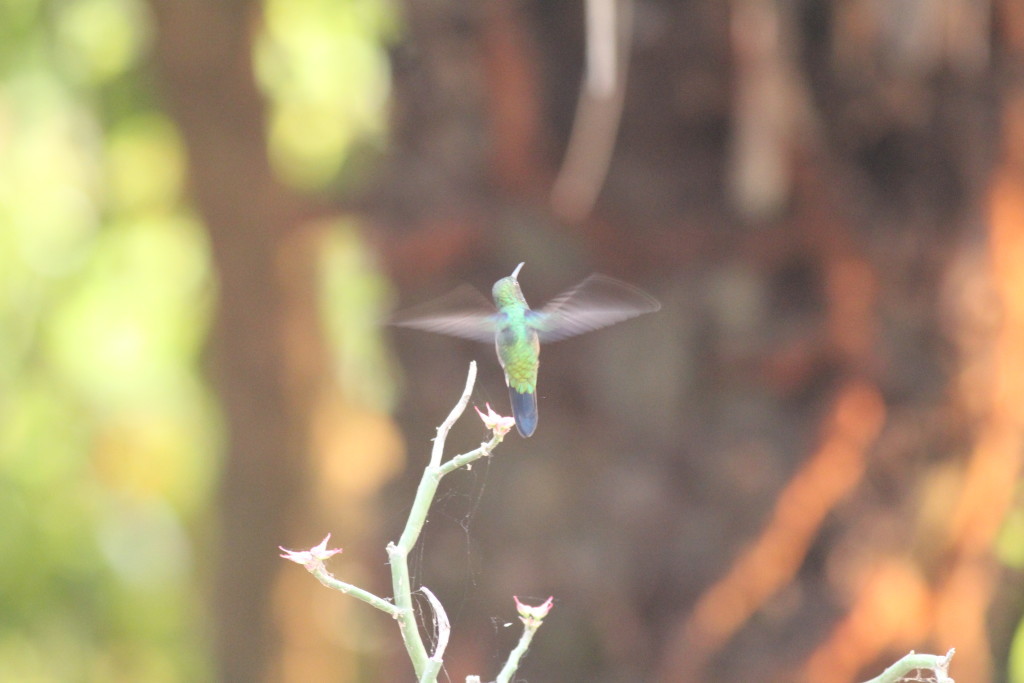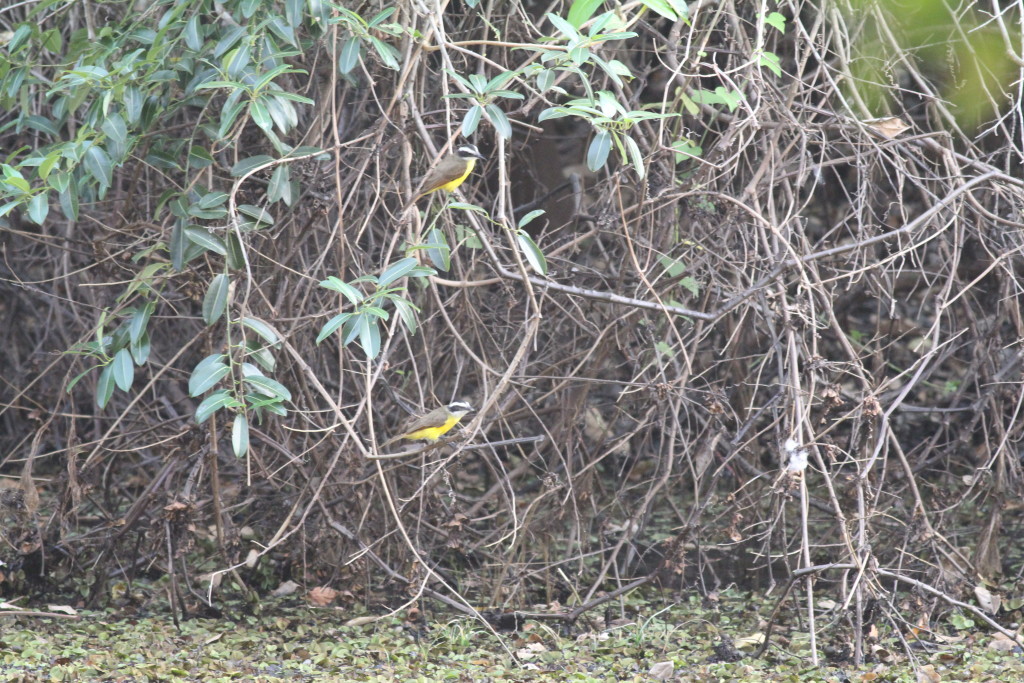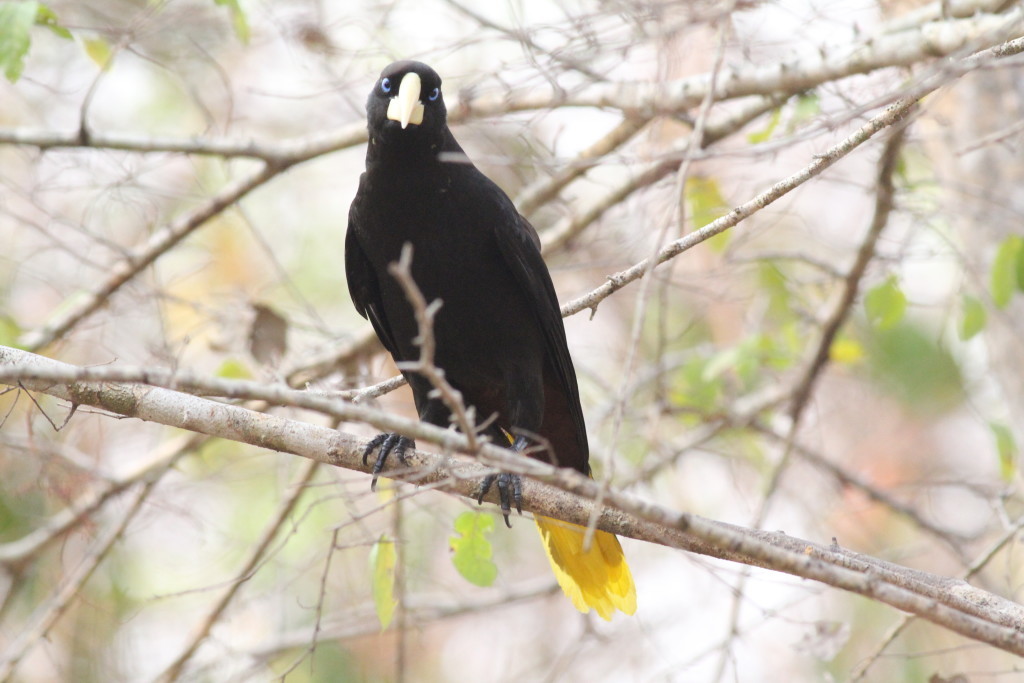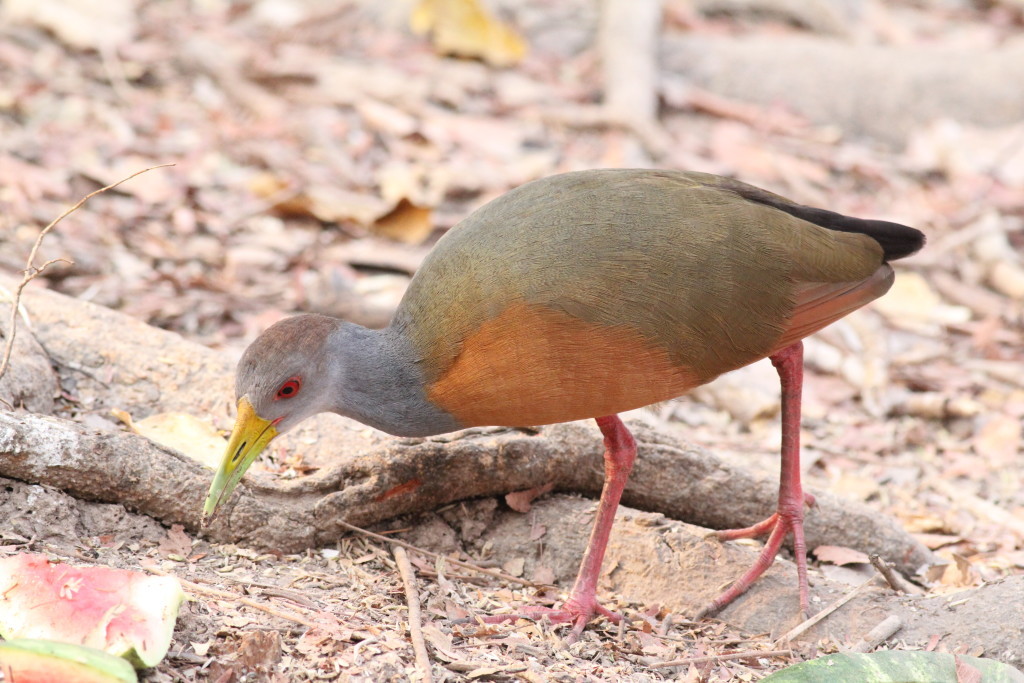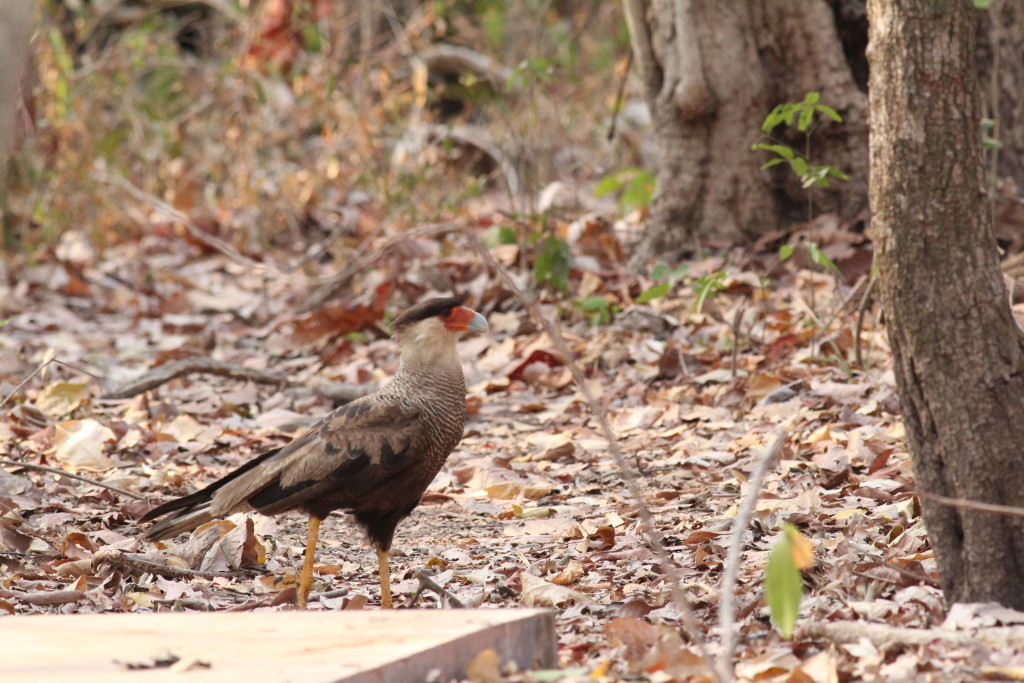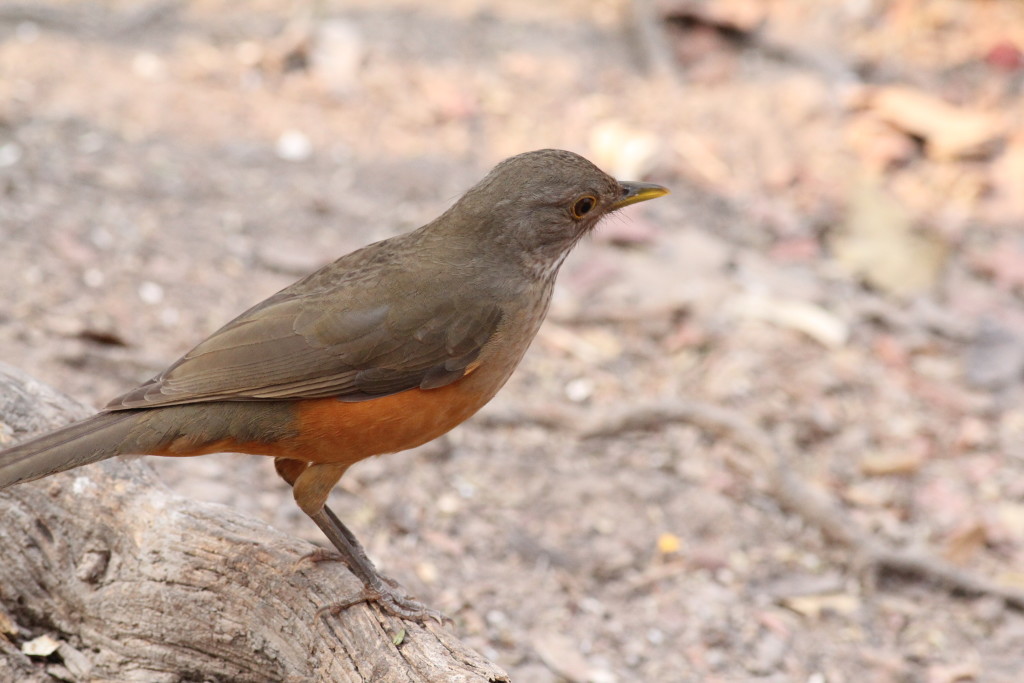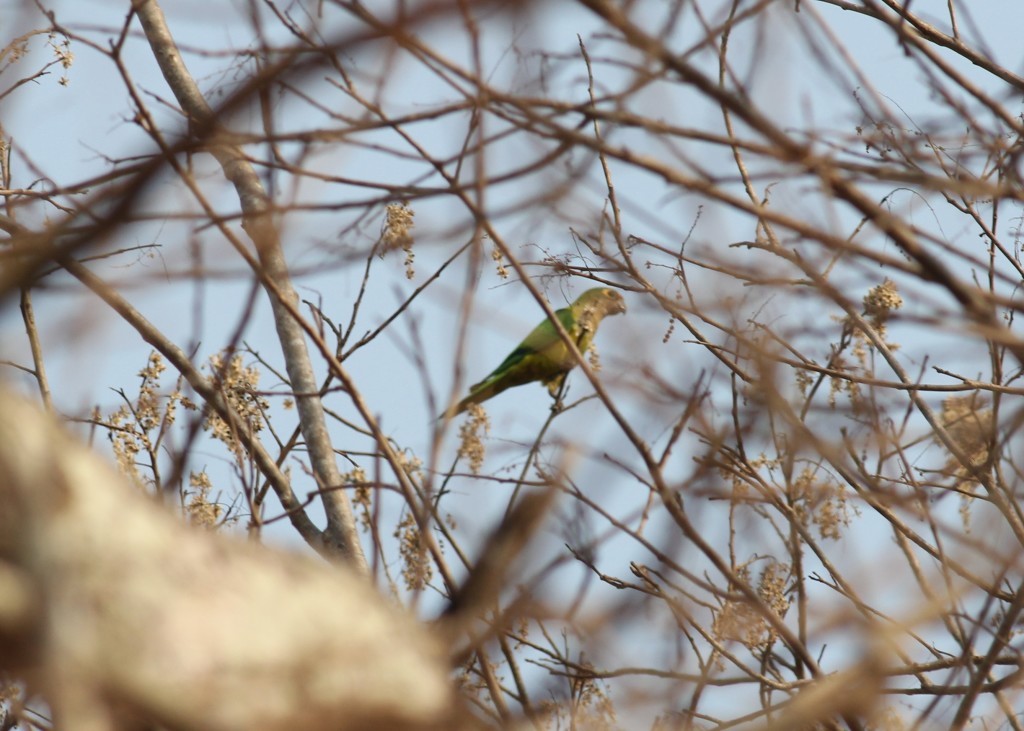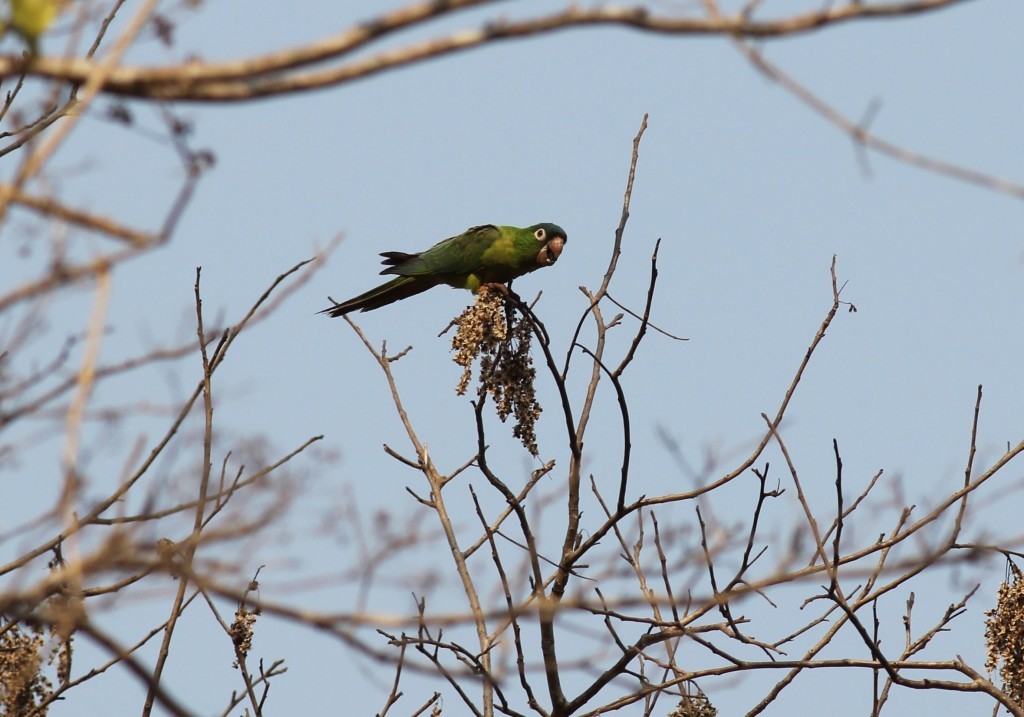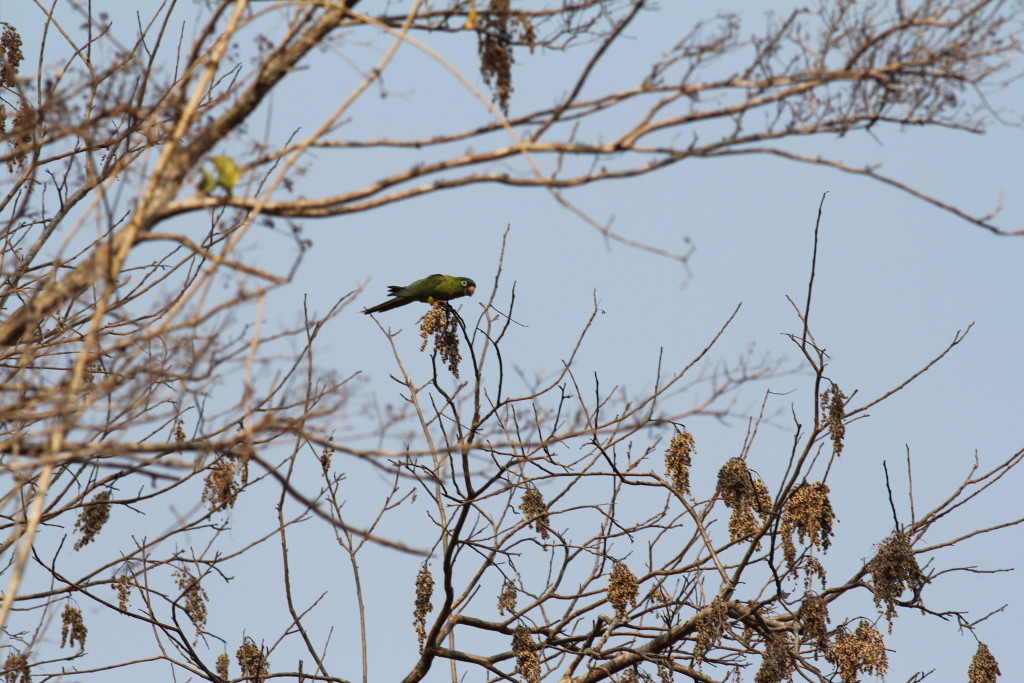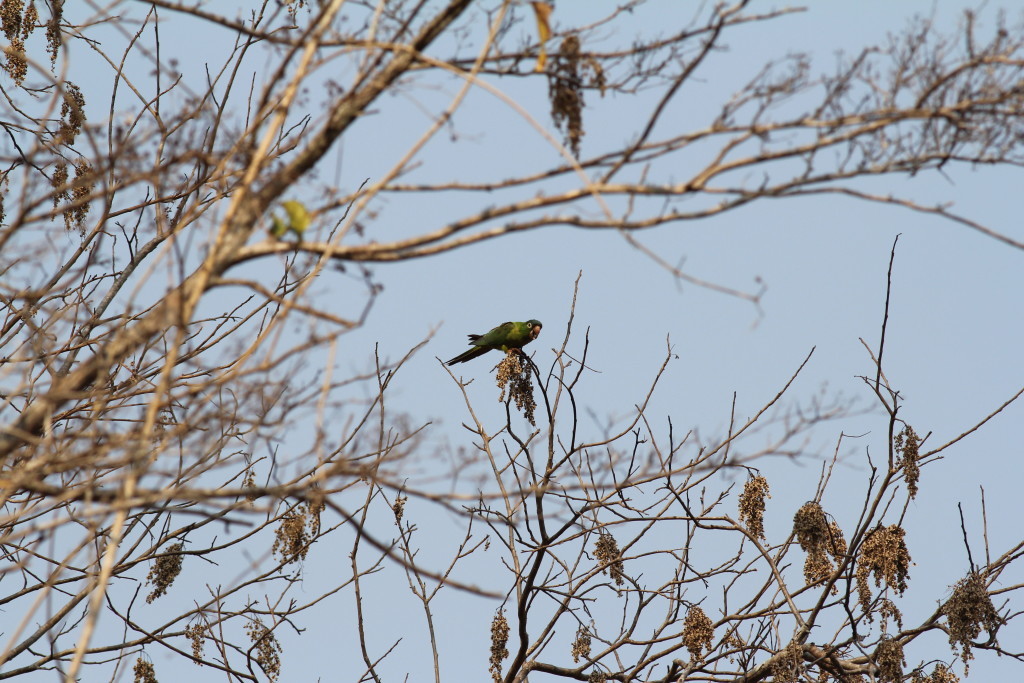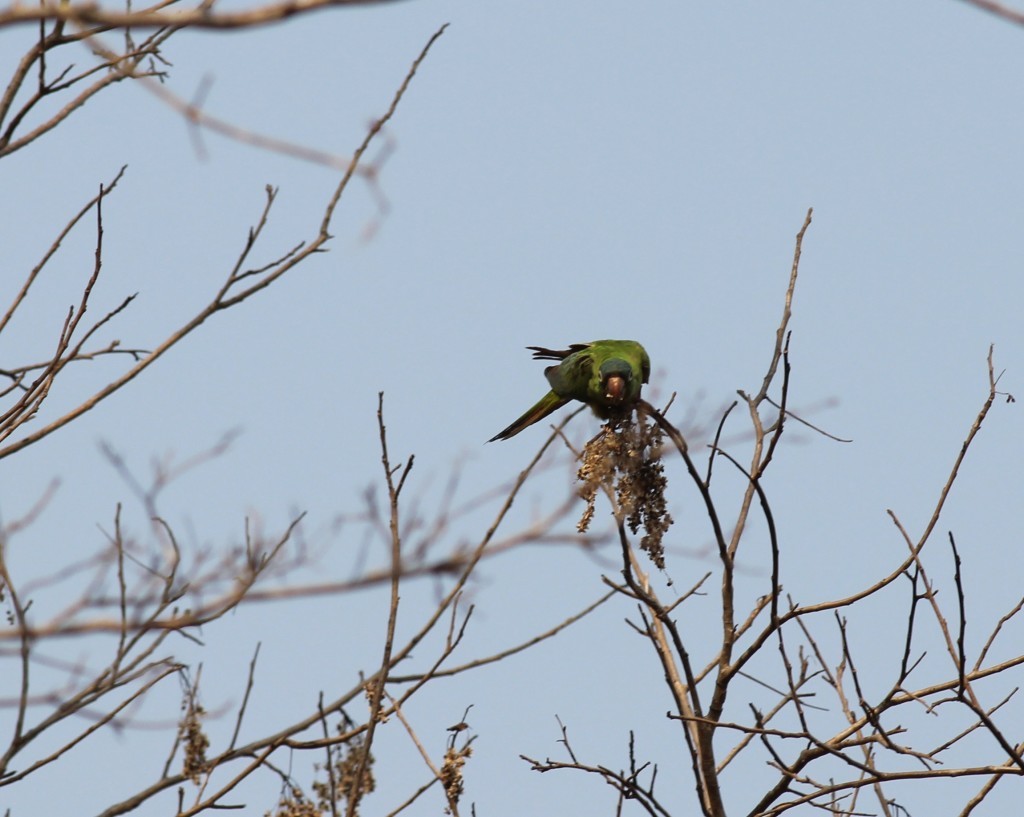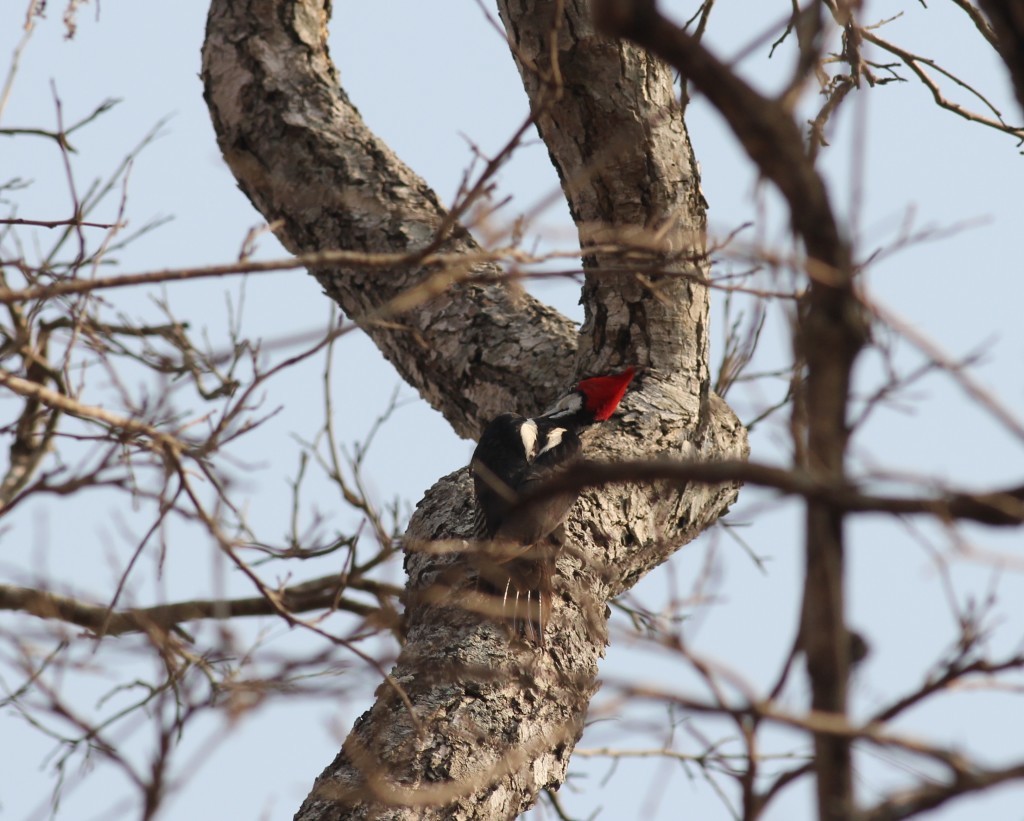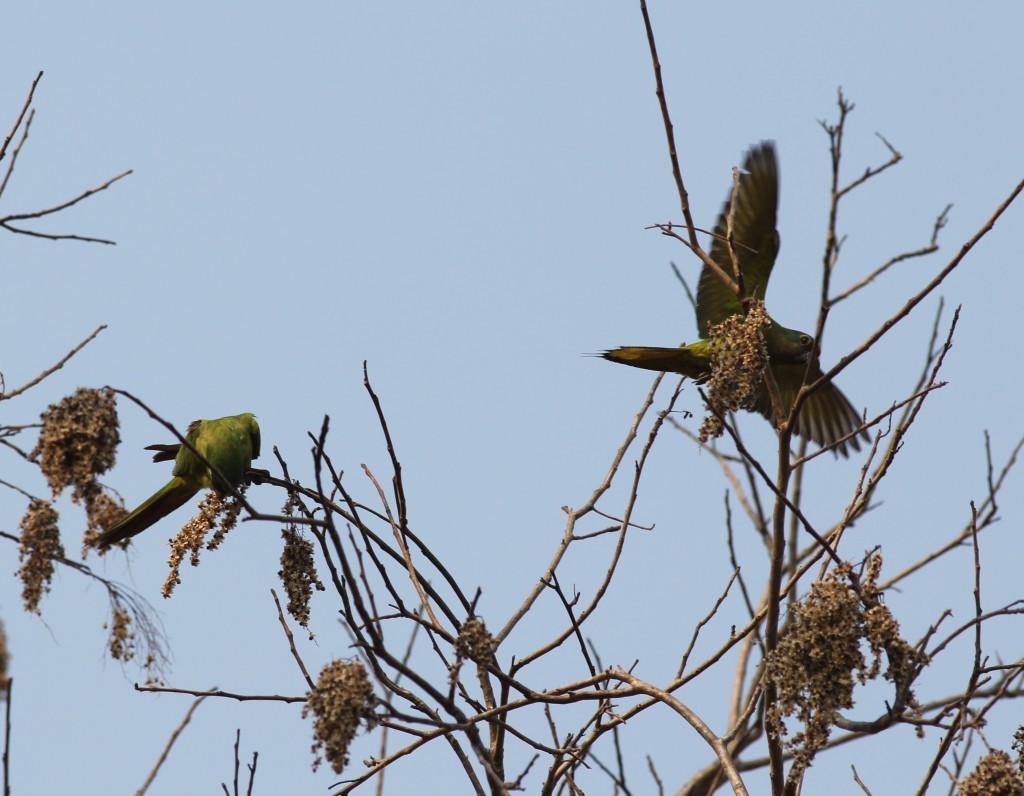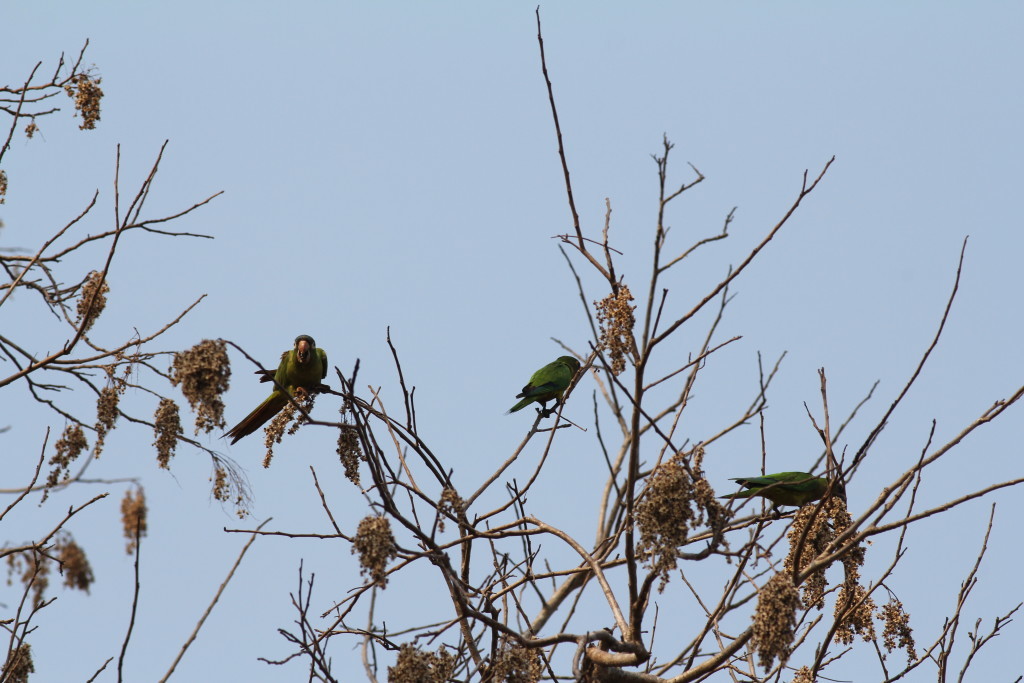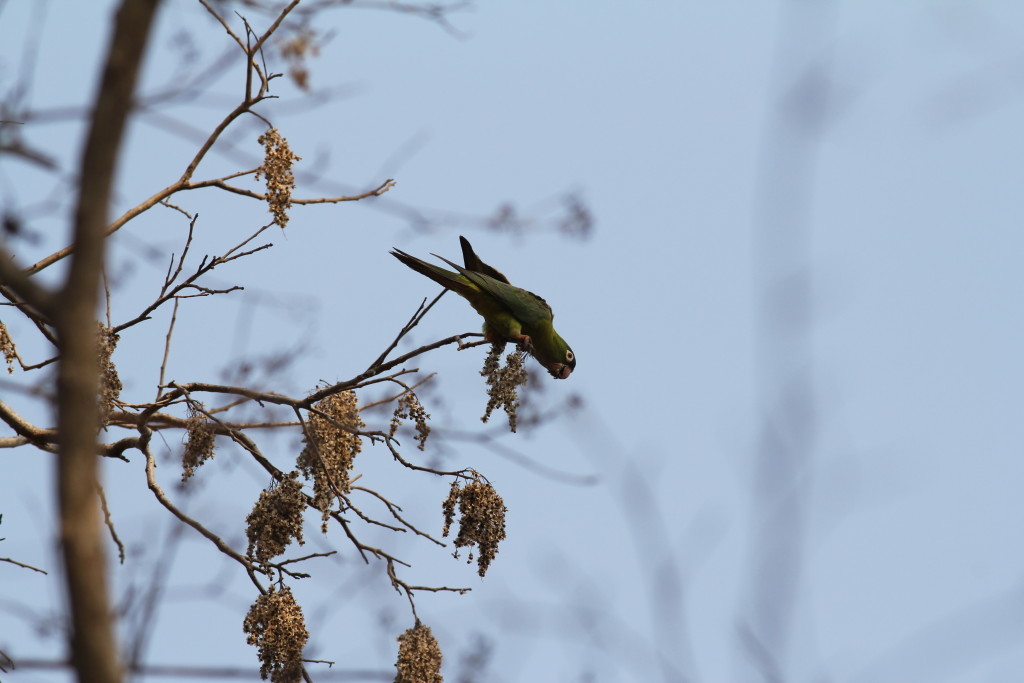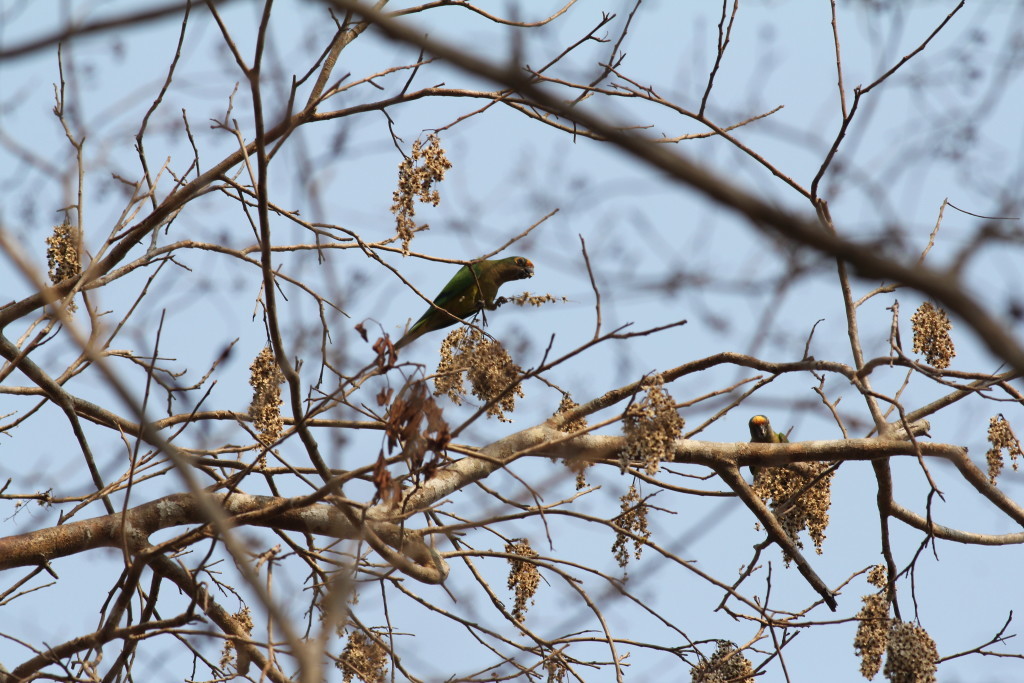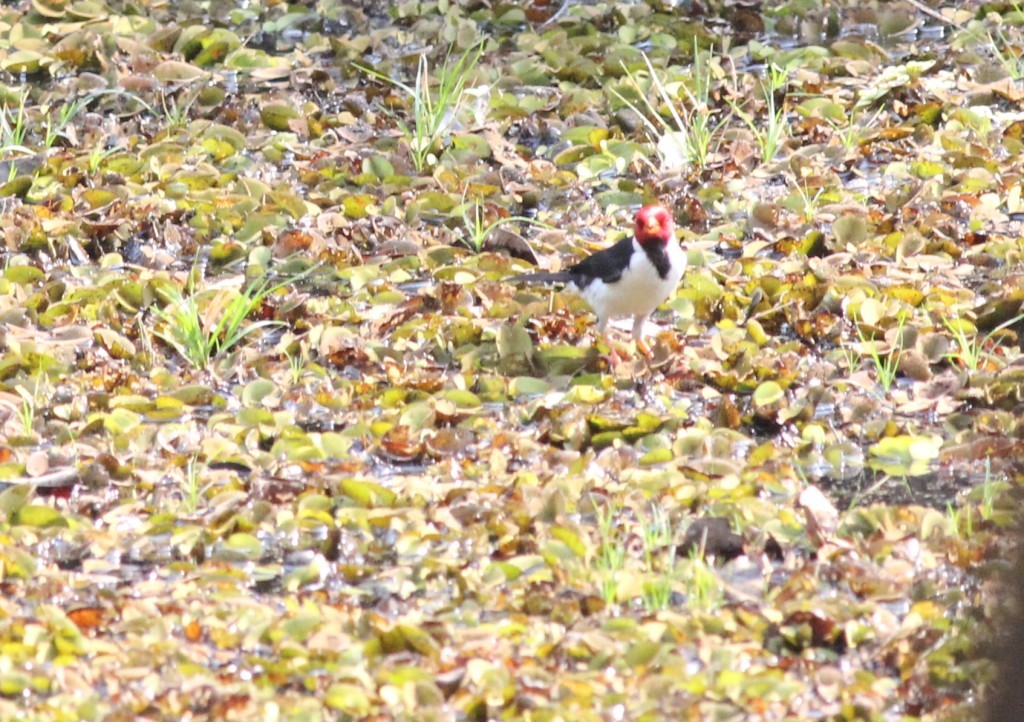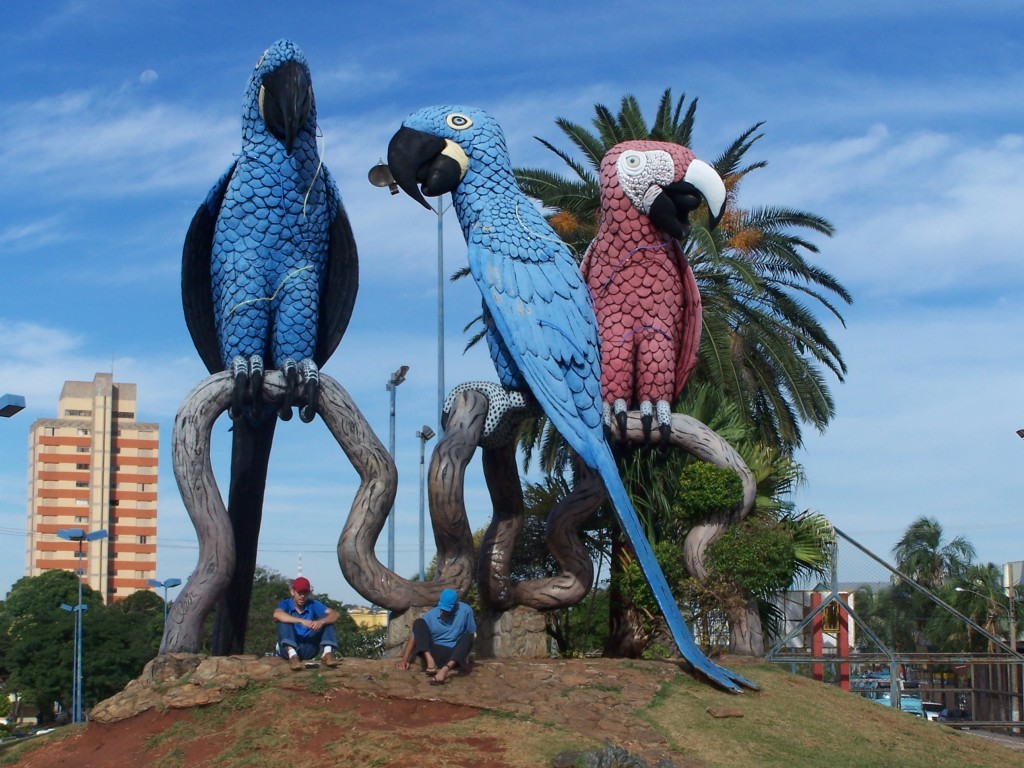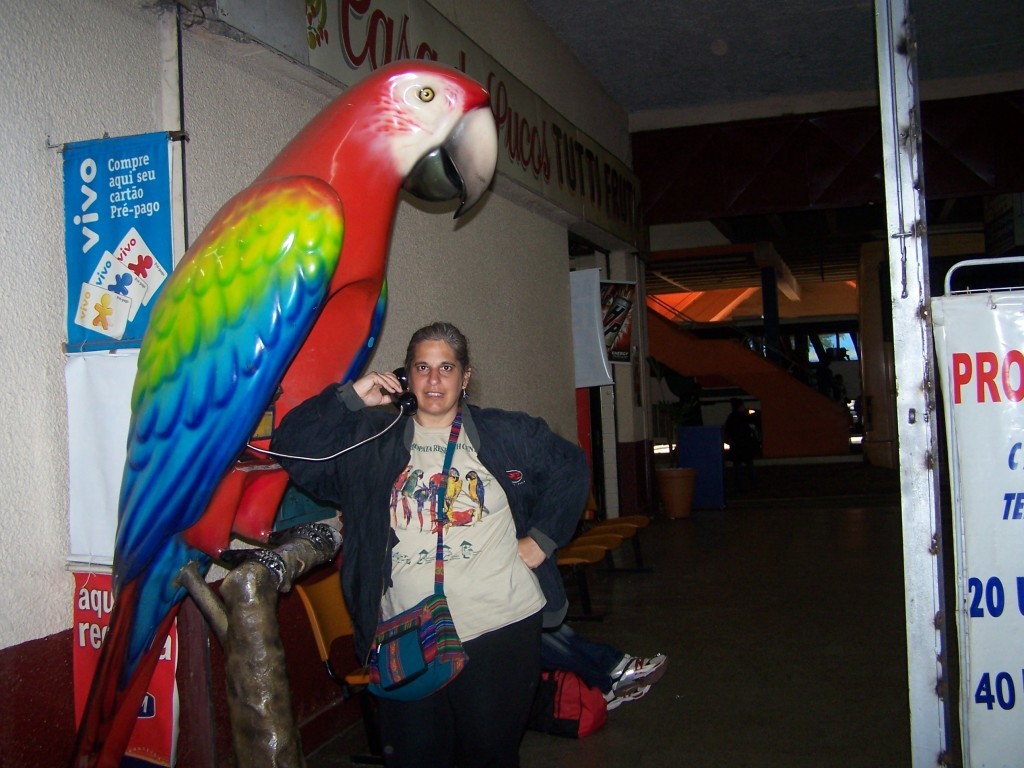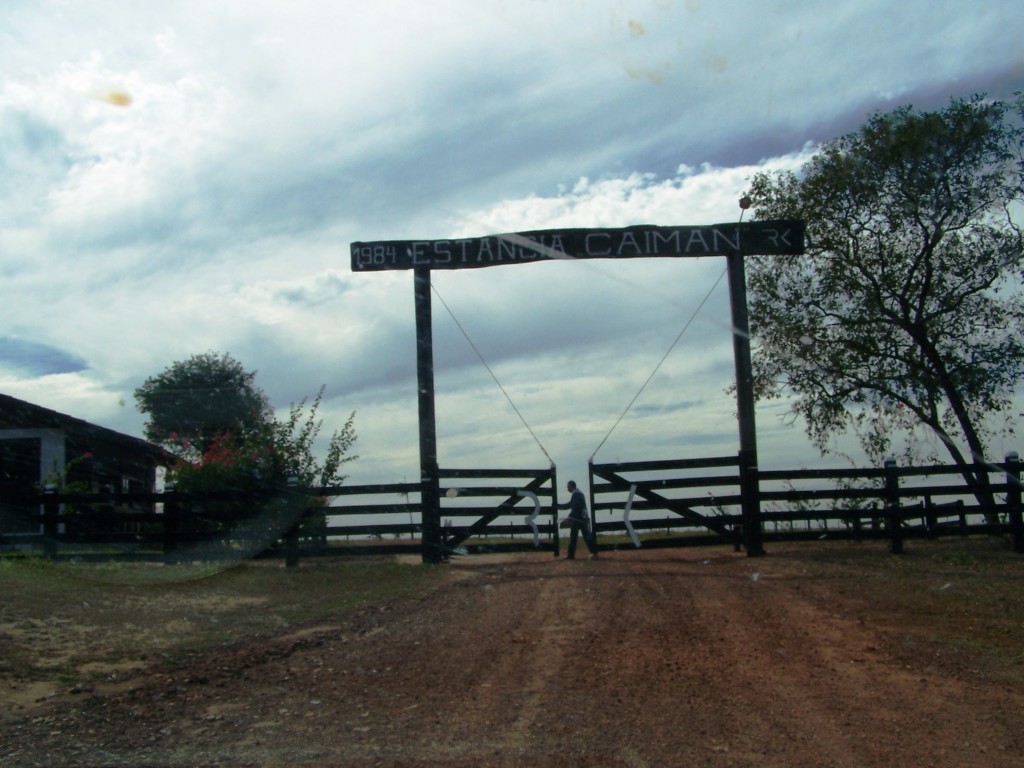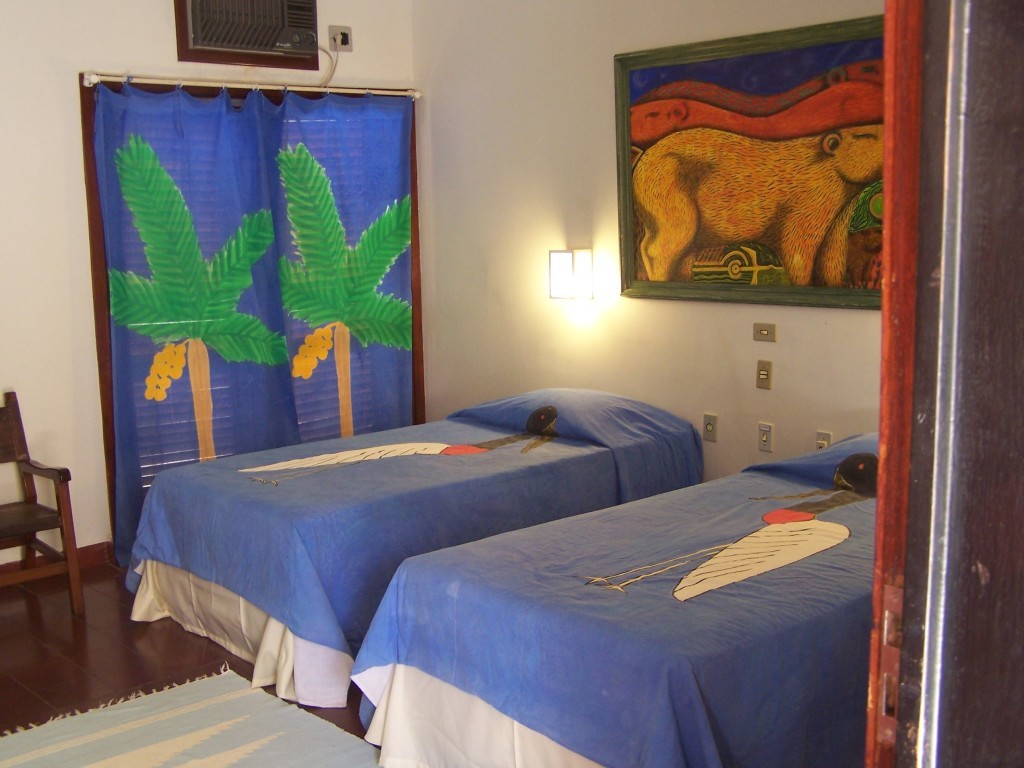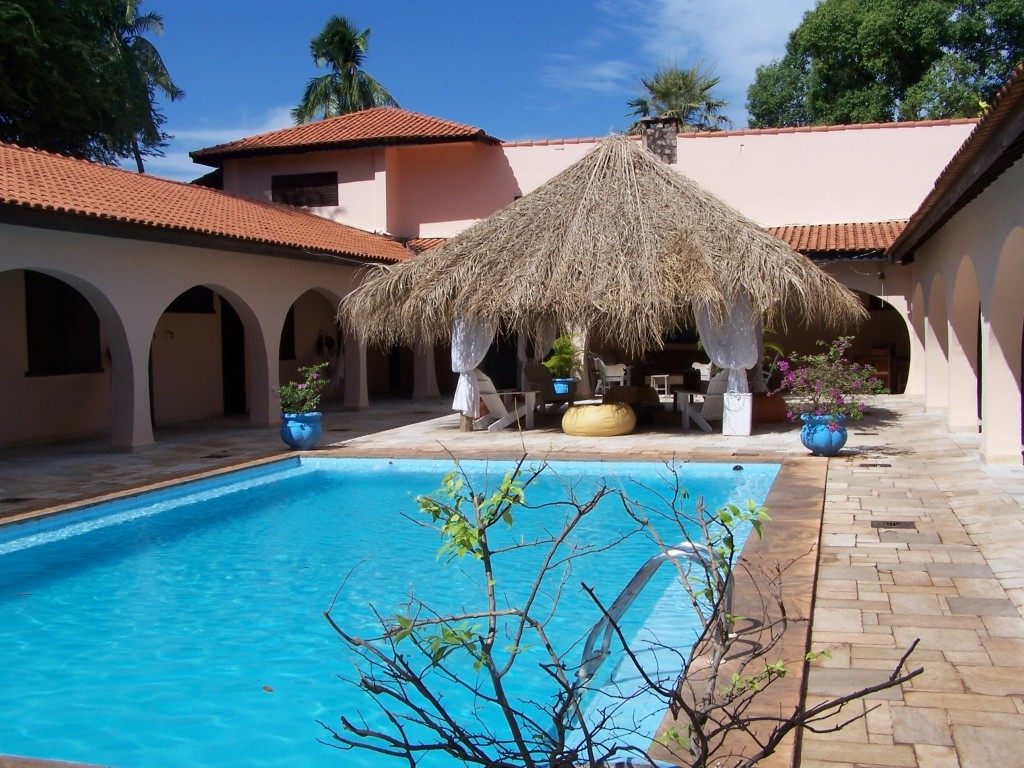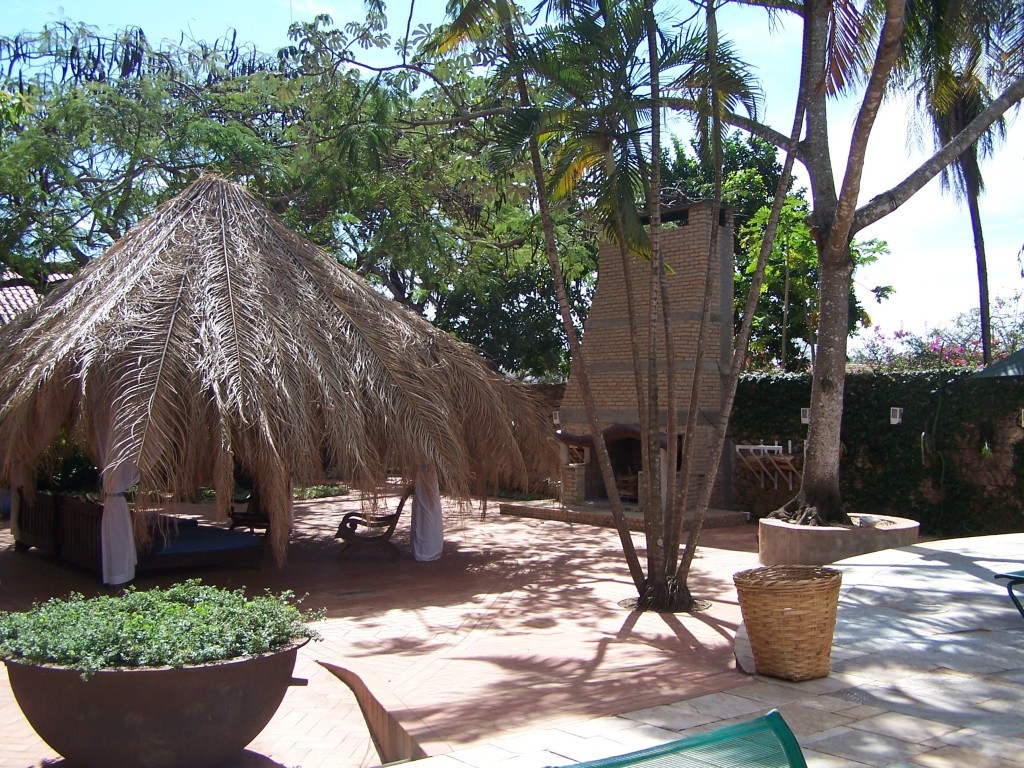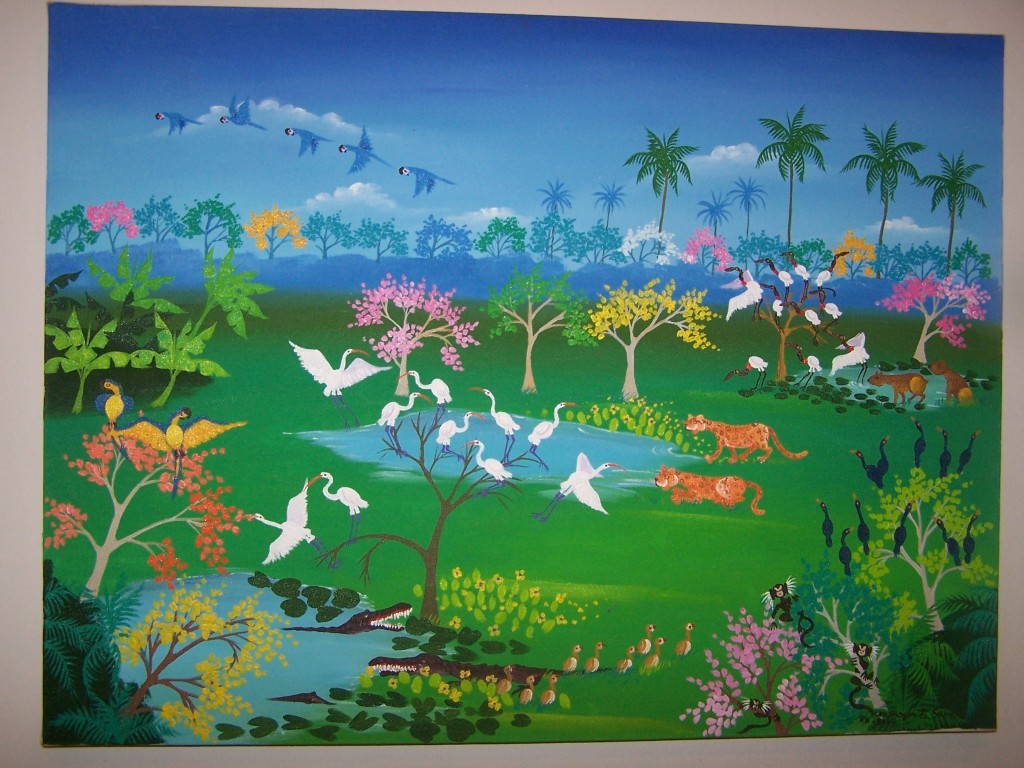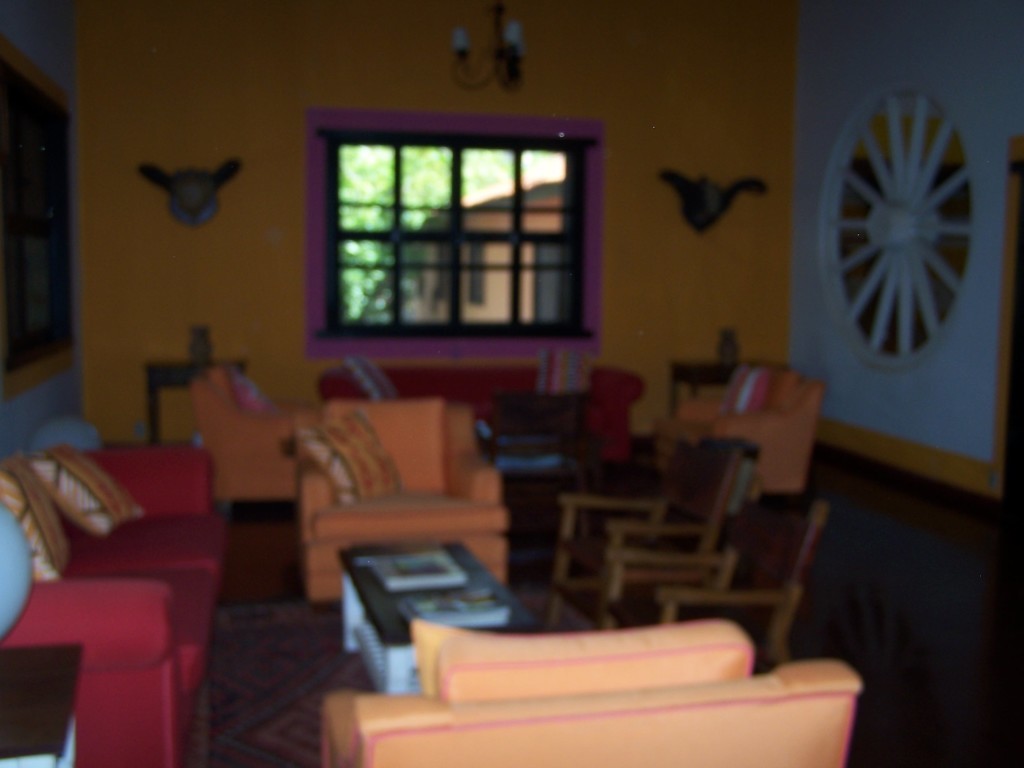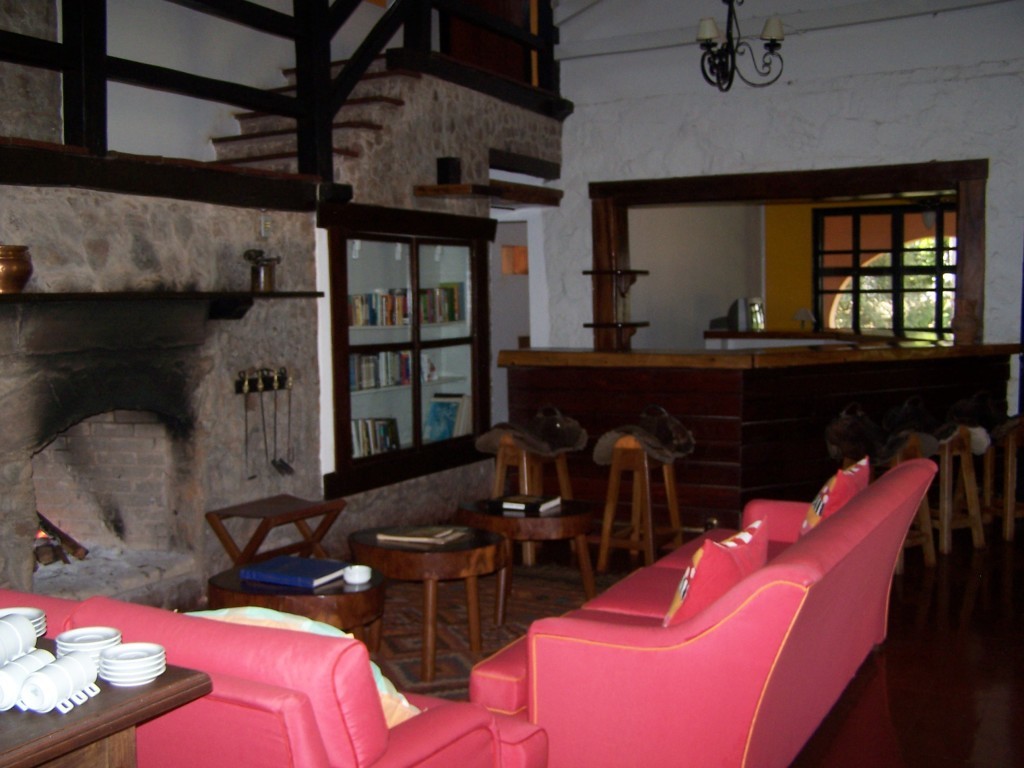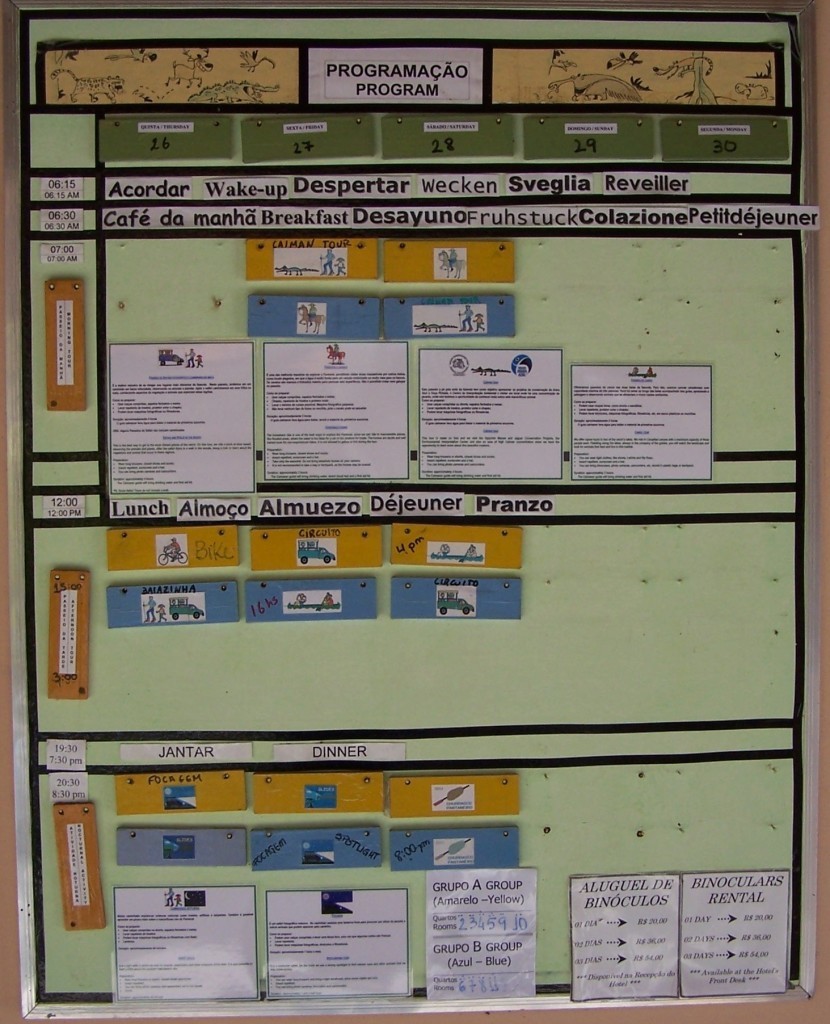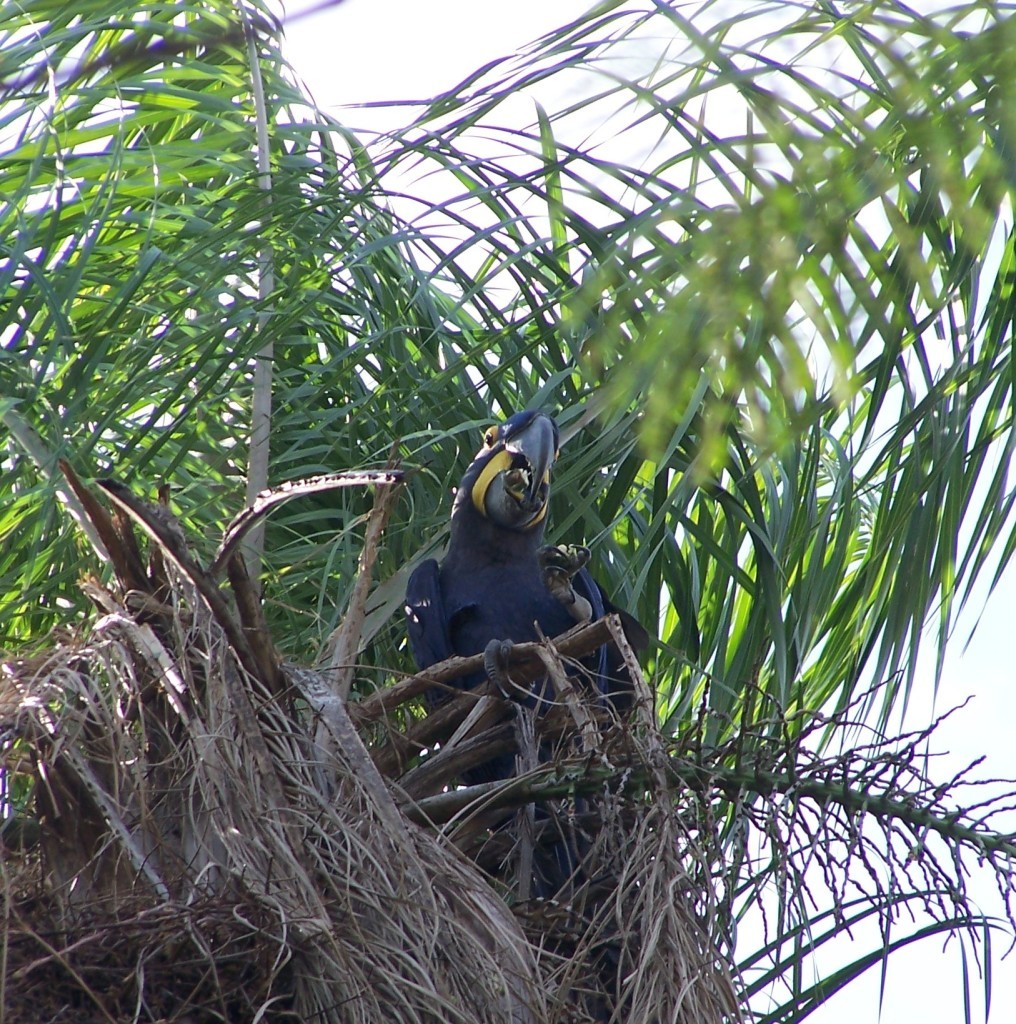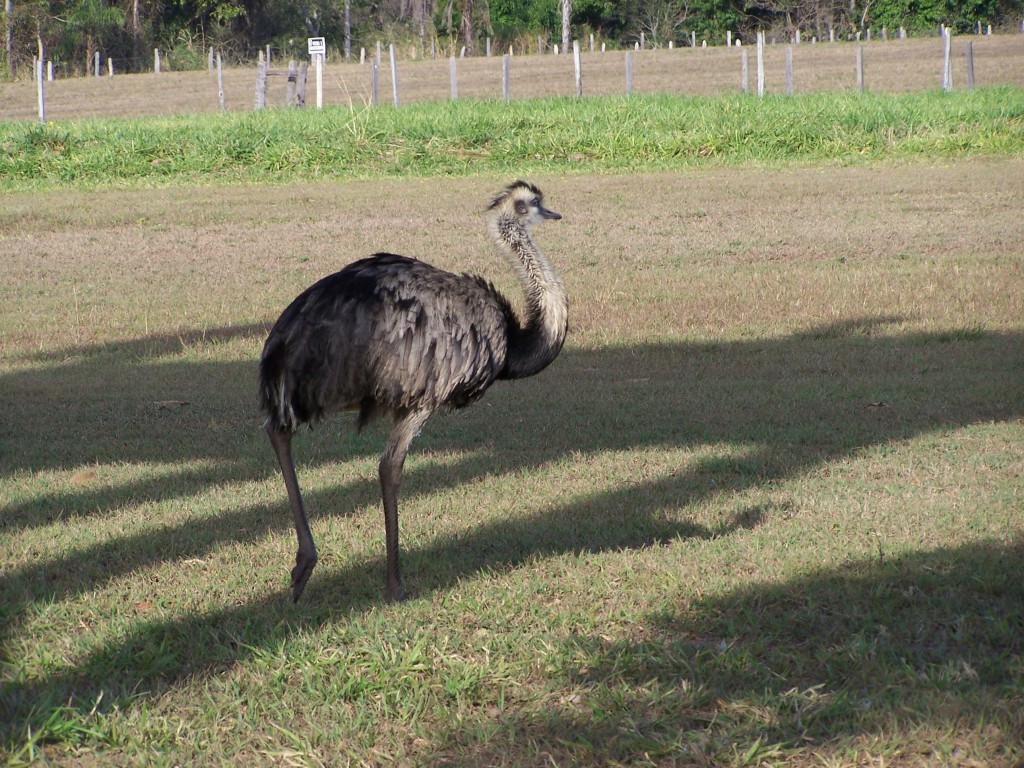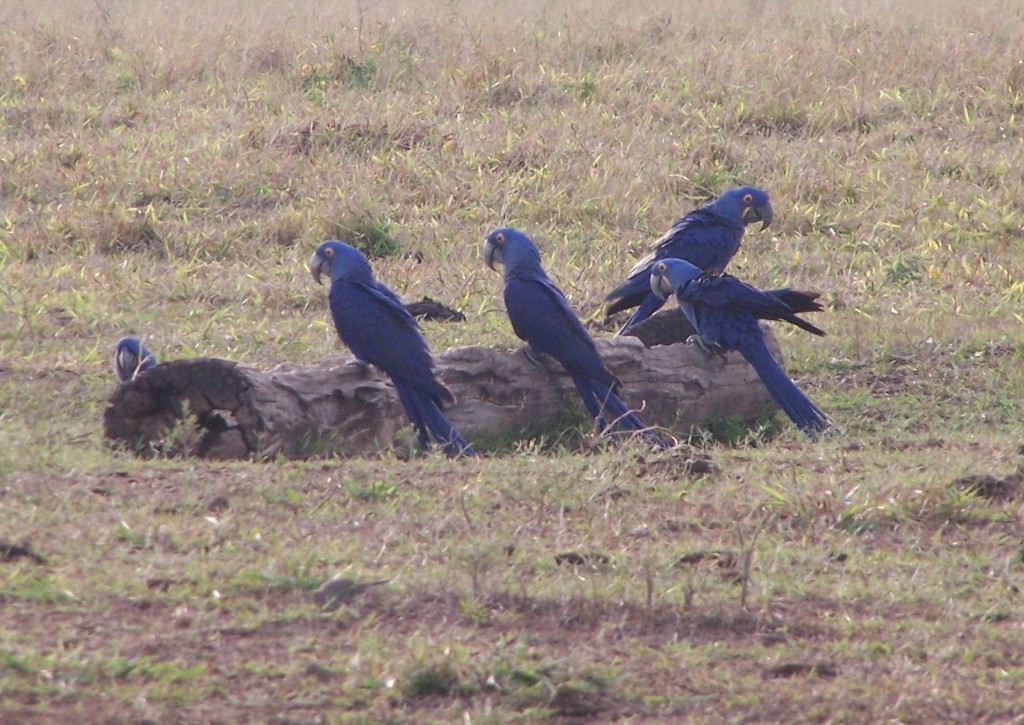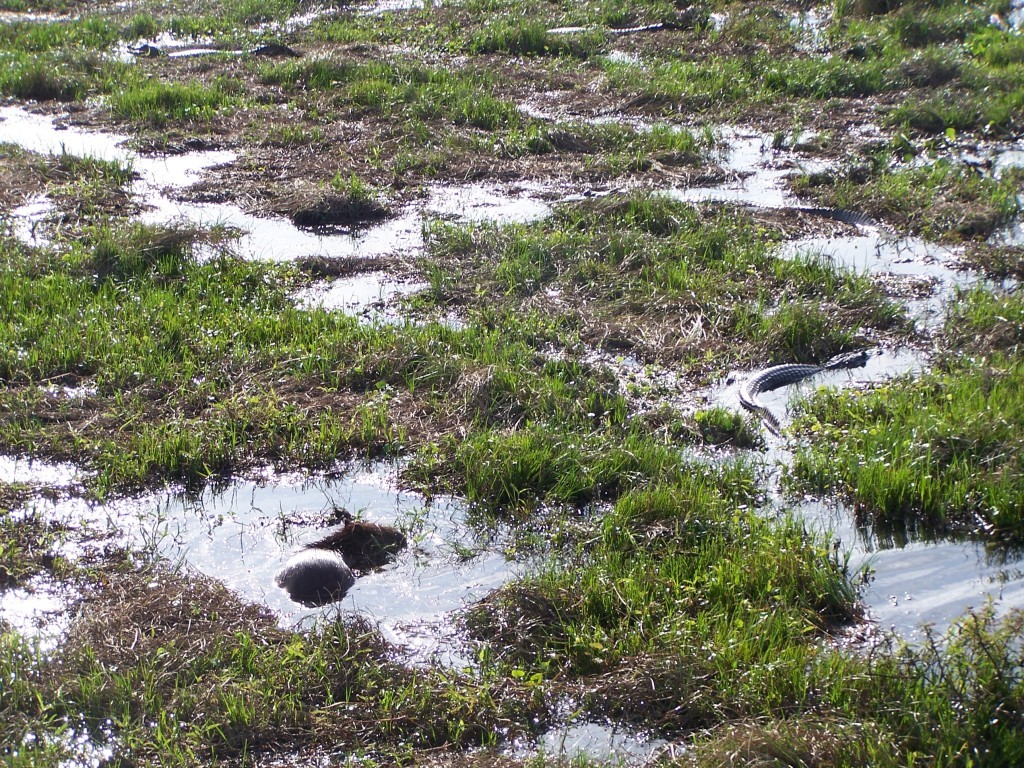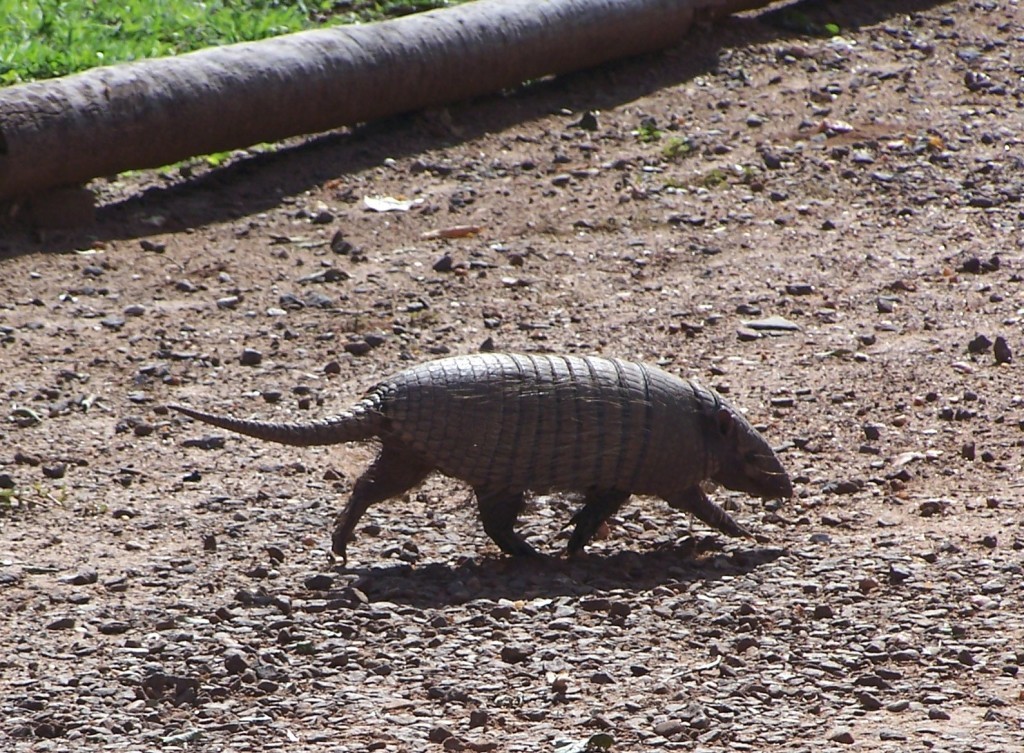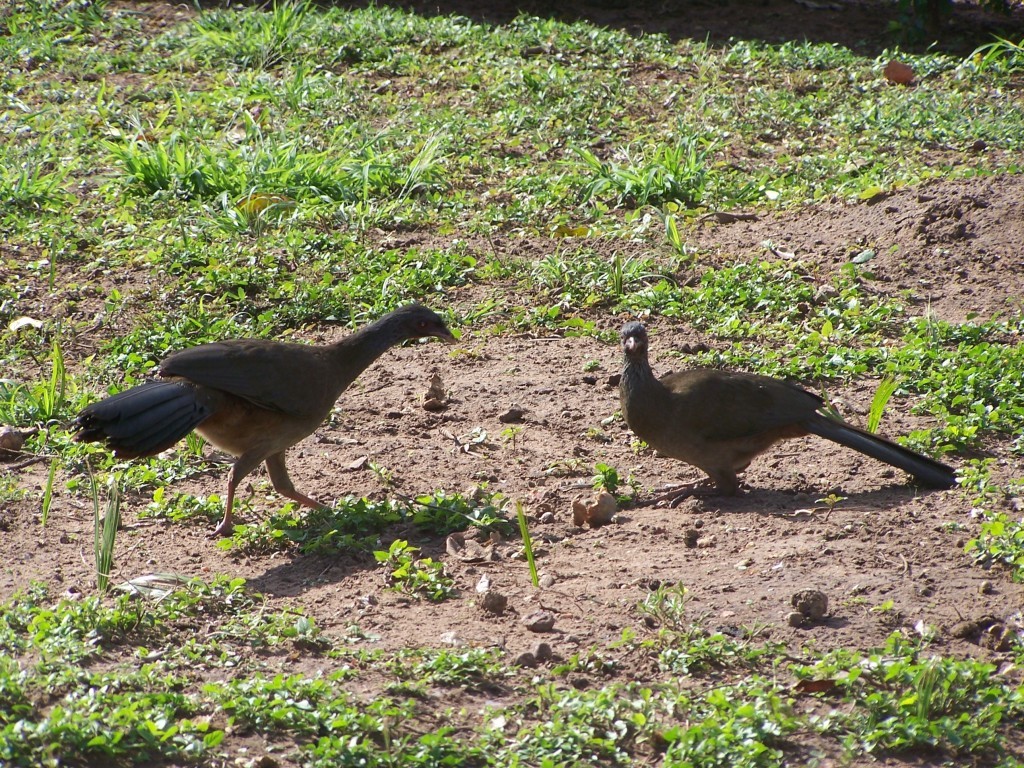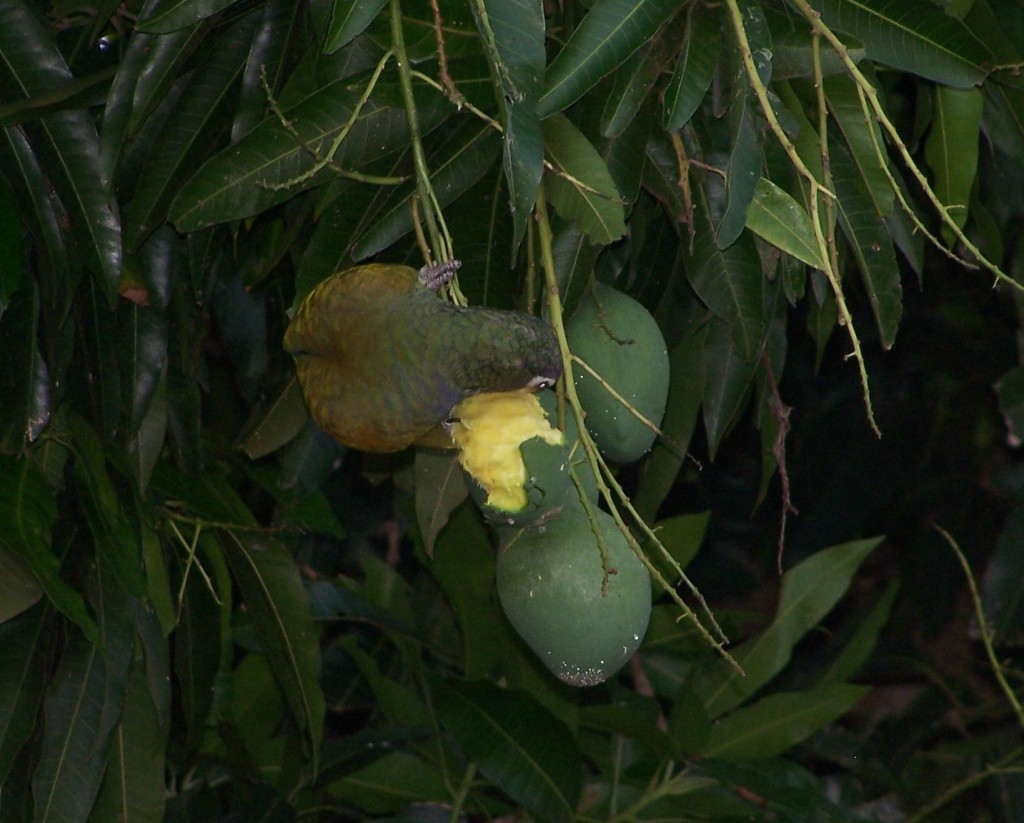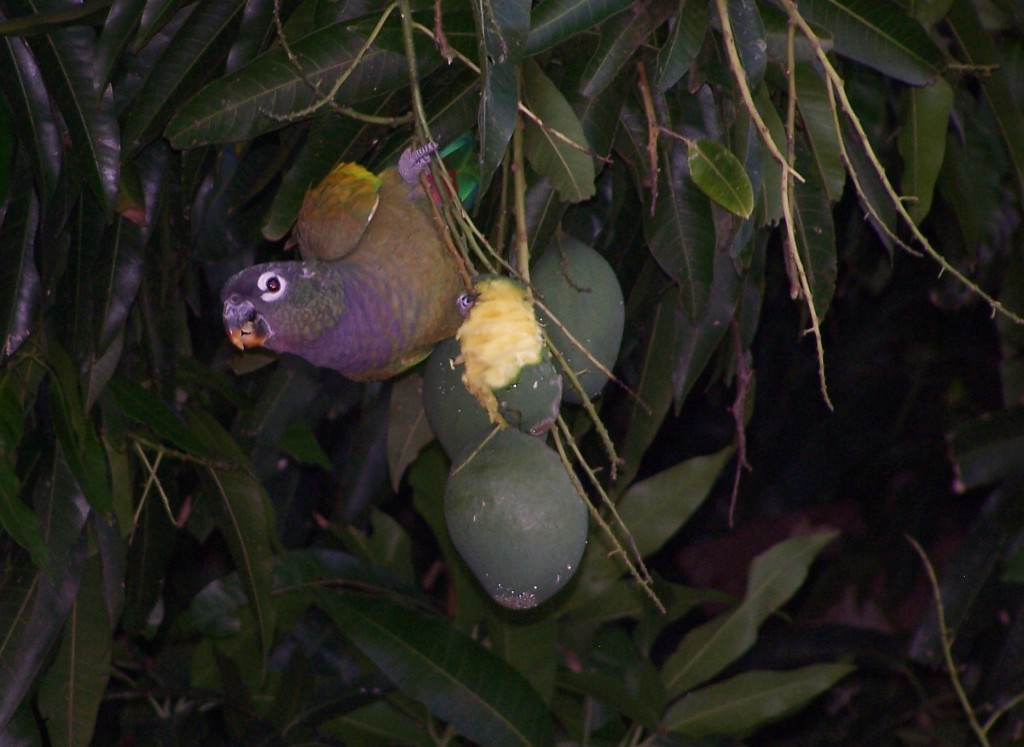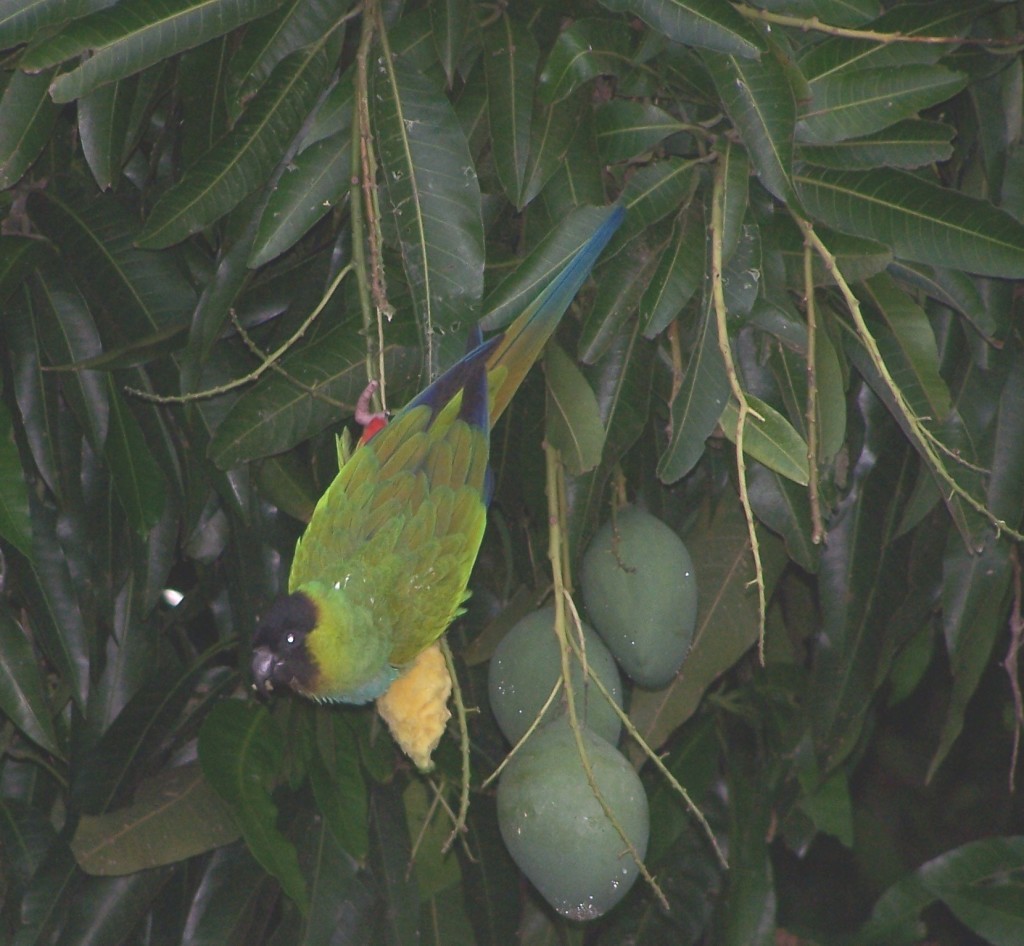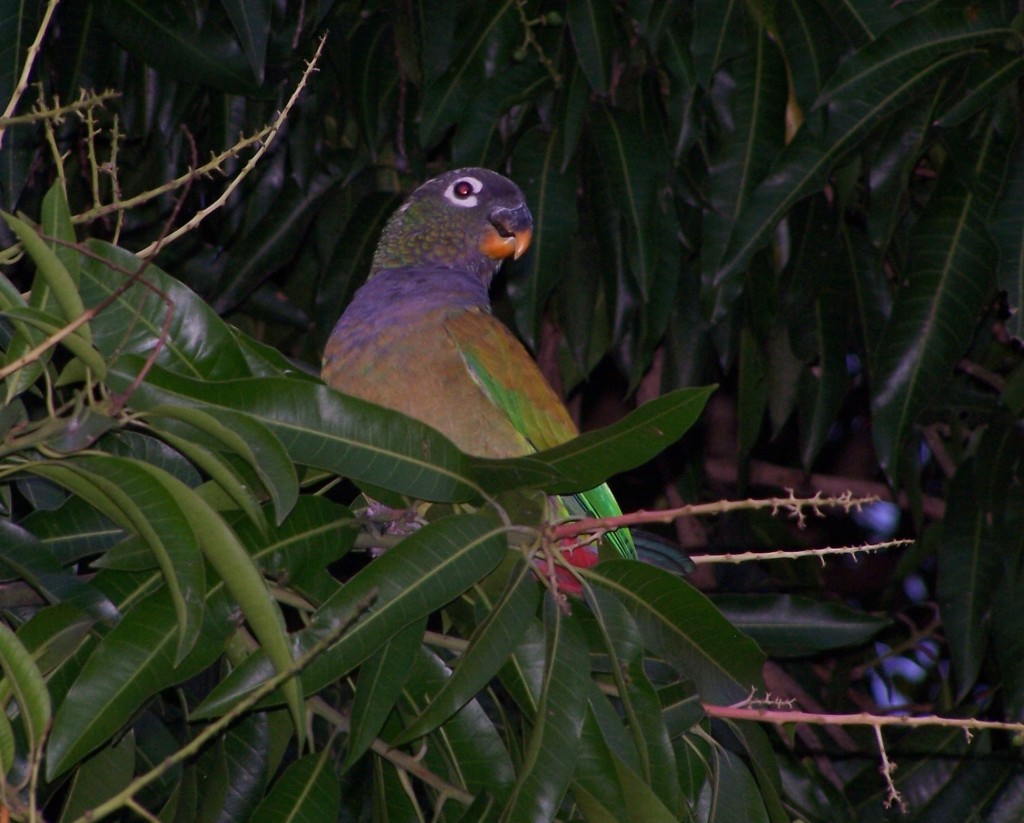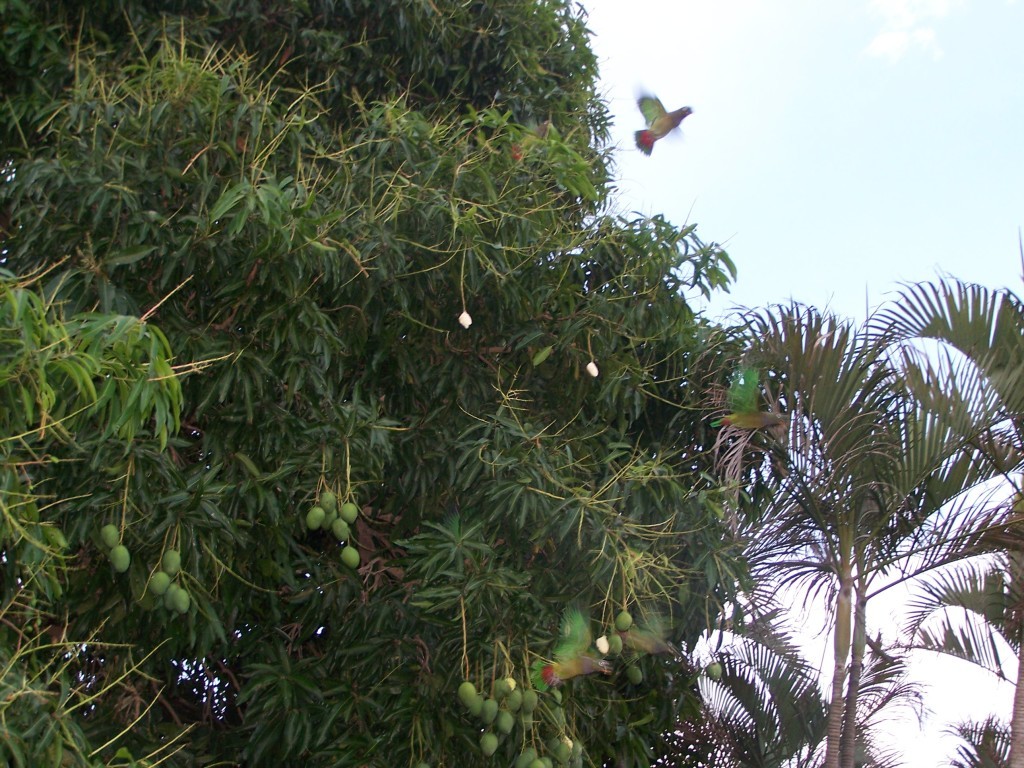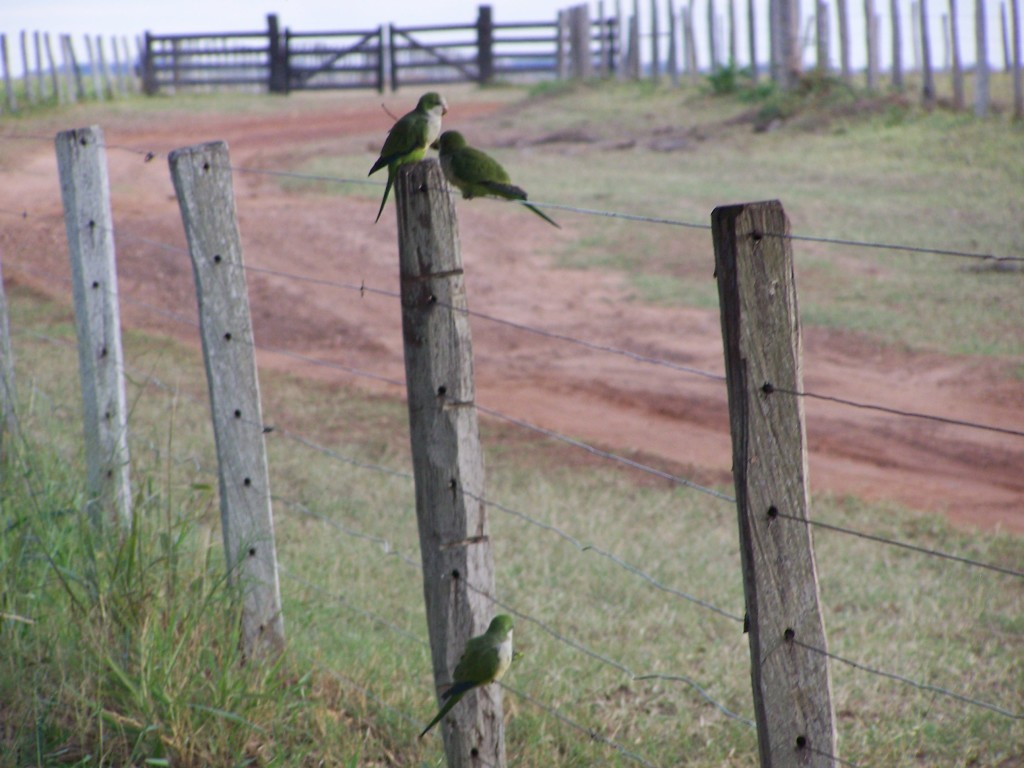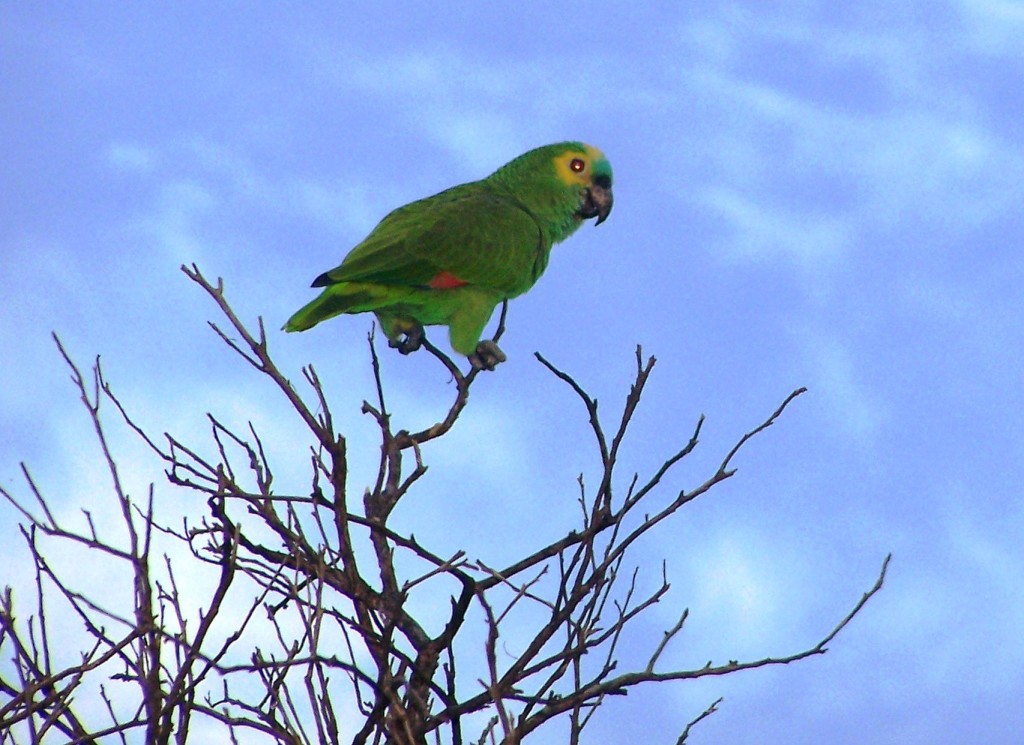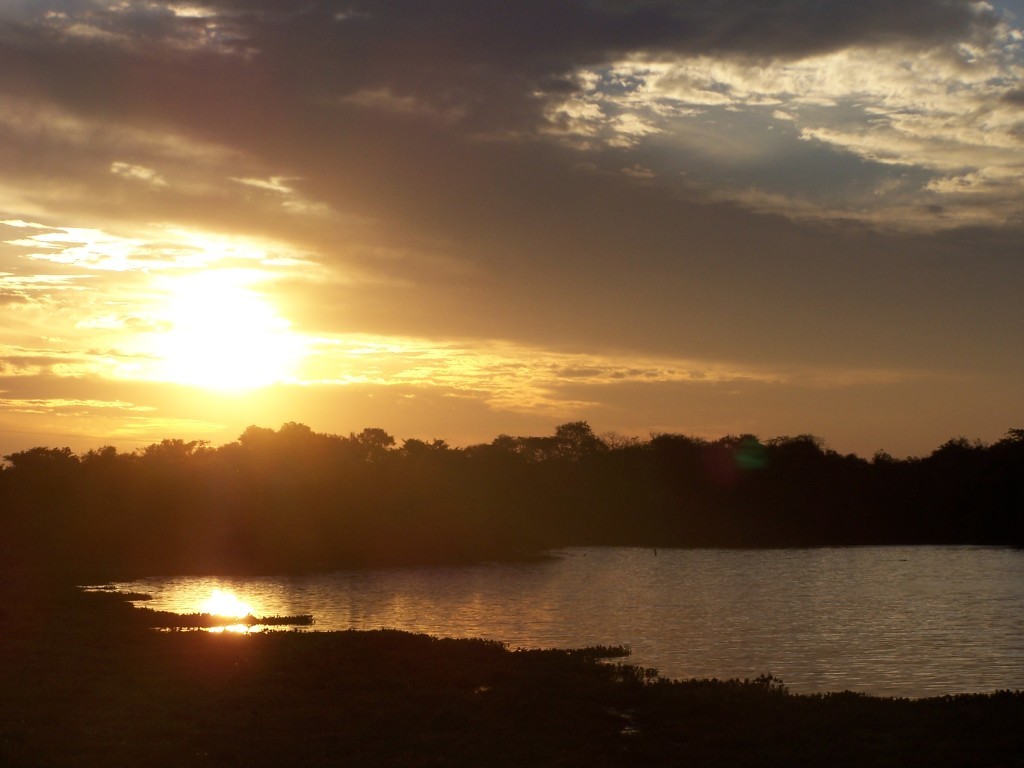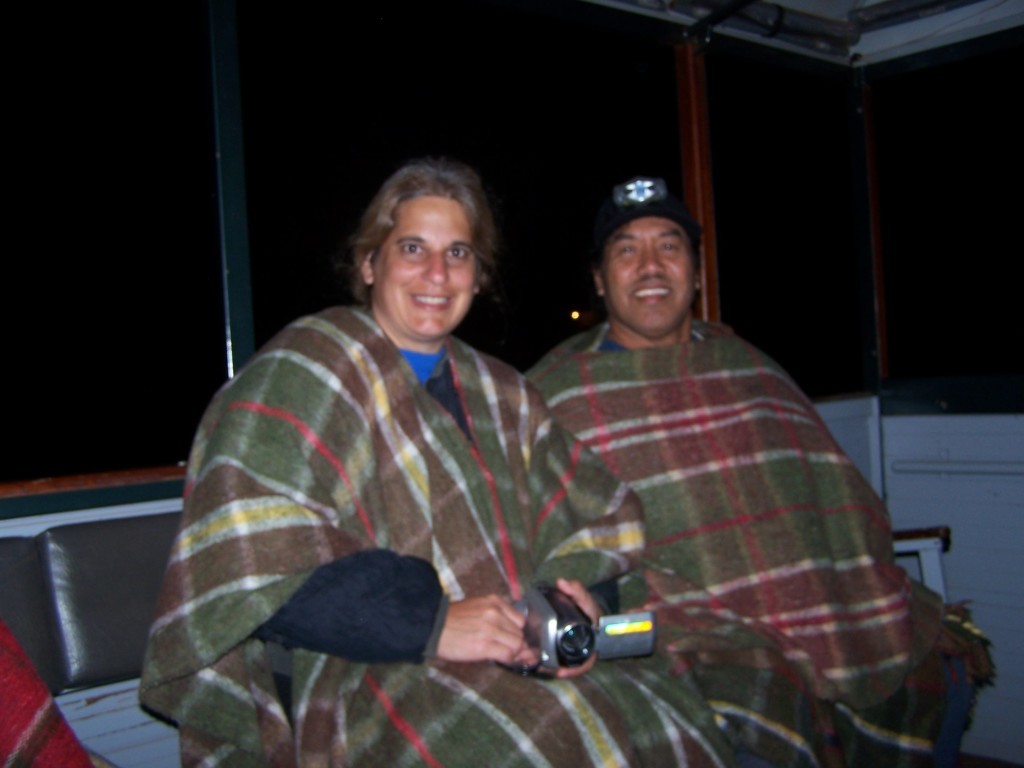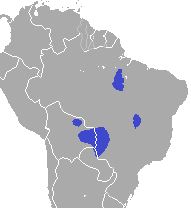Continued from Caiman Ecologico Refuge review.
This was by far the most exciting part of the trip – a chance to see how the volunteers of Projeto Arara Azul research the Hyacinth Macaws and other birds in the area!
Cezar, Julianne and Karla picked us up right after breakfast in a 4WD truck. They were all kitted out with climbing gear so I knew they would be climbing trees to inspect nests.
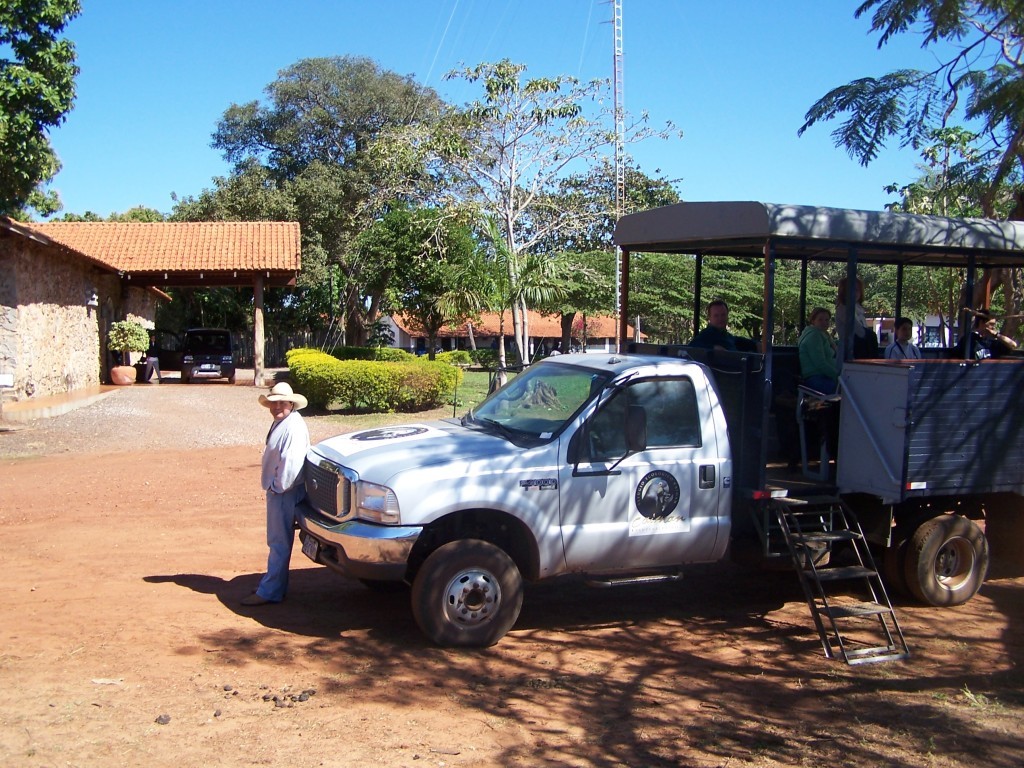
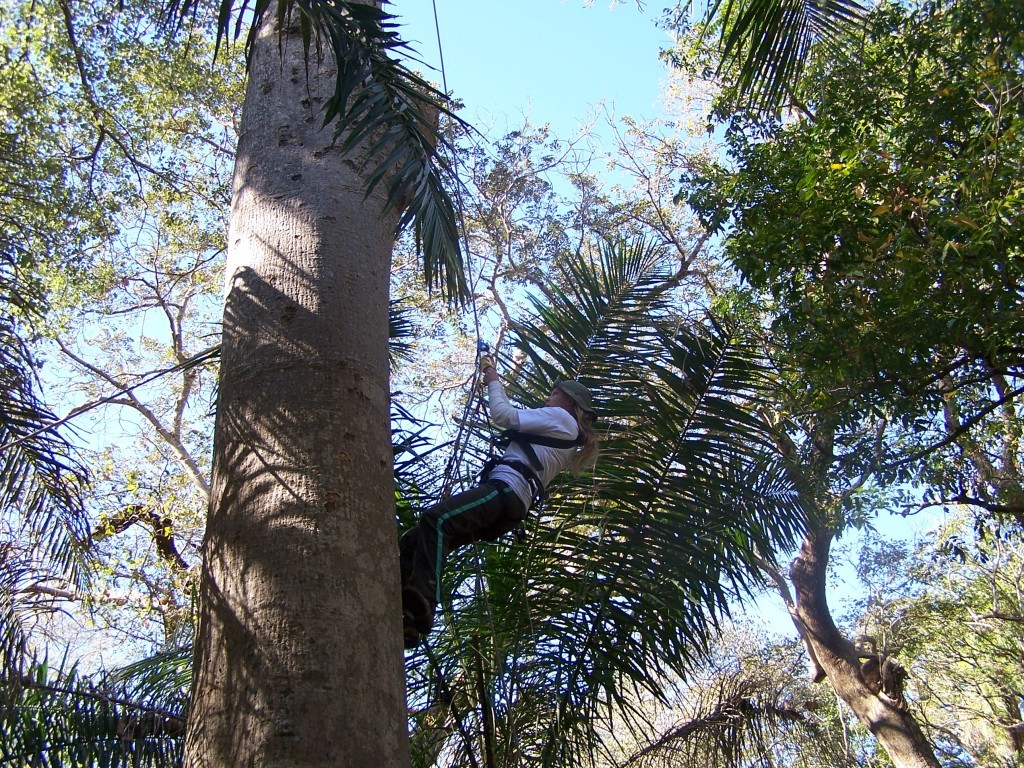
Cezar really knows his birds, every time we passed any bird (or mammal), he would tell Julianne what number it was in the field guide and she would point it out to me so I could see what it was in English. We saw lots of hawks, toucans and water birds and a jabiru stork nest. And lots of parrots!
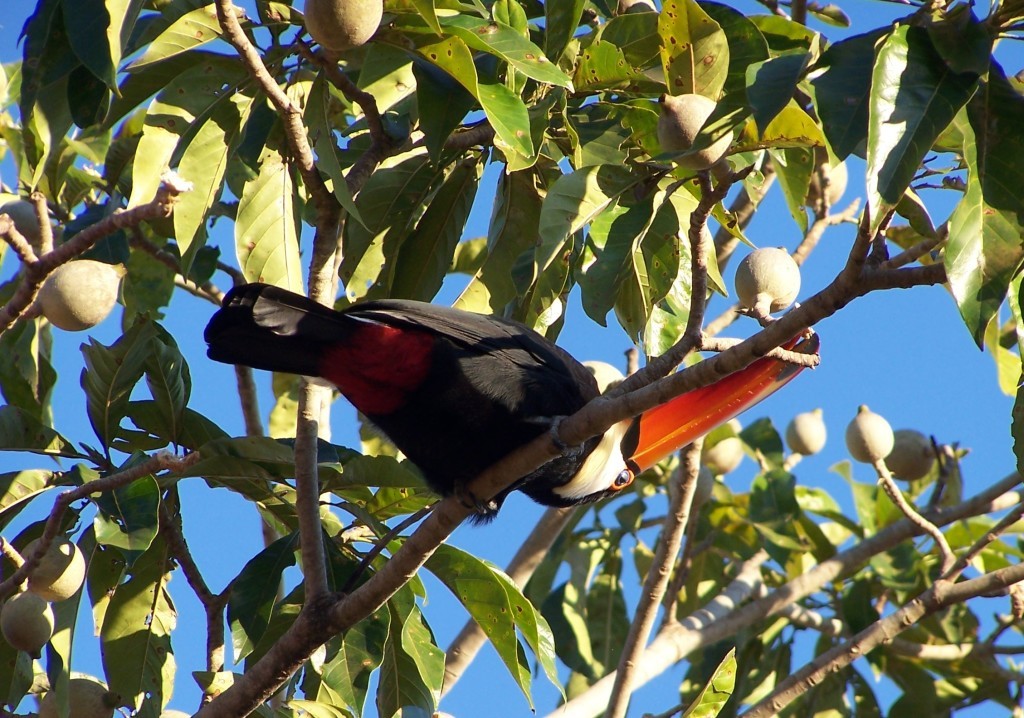
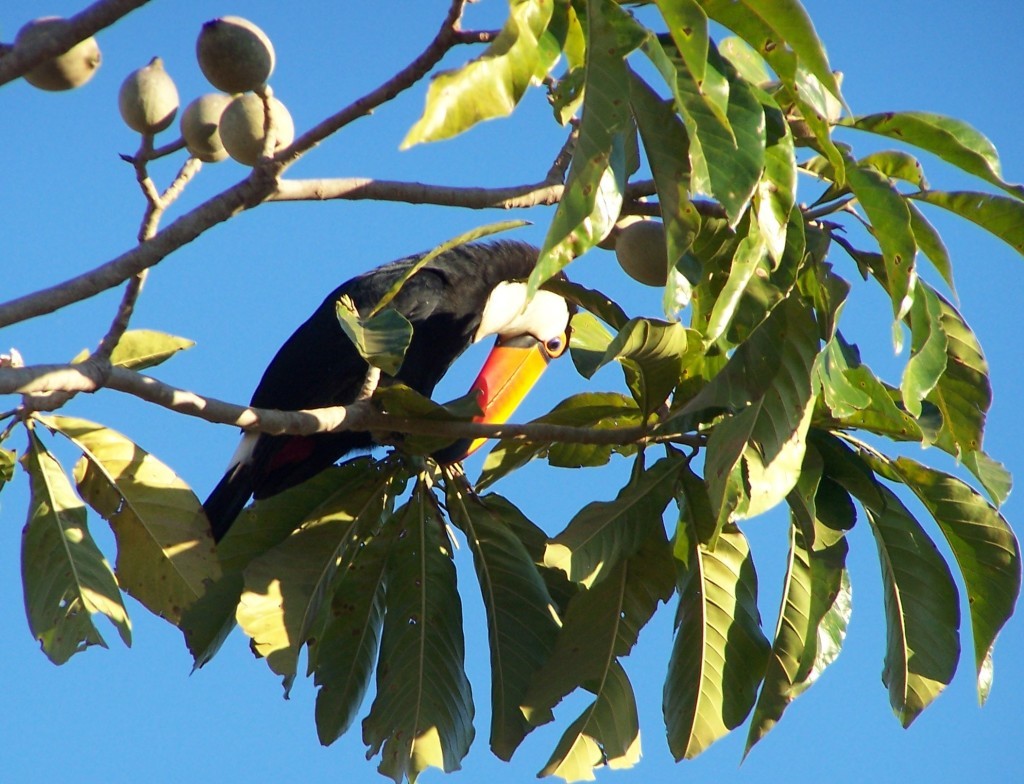
Flock of Nanday Parakeets.
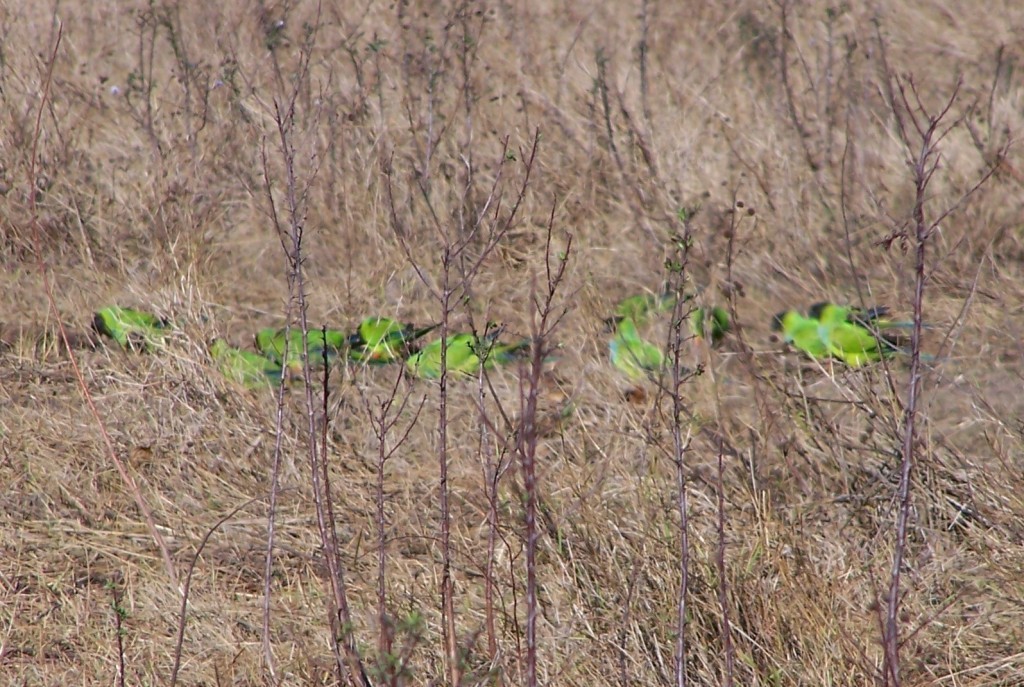
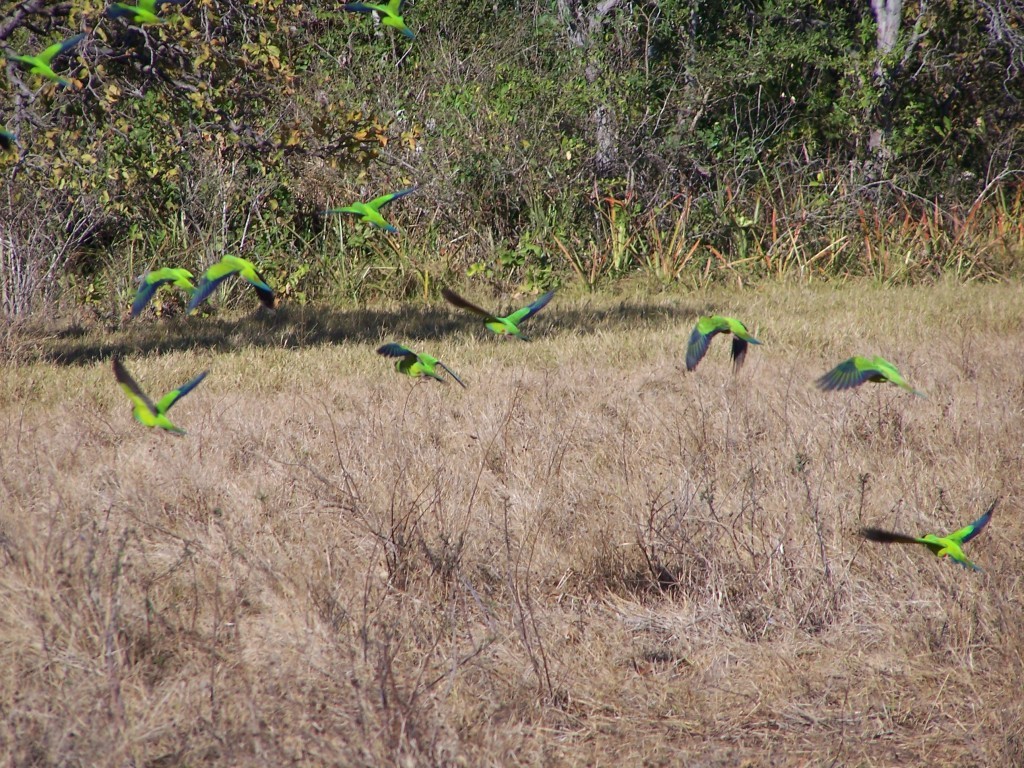
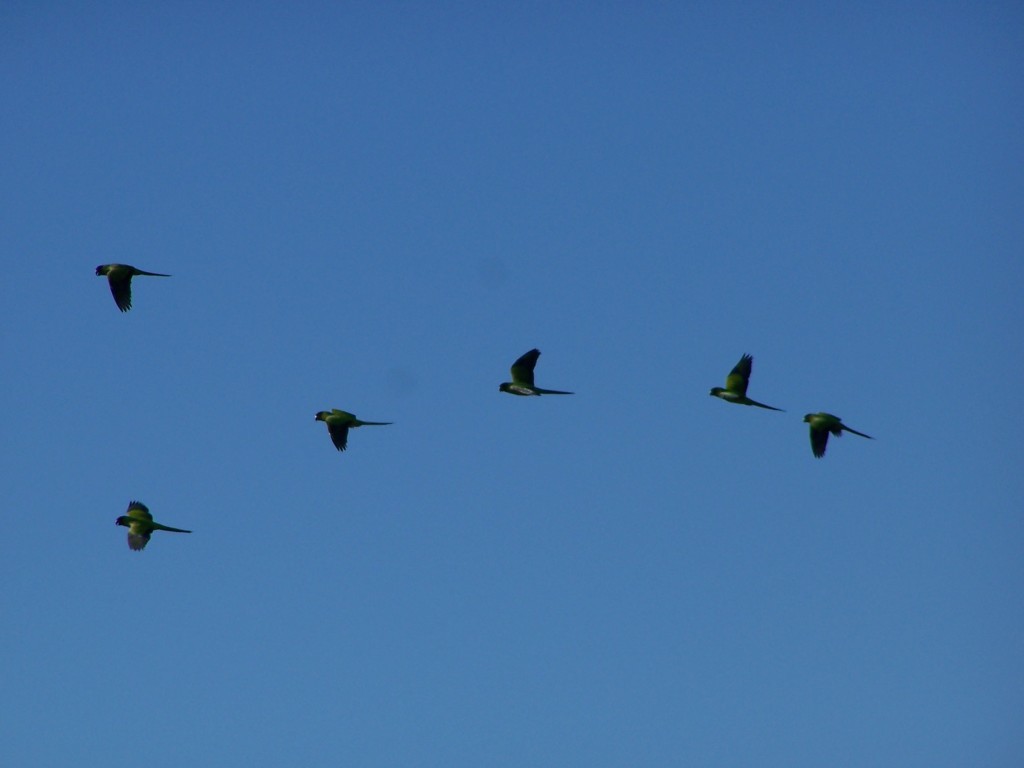
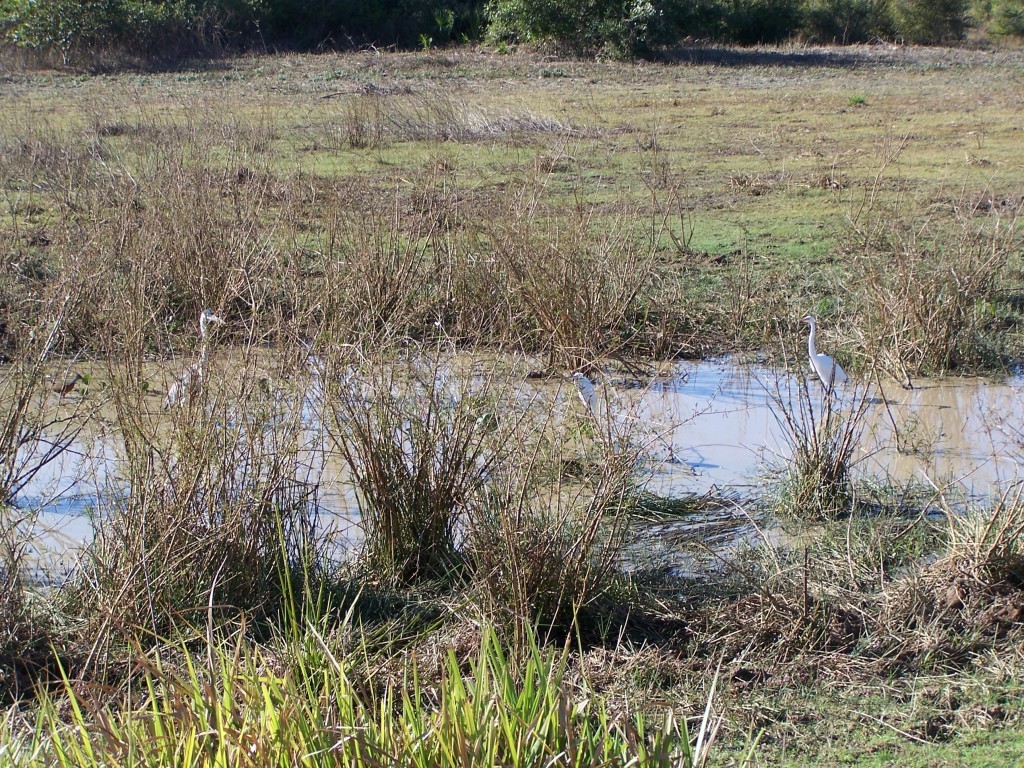
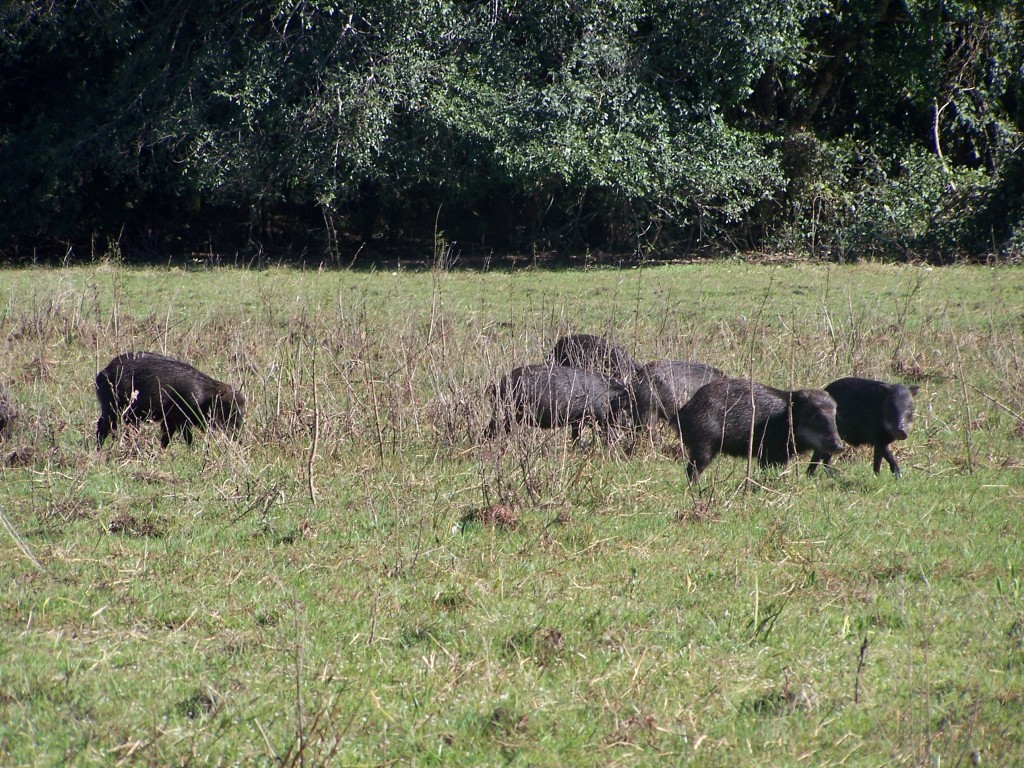
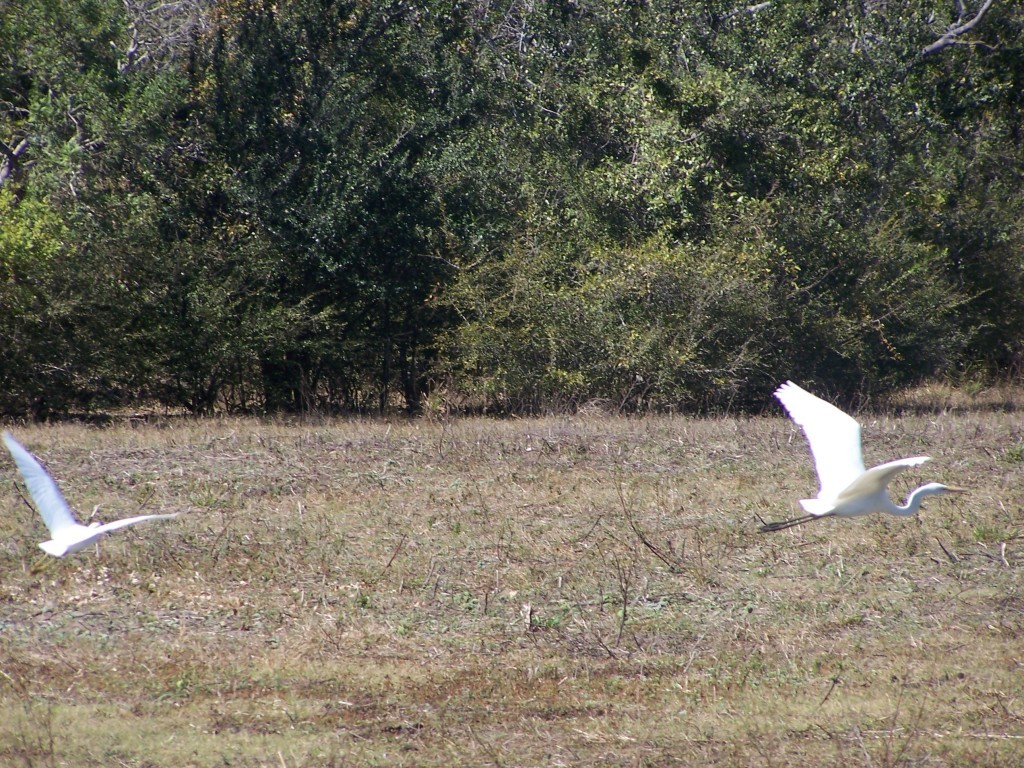
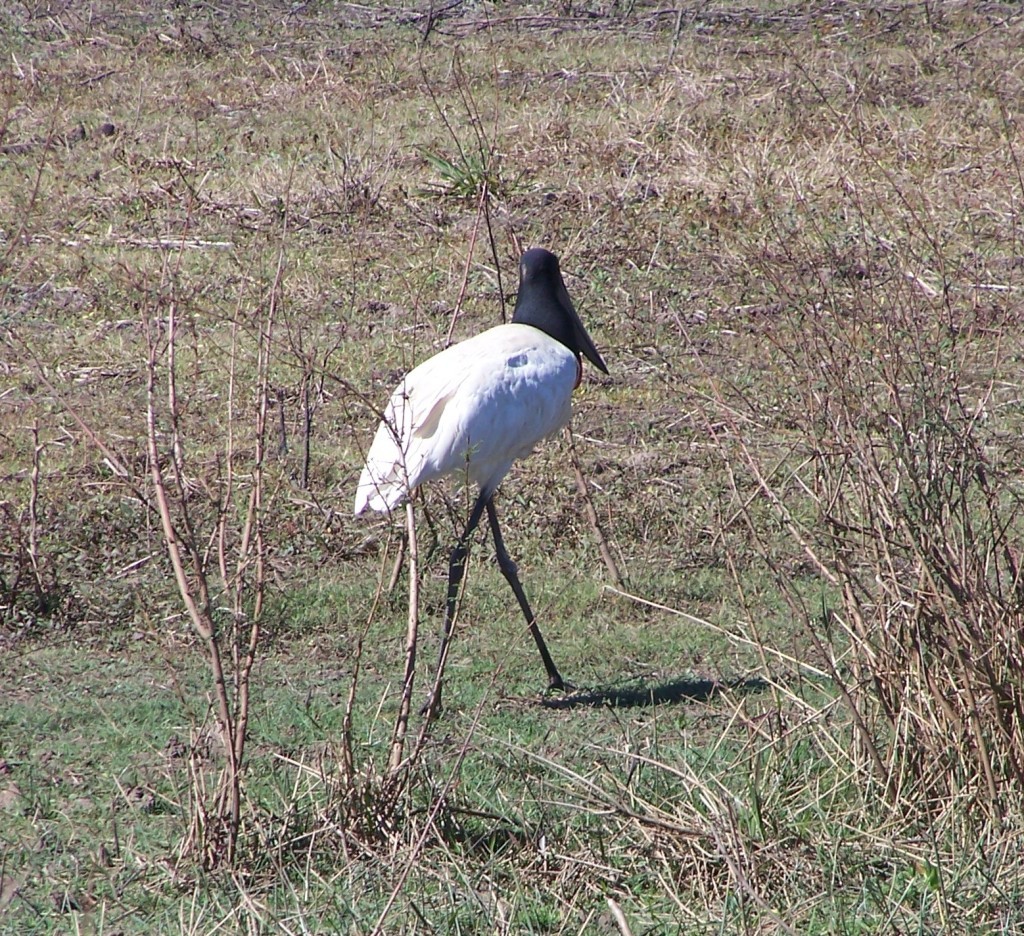
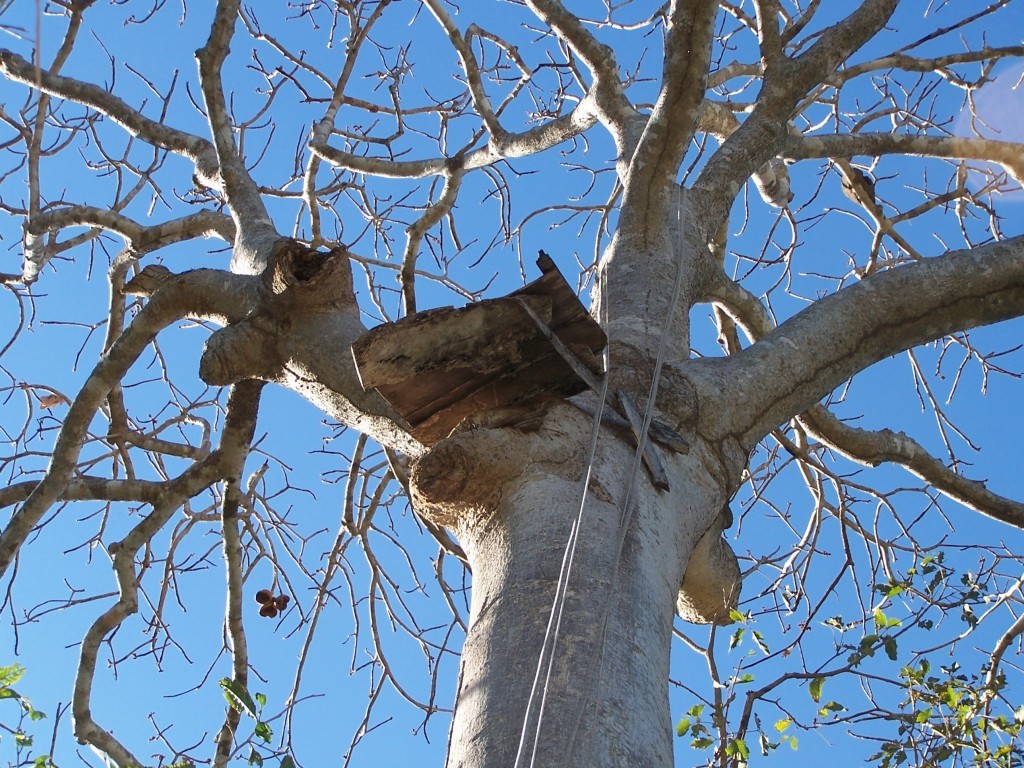
First we went to a nest occupied by two Hyacinths; Karla climbed up and saw no eggs so came back down. They have natural nest which are 95% in Manduvai trees. They have to compete for these nests with other birds and have lost many potential nests to deforestation so the Arara Azul people have constructed artificial nests. Their program is very successful as the macaw population was less than 1500 at one point and now there are over 6000 Hyacinths in the Pantanal!
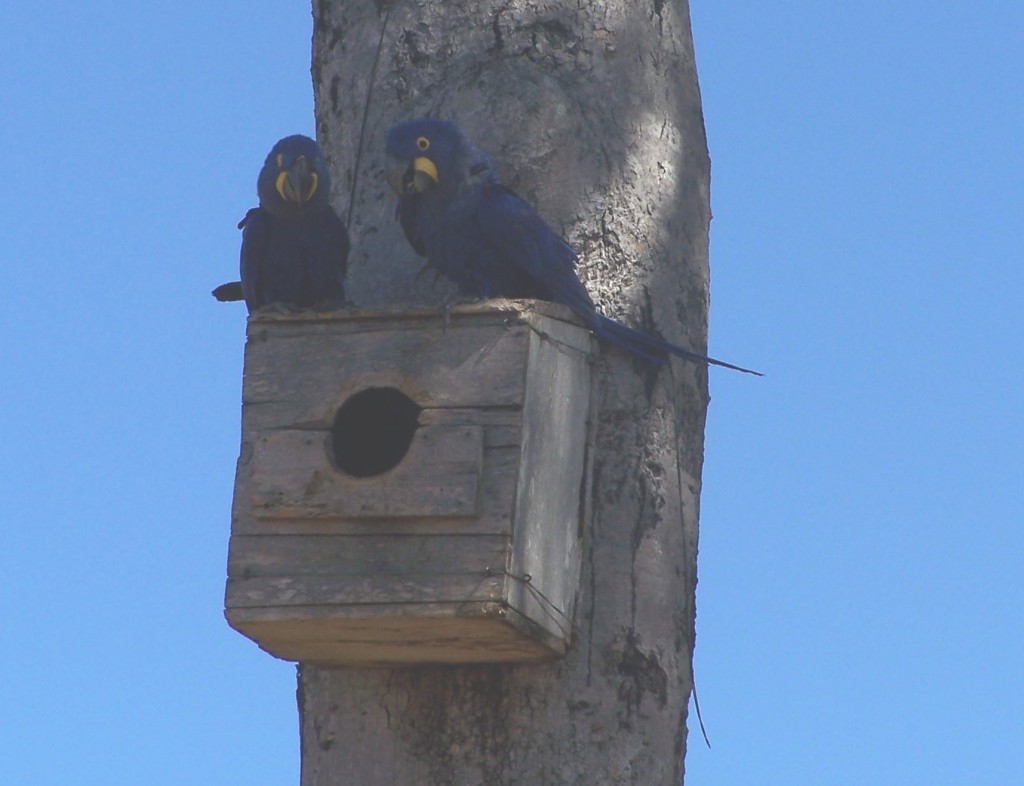
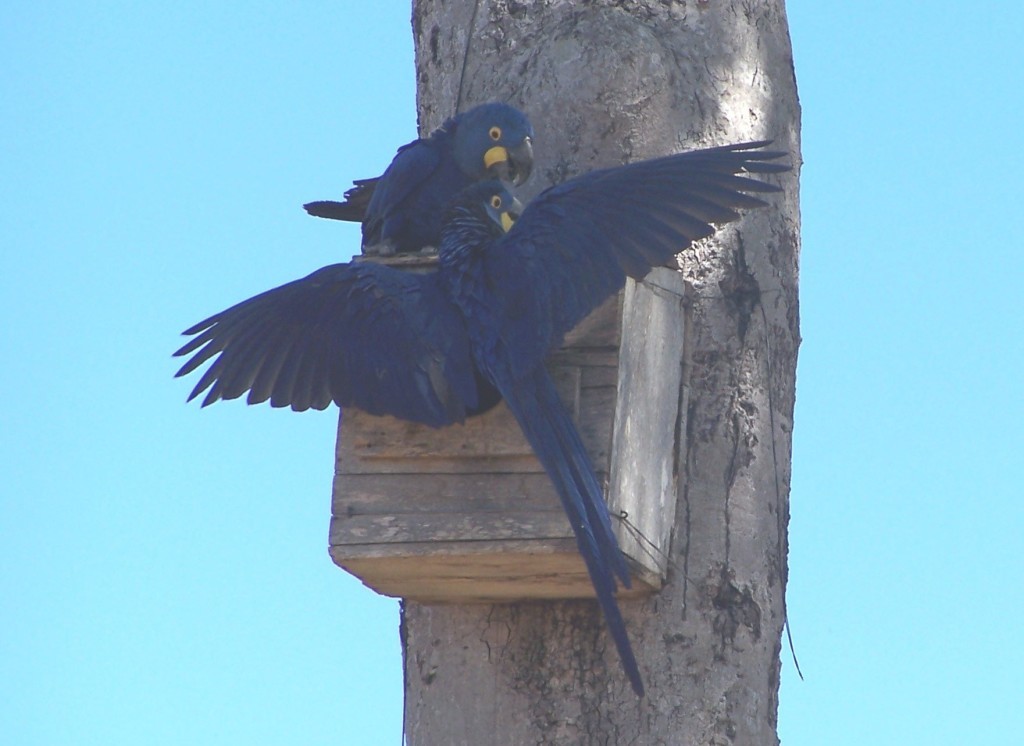
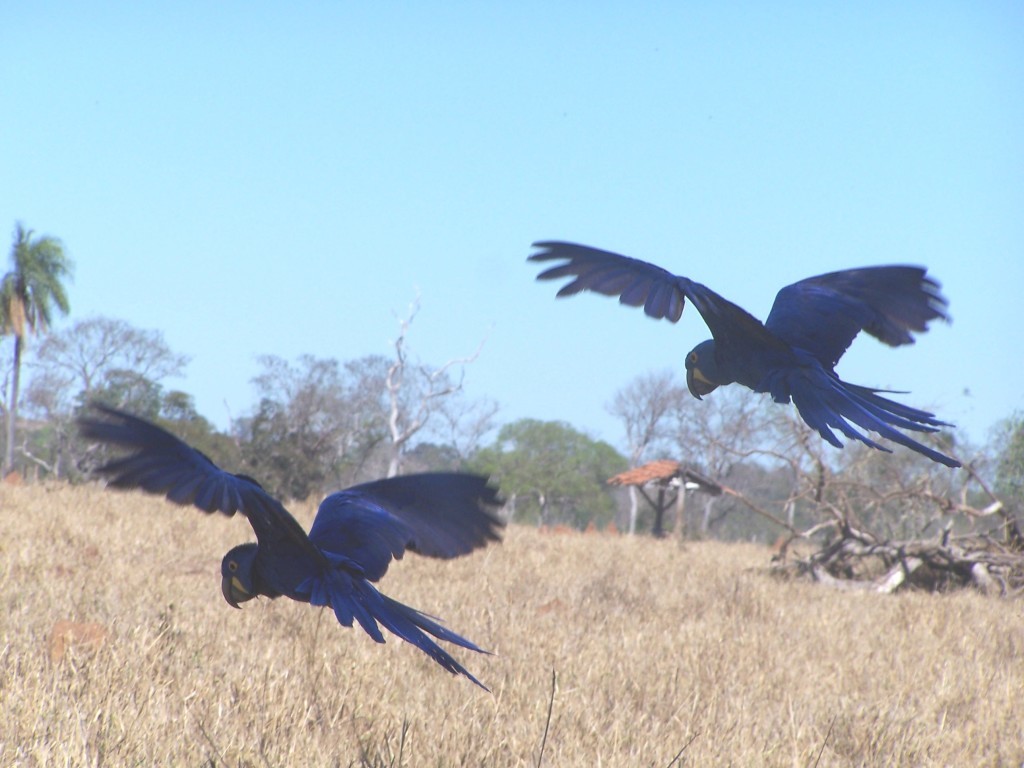
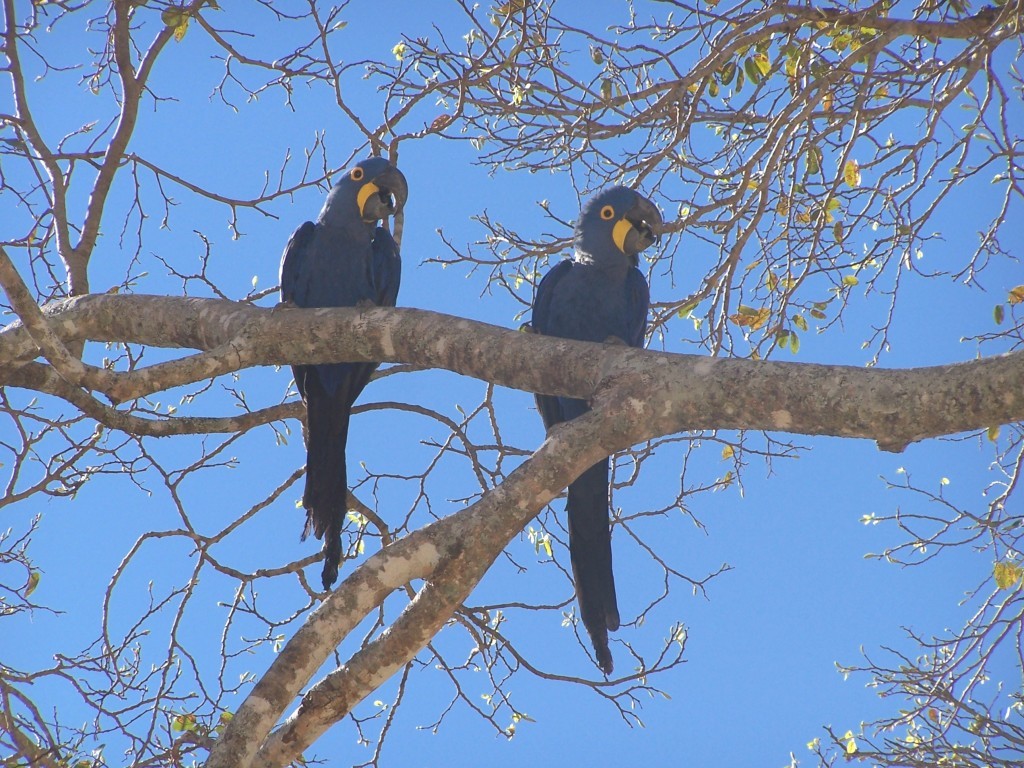
As we drove from one nest to another, the parents would fly off angrily and squawk their heads off complaining as the team took turns climbing the tree to see if there were eggs. Sometimes we got lucky!
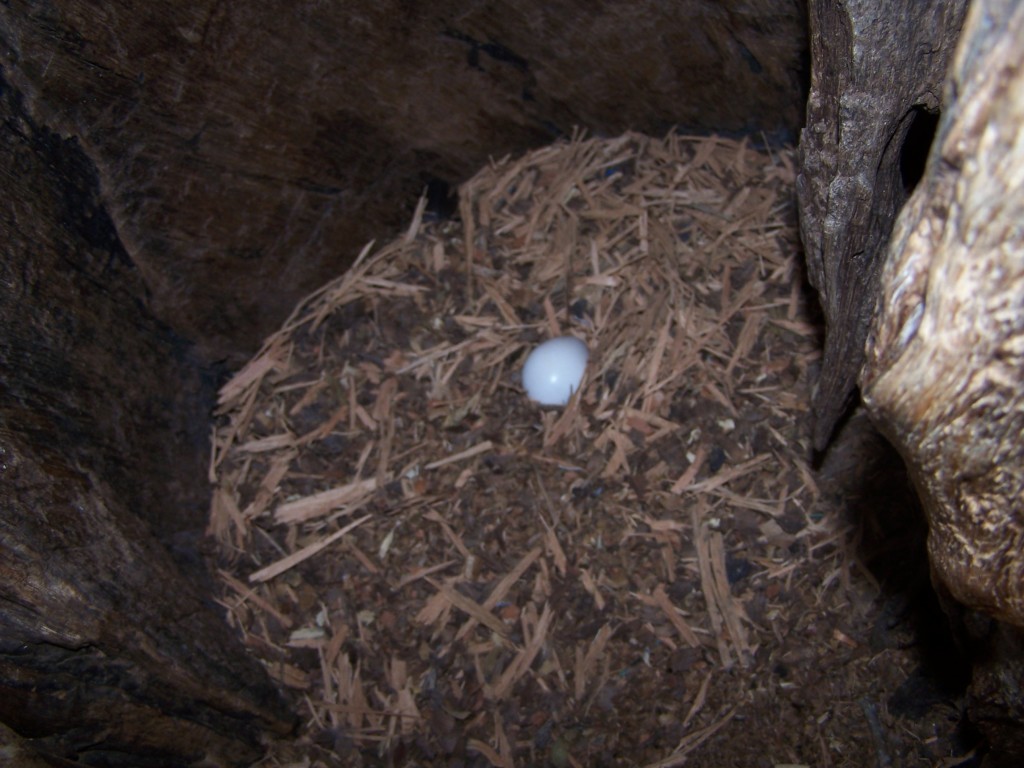
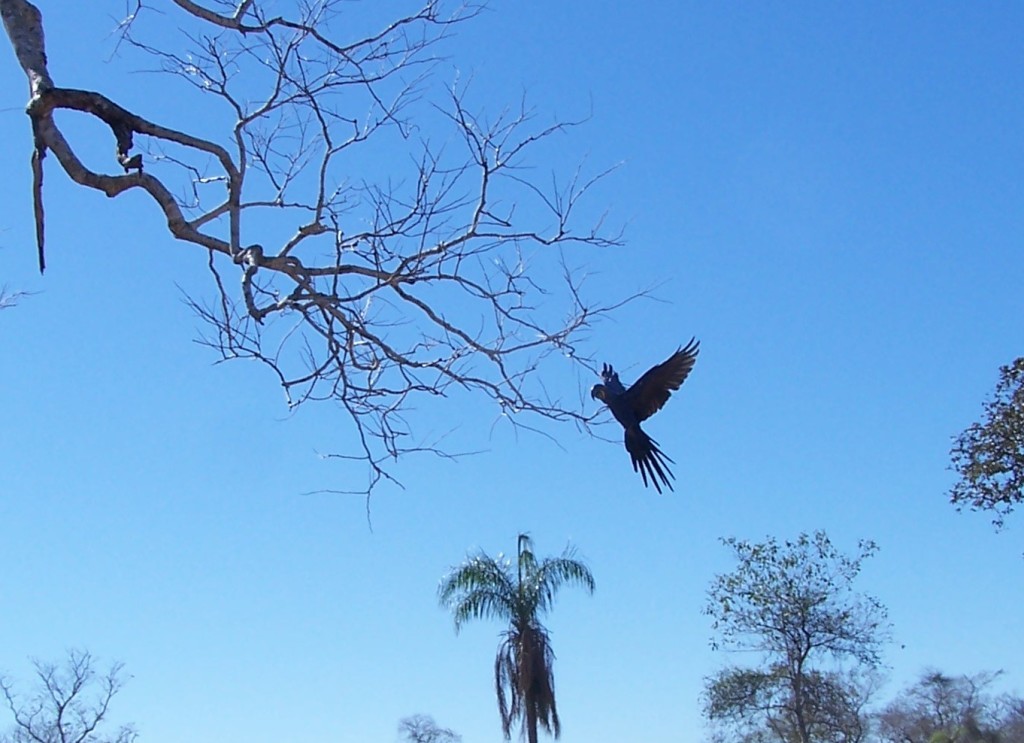
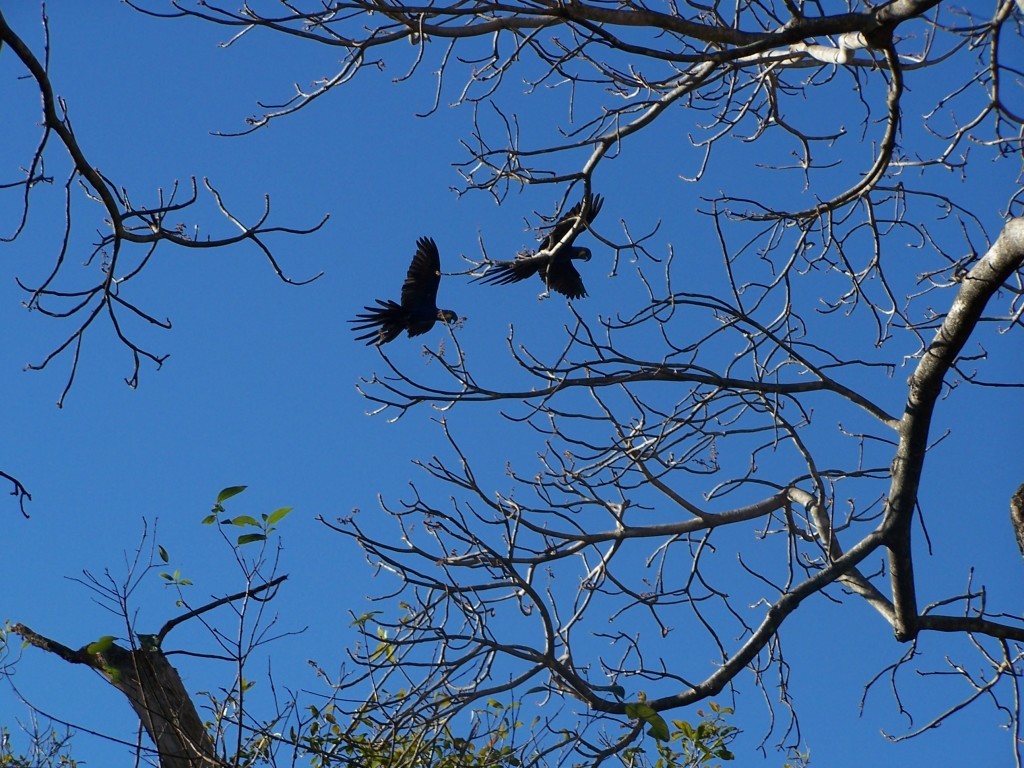
It was just the start of the breeding season now so many couples were preparing the nests with woodchips. Sadly some eggs the team had found before had been stolen by predators.
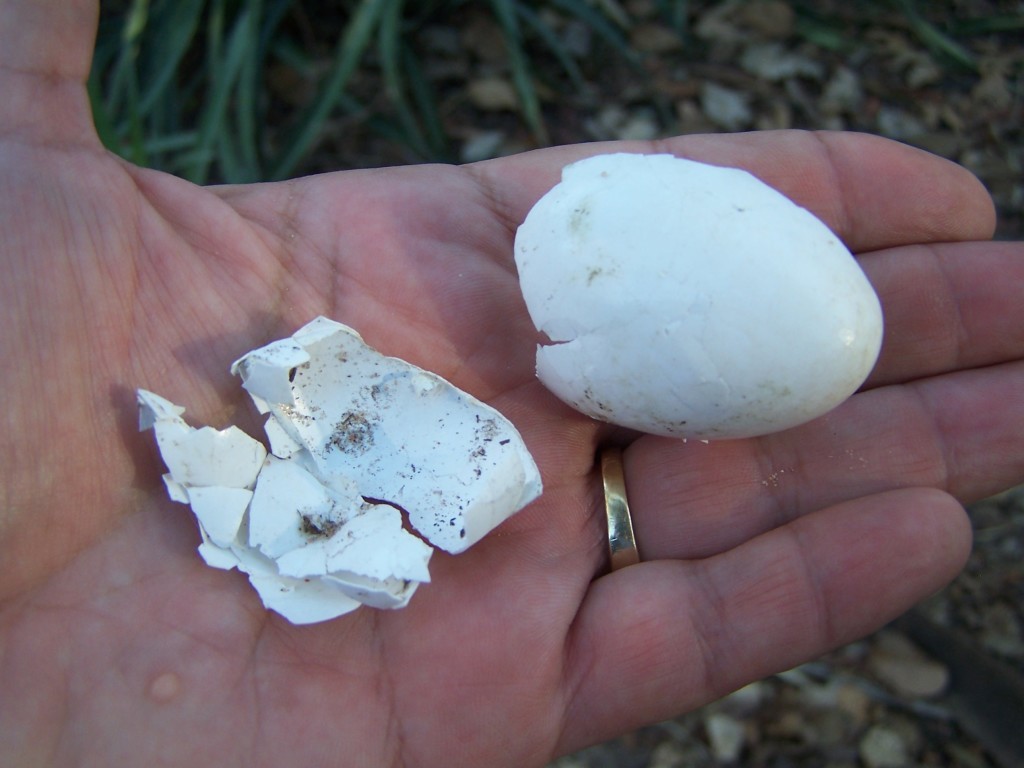
We saw several Blue-fronted Amazons and some Yellow-collared Macaws.
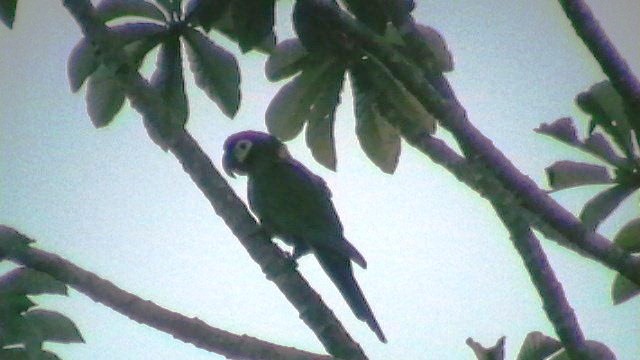
There is one pair of Greenwing Macaws who have a nest but weren’t around it so we didn’t see them. The highlight came at the end of the day when the team inspected a nest that was known to have eggs in it and found two baby Hyacinth chicks!
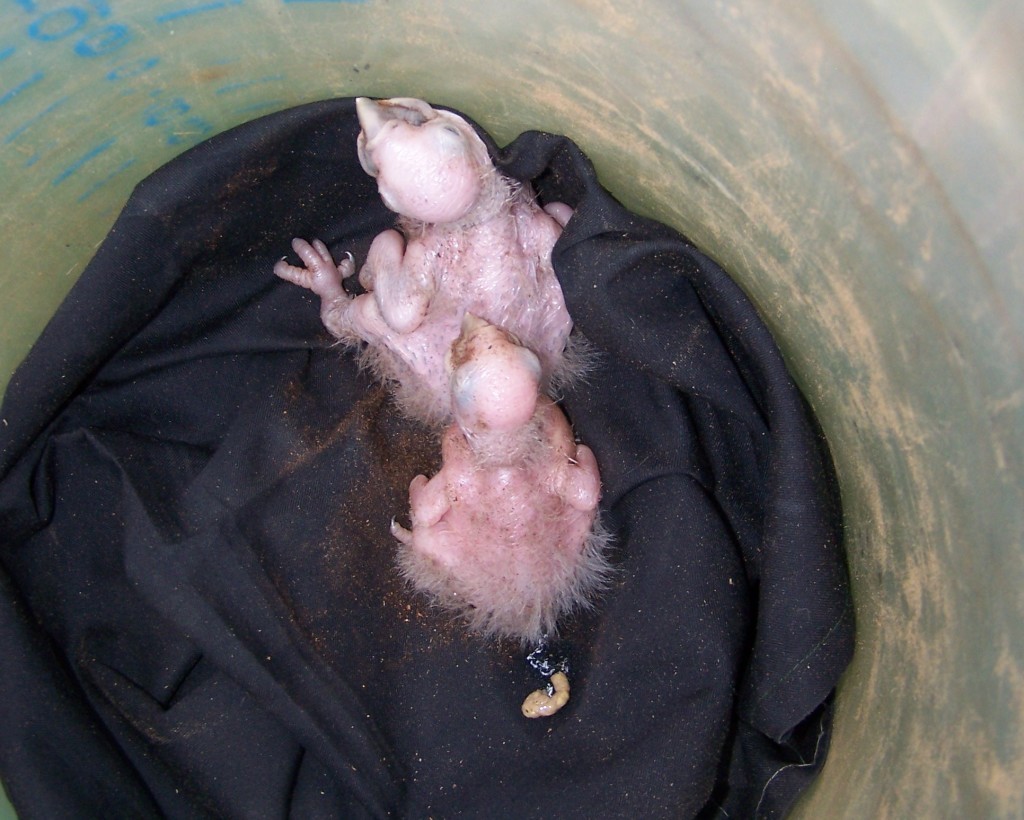
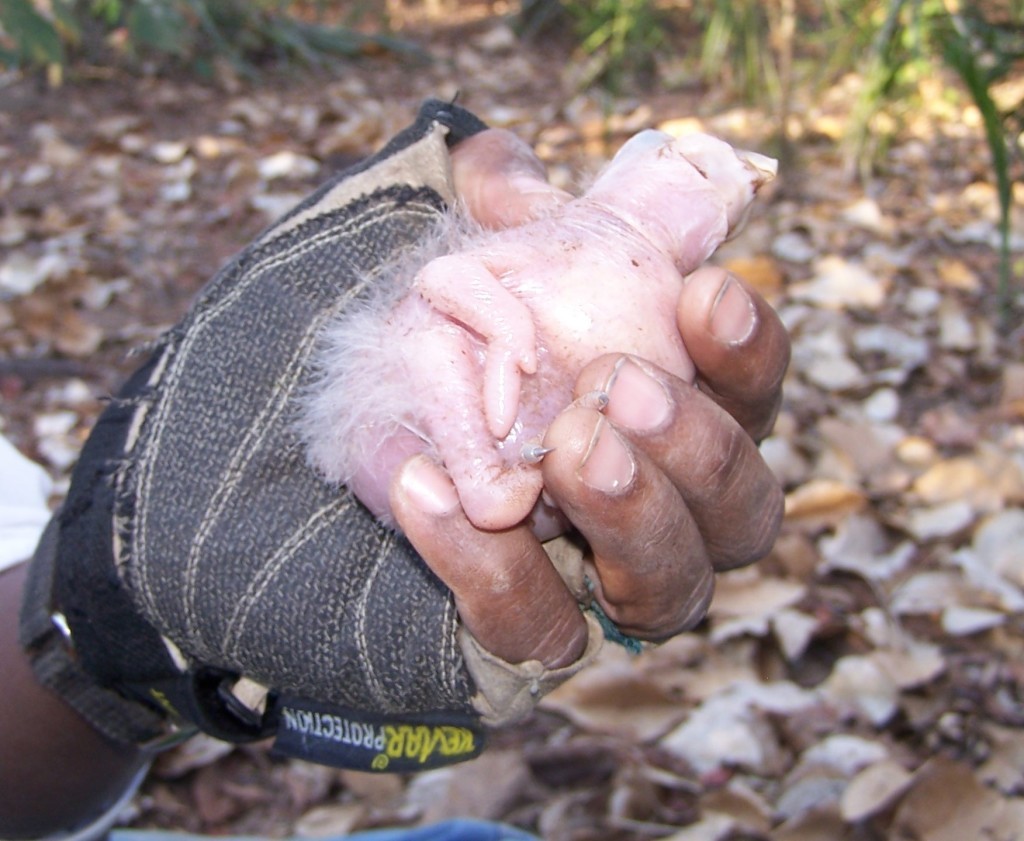
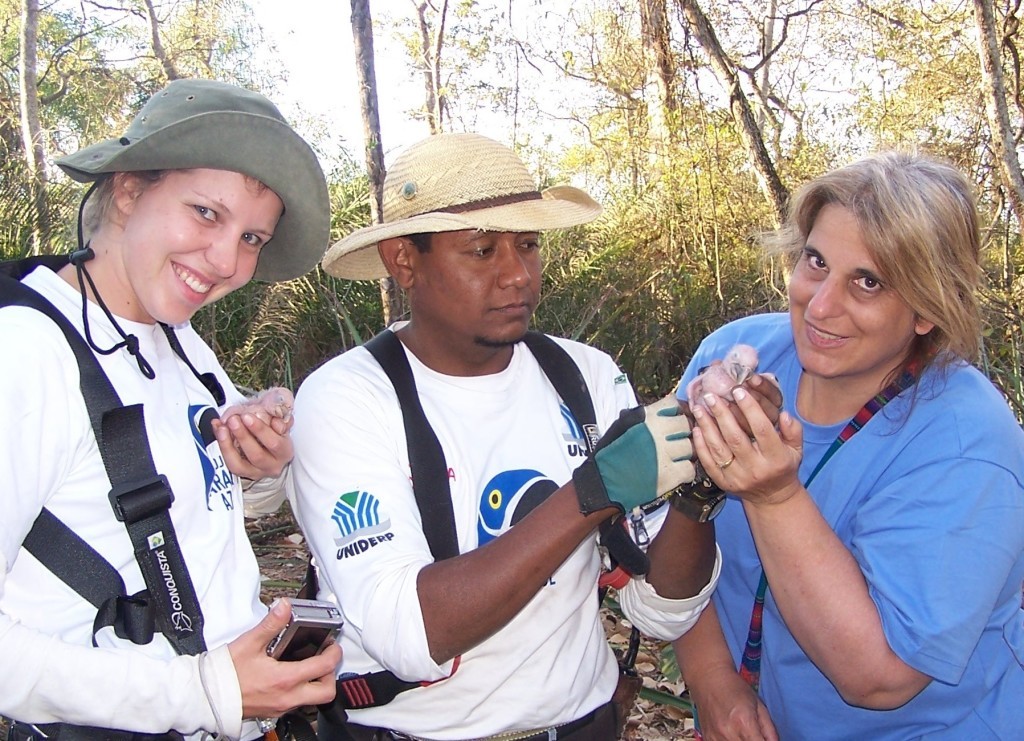
After the day’s work, we returned to the Arara Azul office and Julianne showed us the usual slide show they show normal tourists but we had missed because we weren’t on the normal tour.
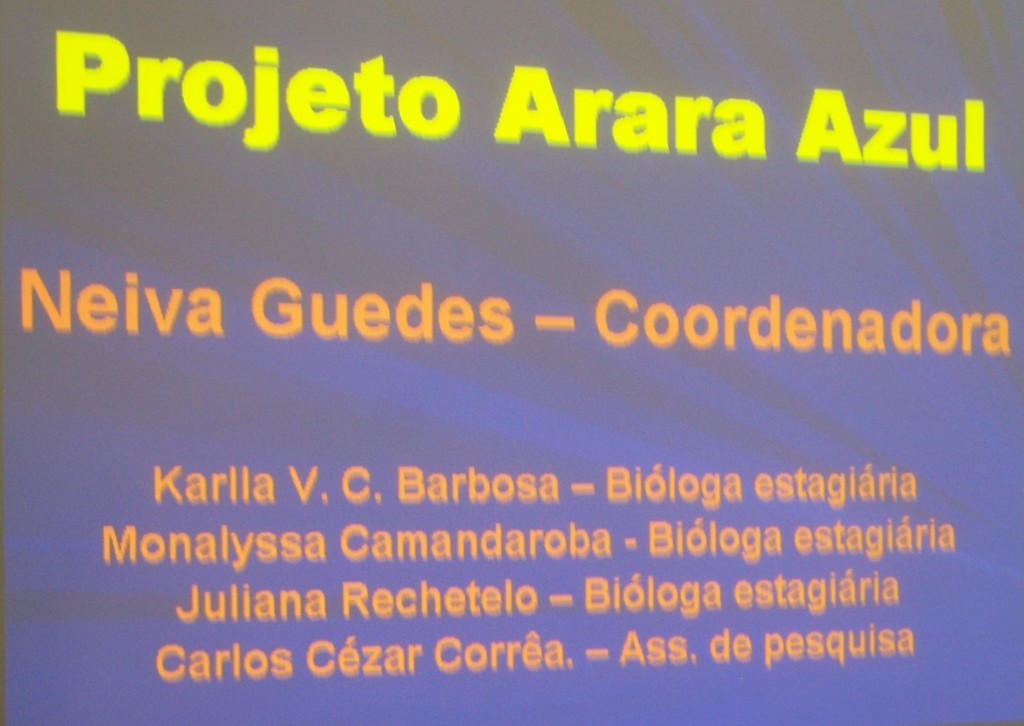
It tells about the Hyacinth Macaw, the Project and what we can do to help. Don’t buy illegally imported birds stolen from the wild. Don’t buy products made with feathers (like this one found in a Rio hotel) from Macaws and Parrots as the birds are either killed to get the feathers or so badly injured, they die anyway.
They have a gift shop which helps support the project but unfortunately they don’t take credit cards (I wish I had known that before) so I bought just a few small things as much as I could. I really love this clay rosary with birds!

They were rehabilitating an injured Female Hyacinth they named Kris. She was rescued from certain death as a caiman (alligator) and caught her by the tail when she was either drinking or bathing in the lake. Thank God a cowboy was nearby and rescued her and brought her to the project to be rehabilitated. She had lost her tail and couldn’t fly or eat.
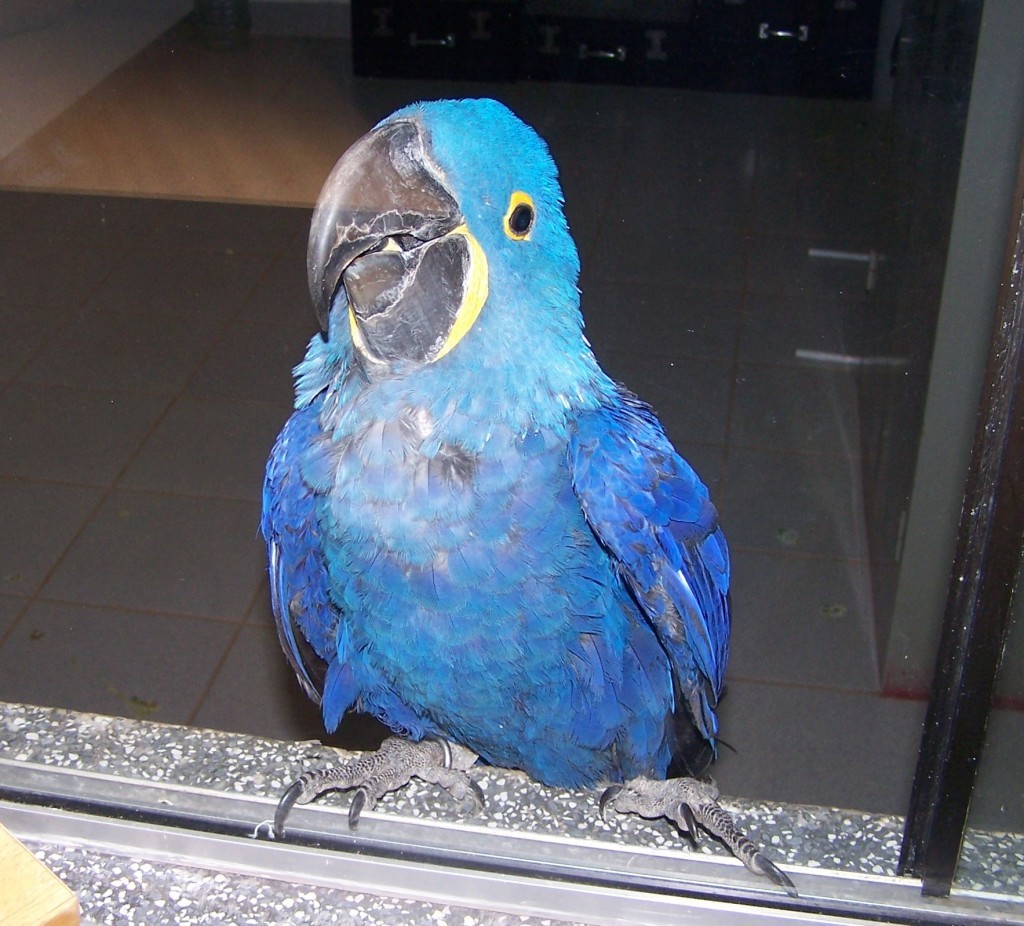
Now she is almost ready to be released back to the wild but she still needs to be able to crack the Acuri nuts by herself. I wanted to give her a big hug but they don’t encourage showing affection to Macaws that need to be released to the wild and they don’t want them friendly to humans. I did get to scratch her head a bit while one of the volunteers held her.
We rejoined the other tourists for dinner. They had done the usual lodge tours but they didn’t see half of what we did, I was so happy we went! After dinner there was a slide show about the Caiman resort which was very interesting.
